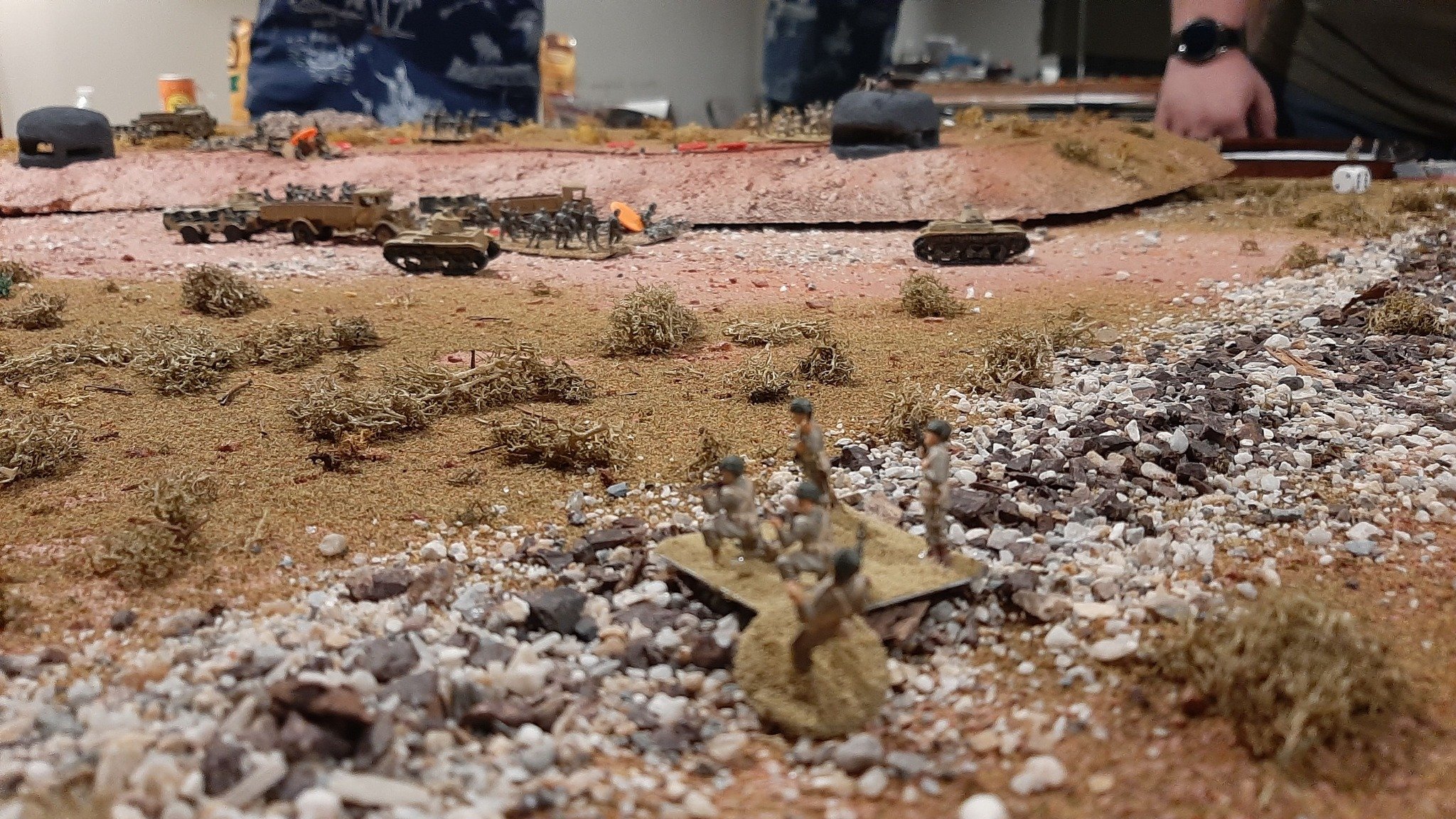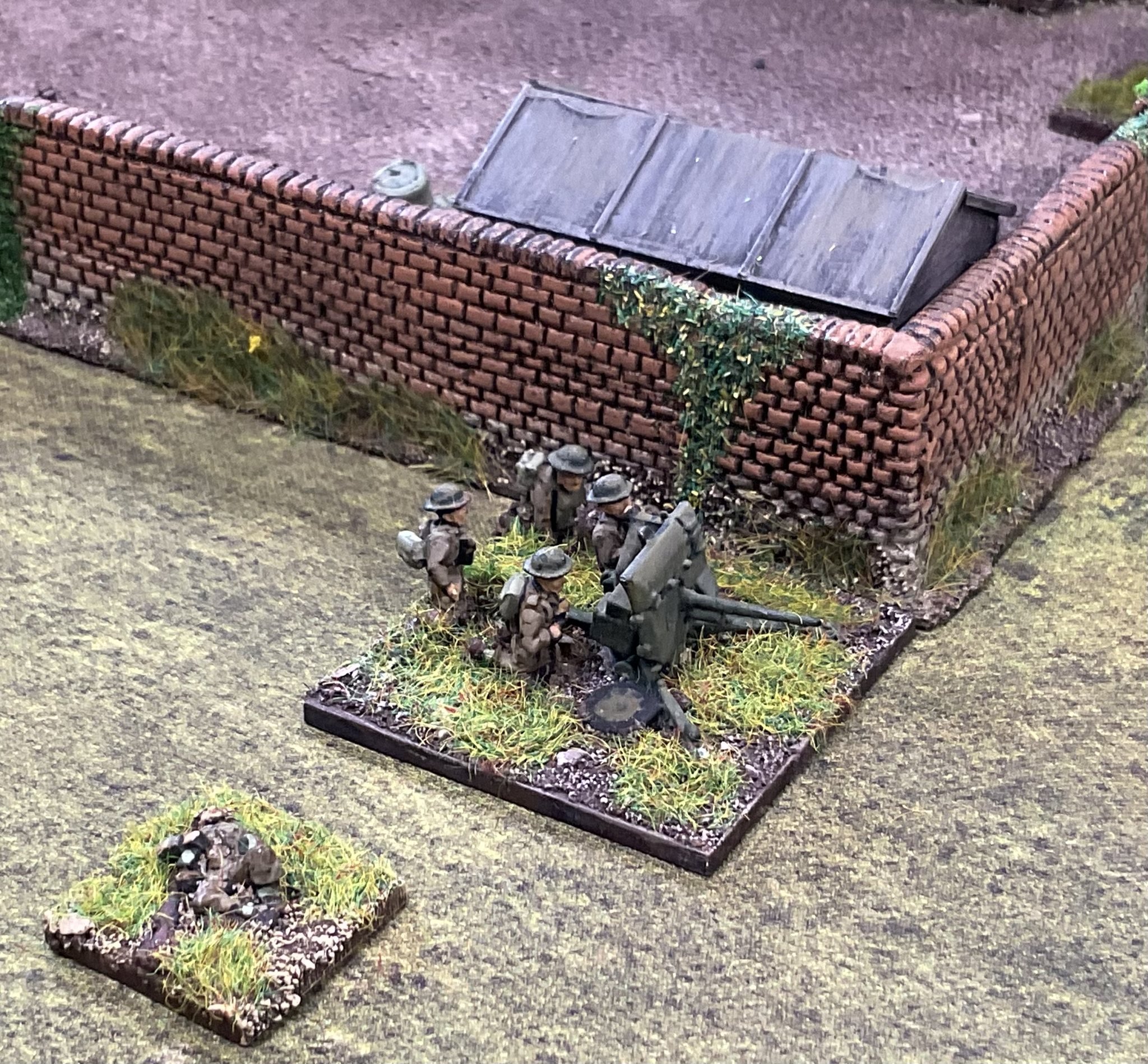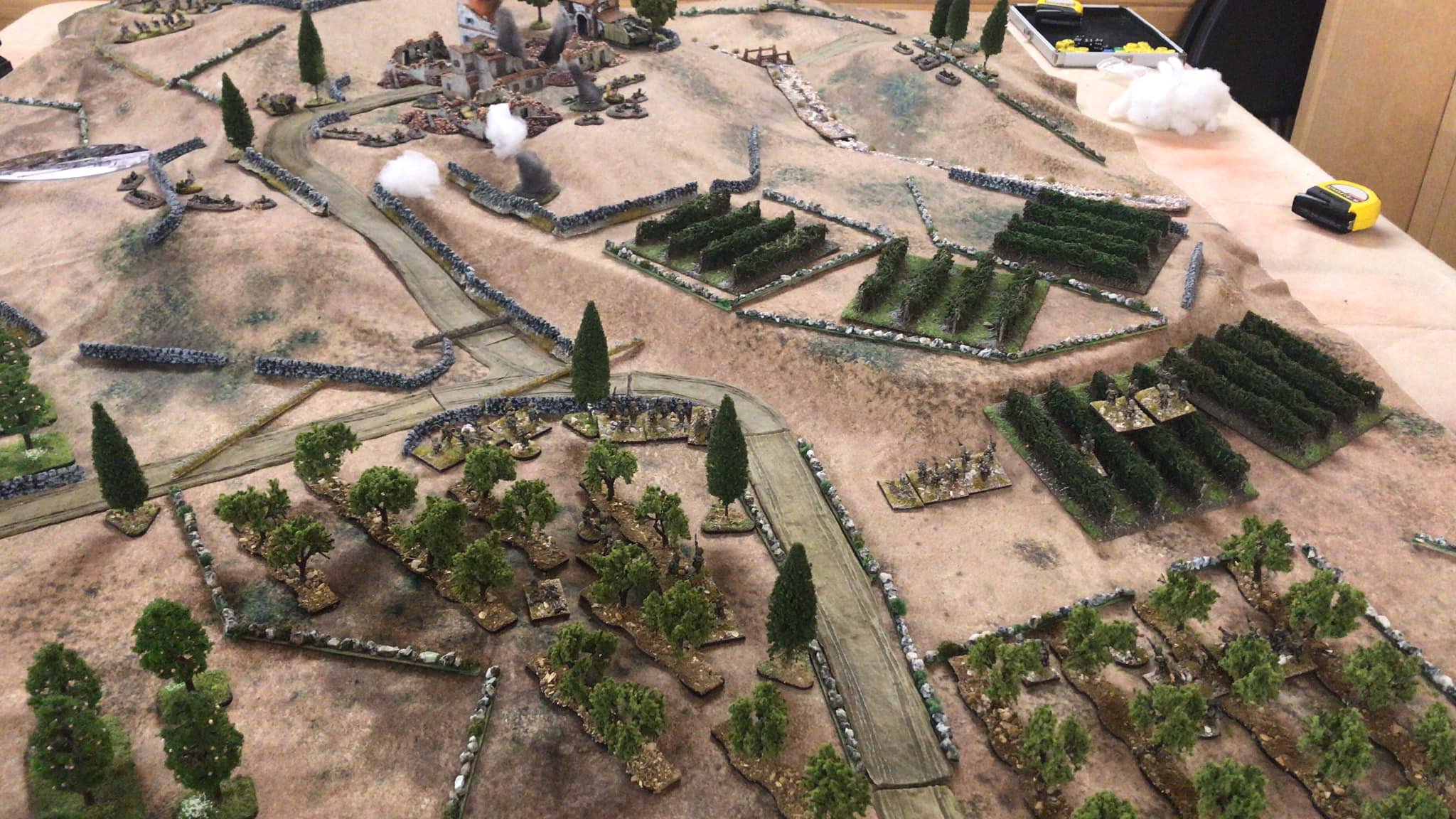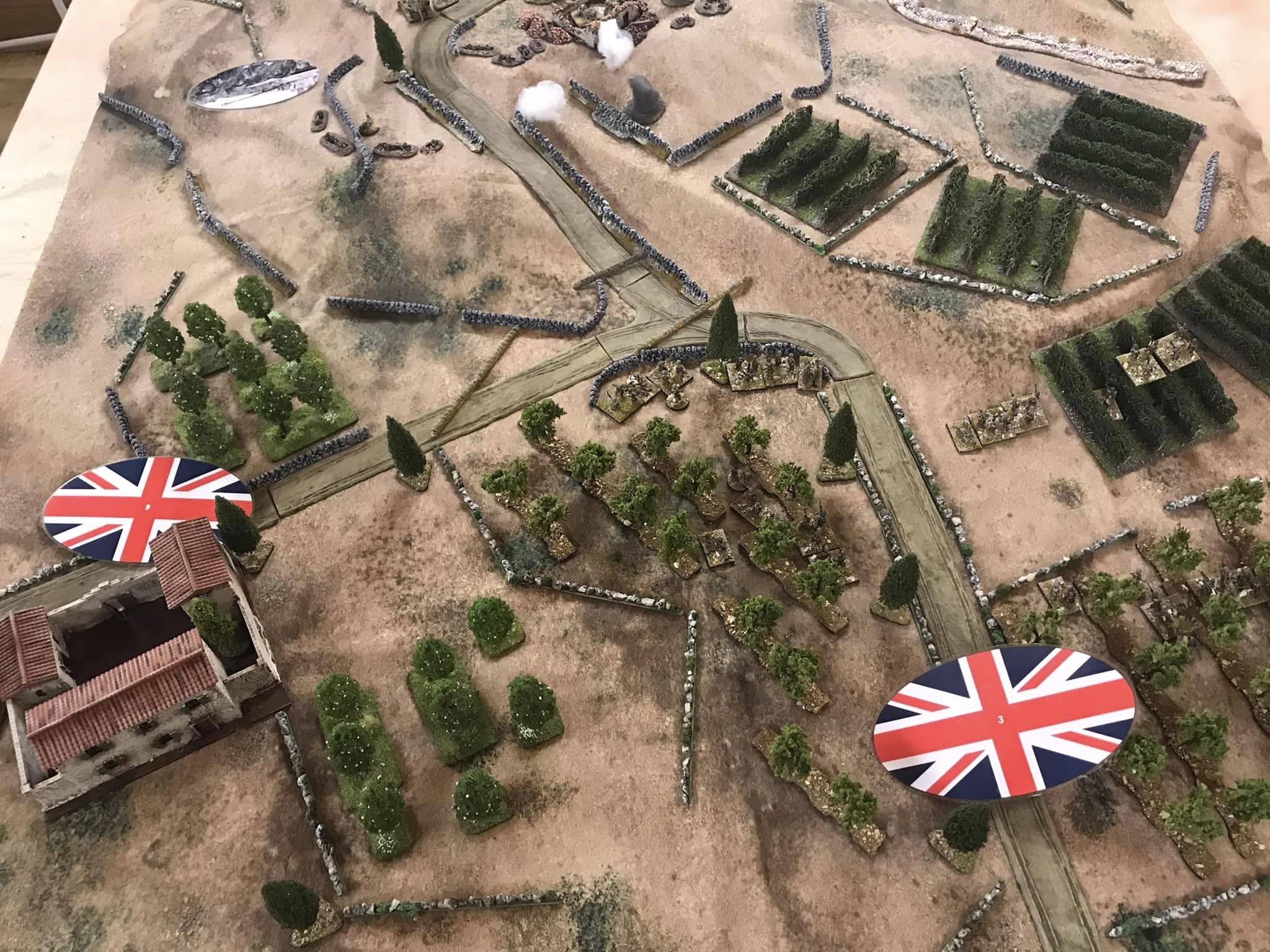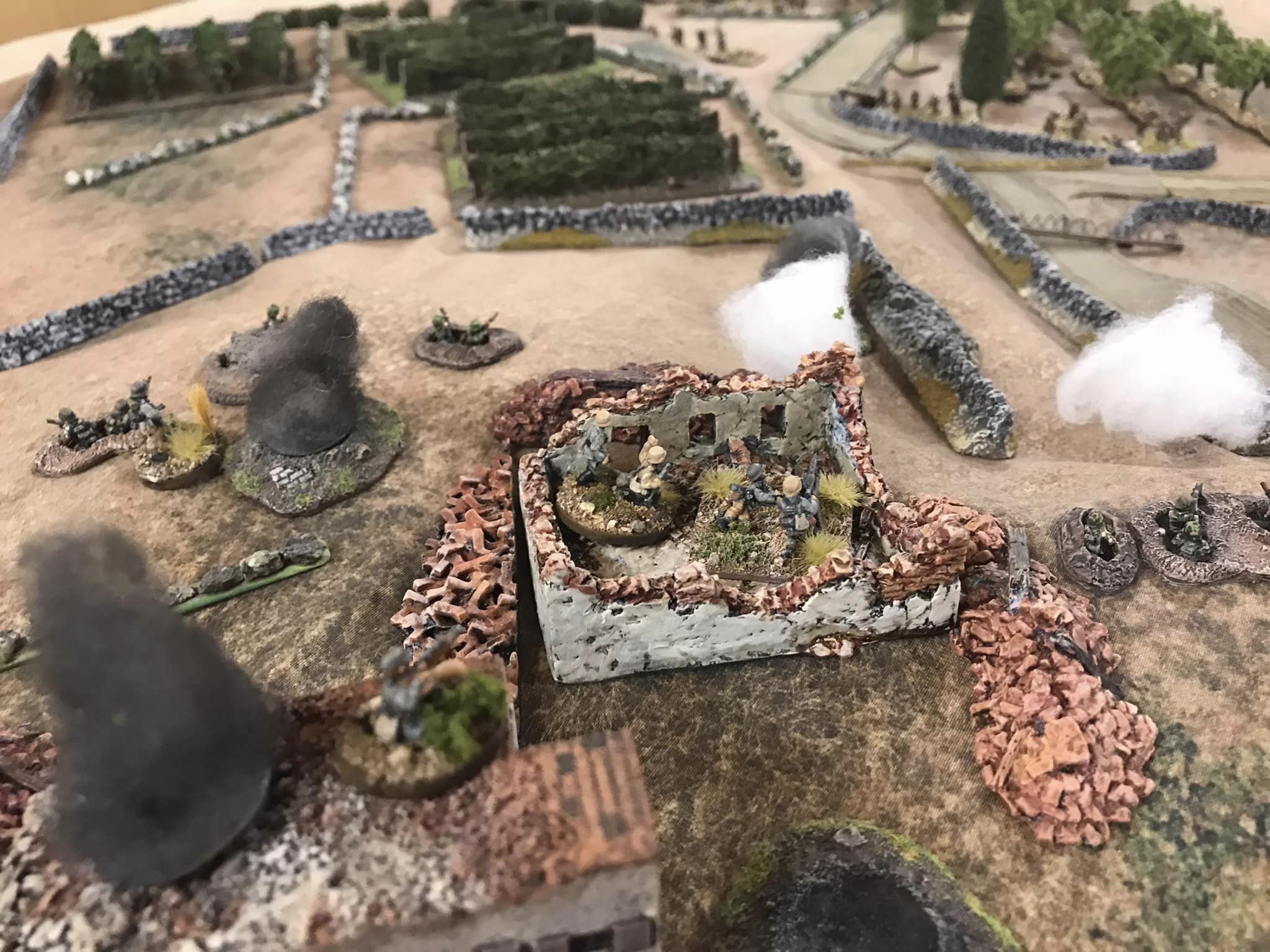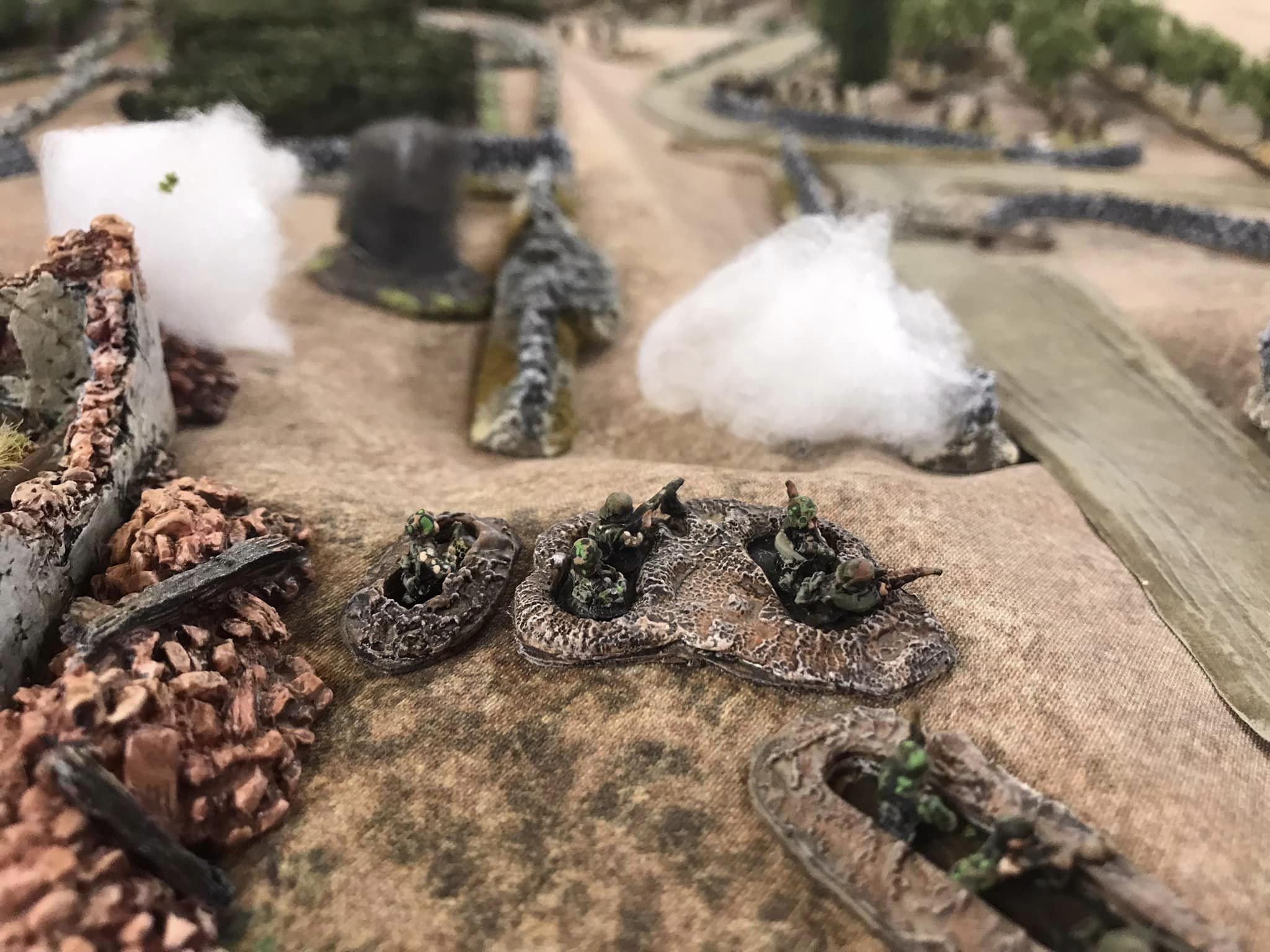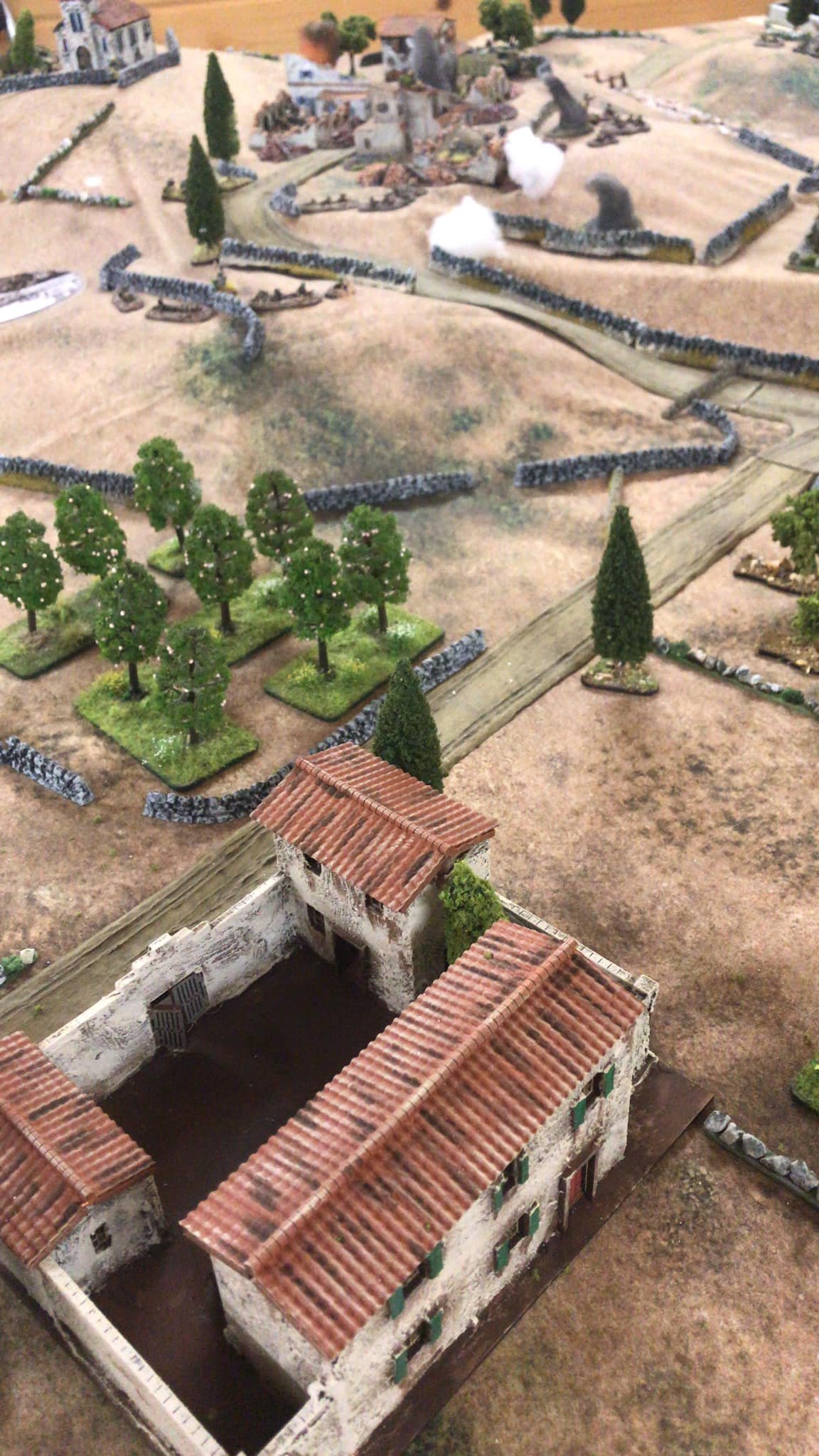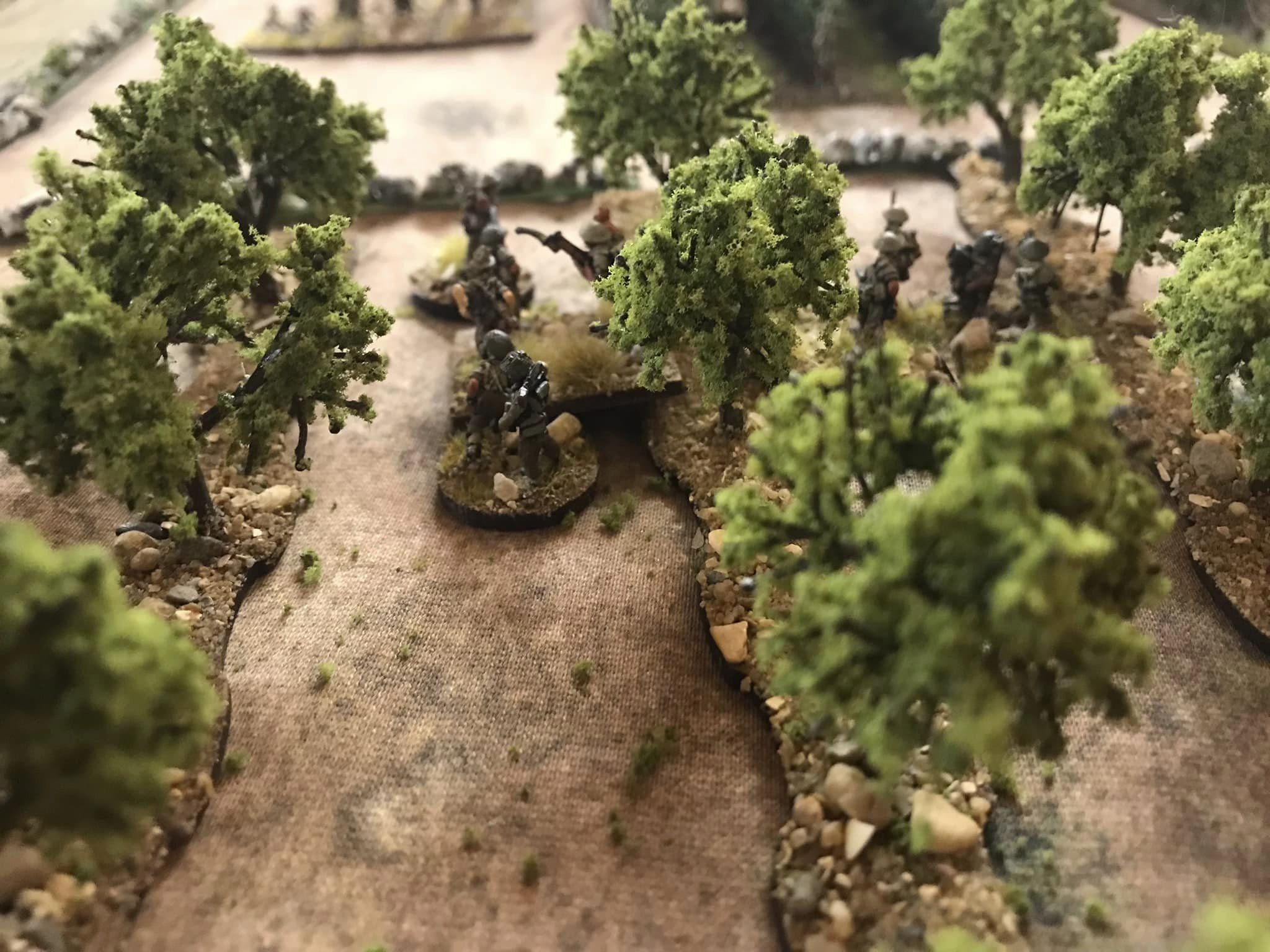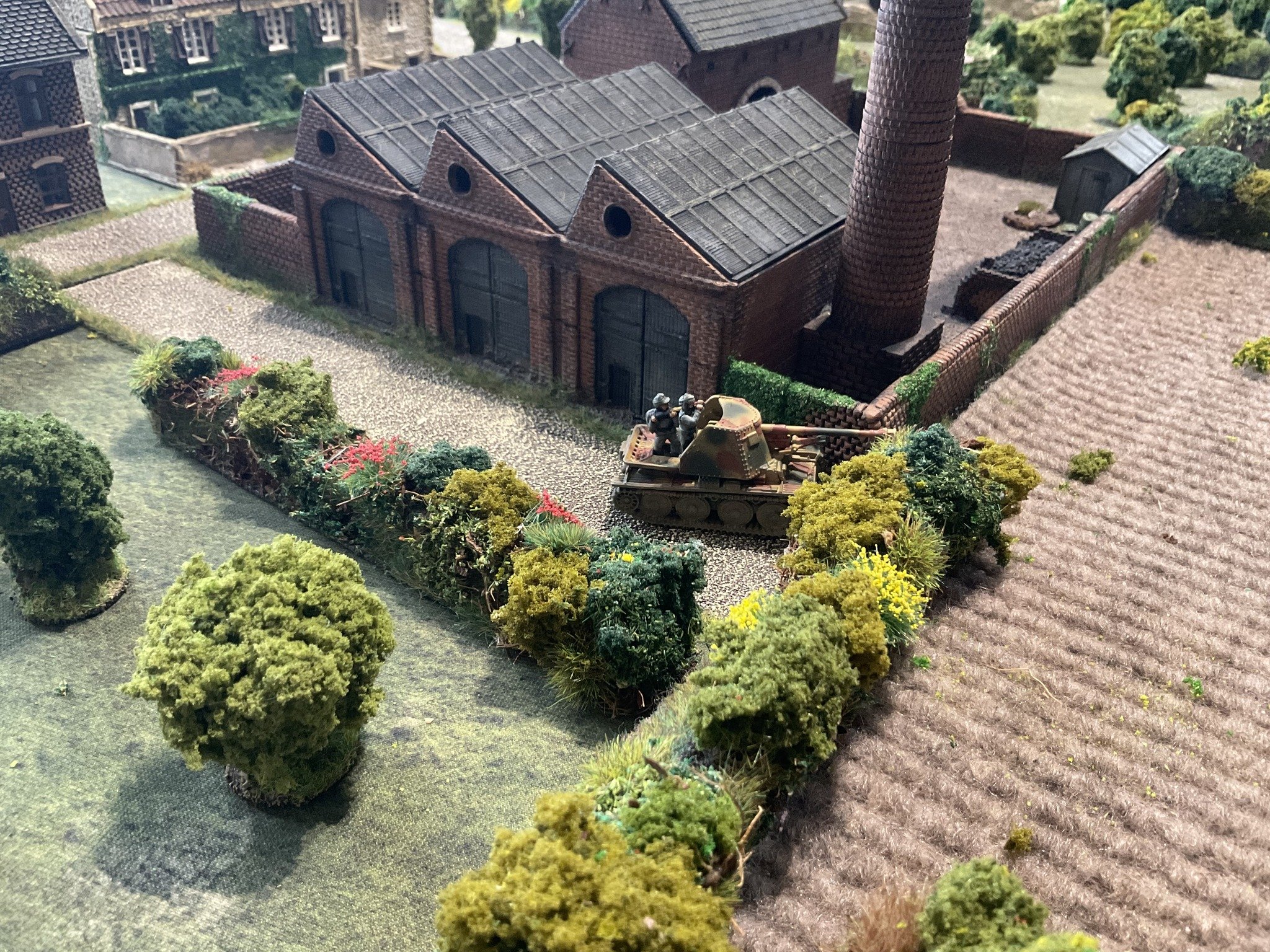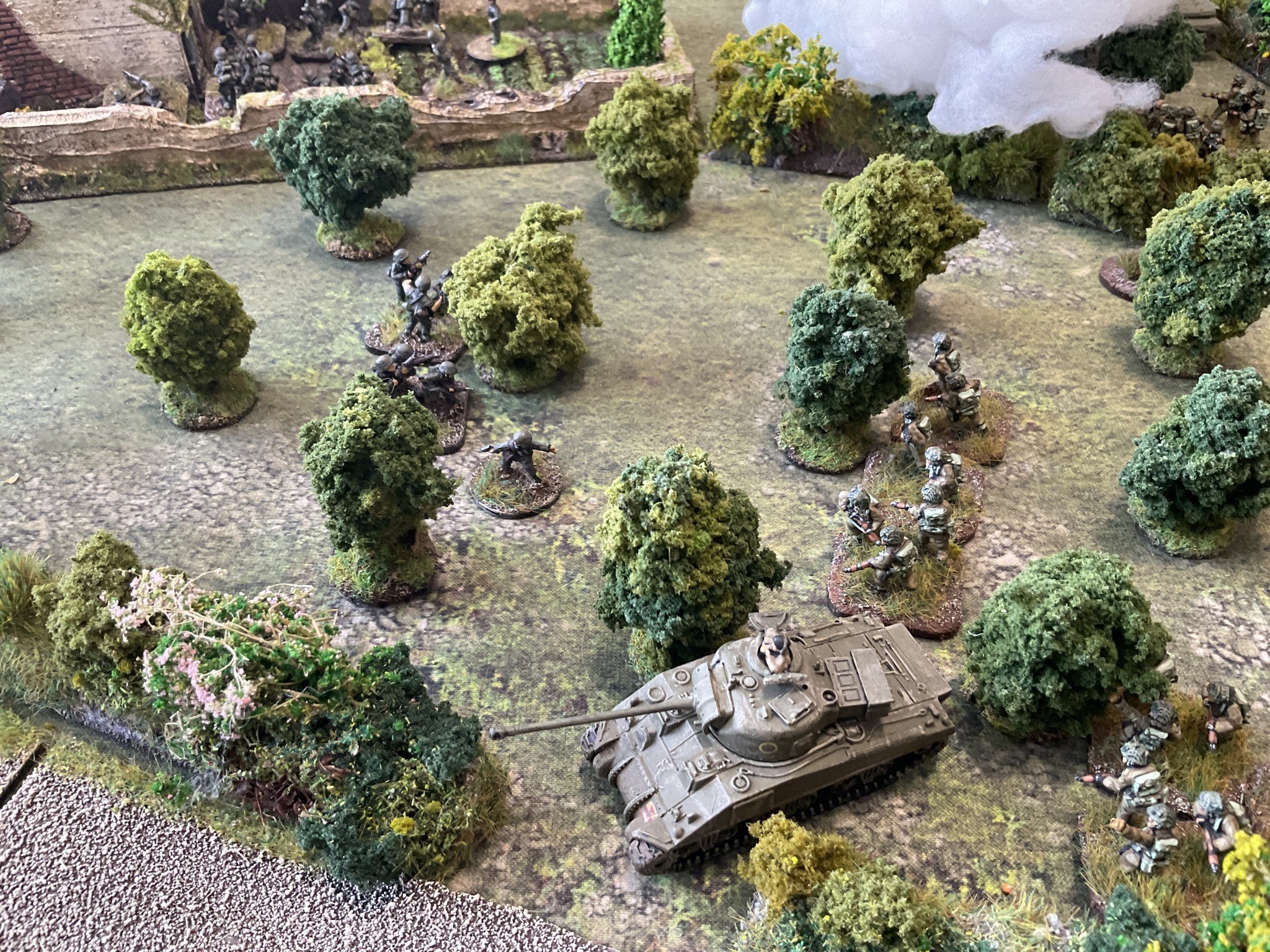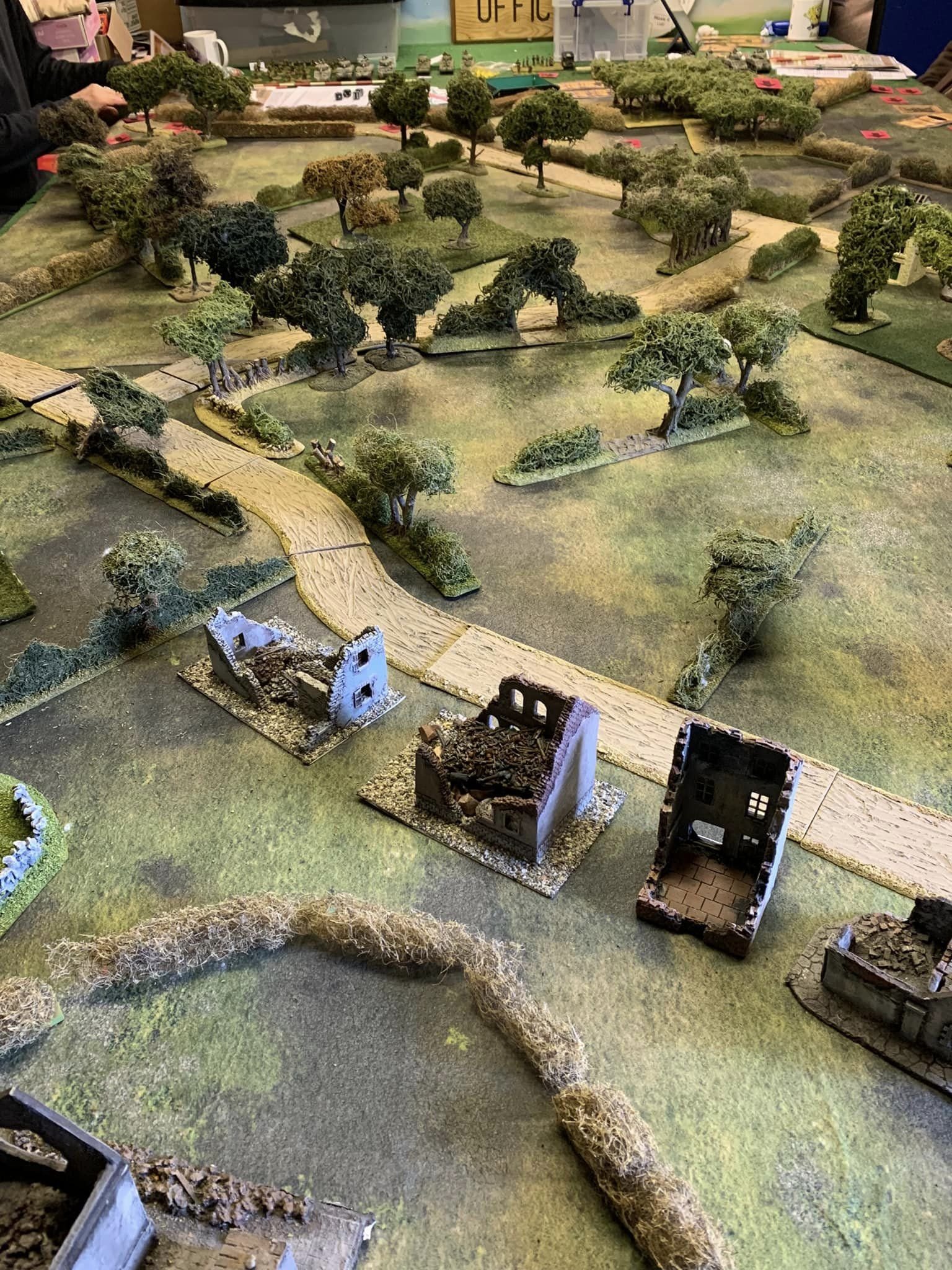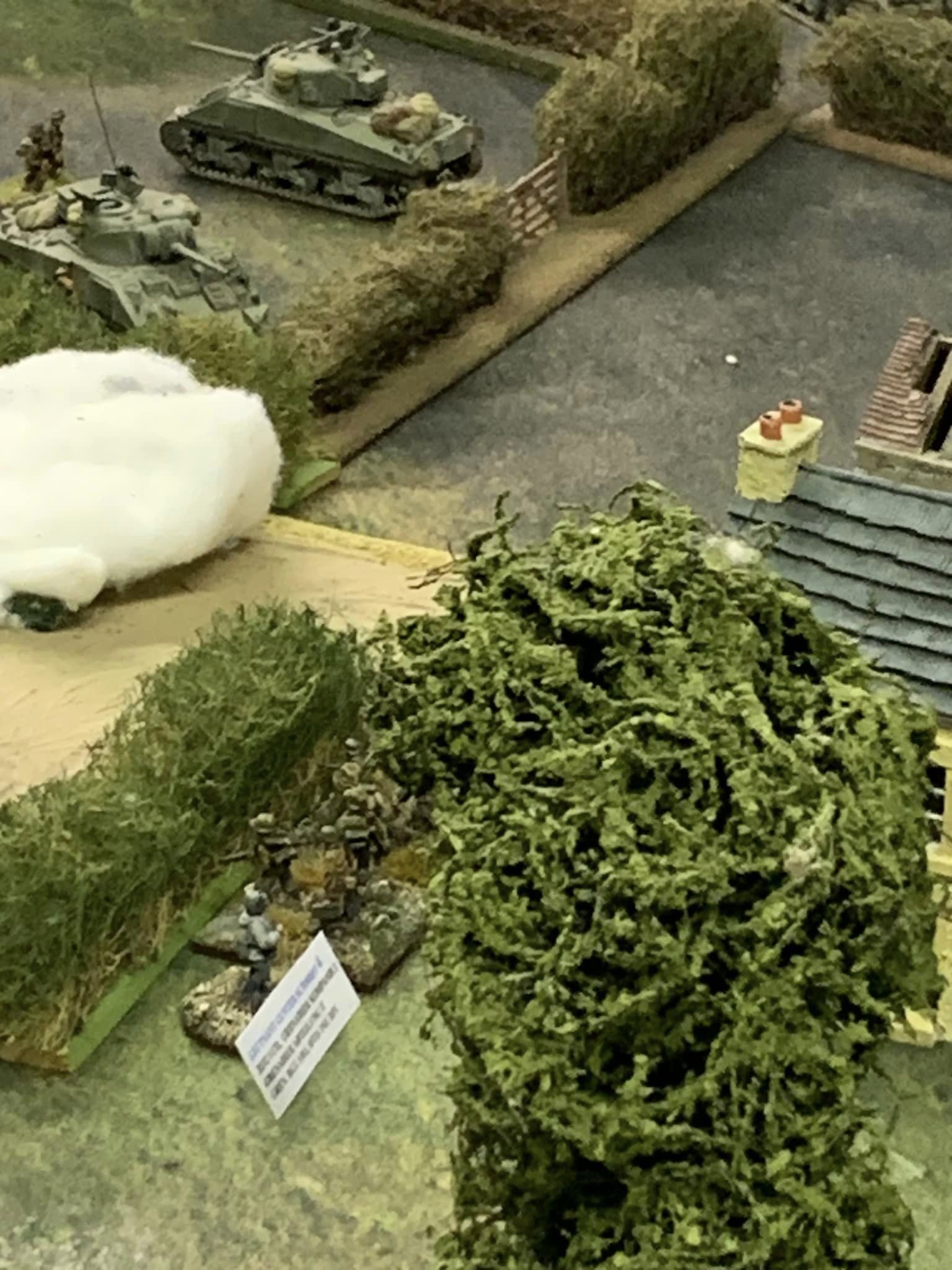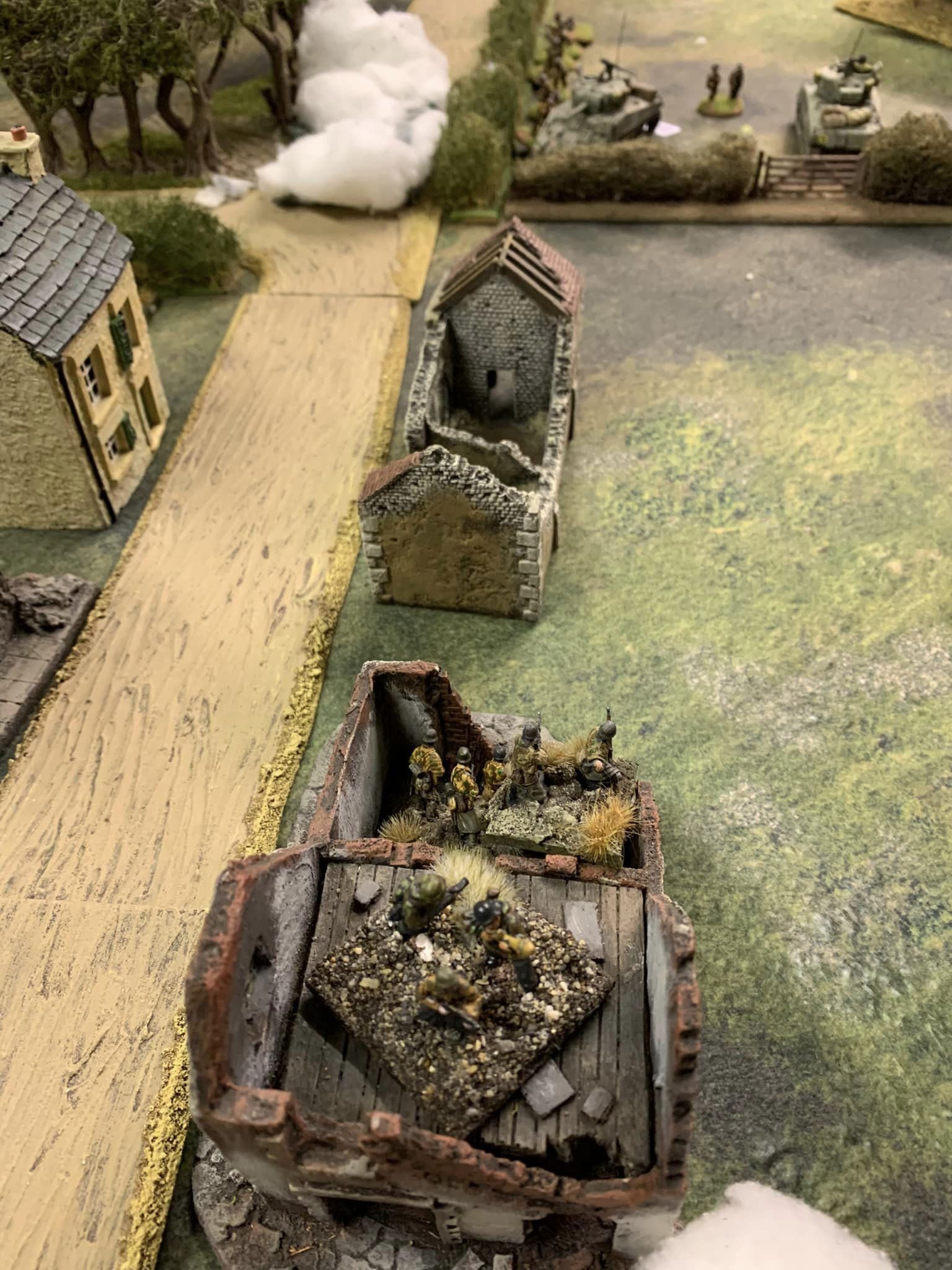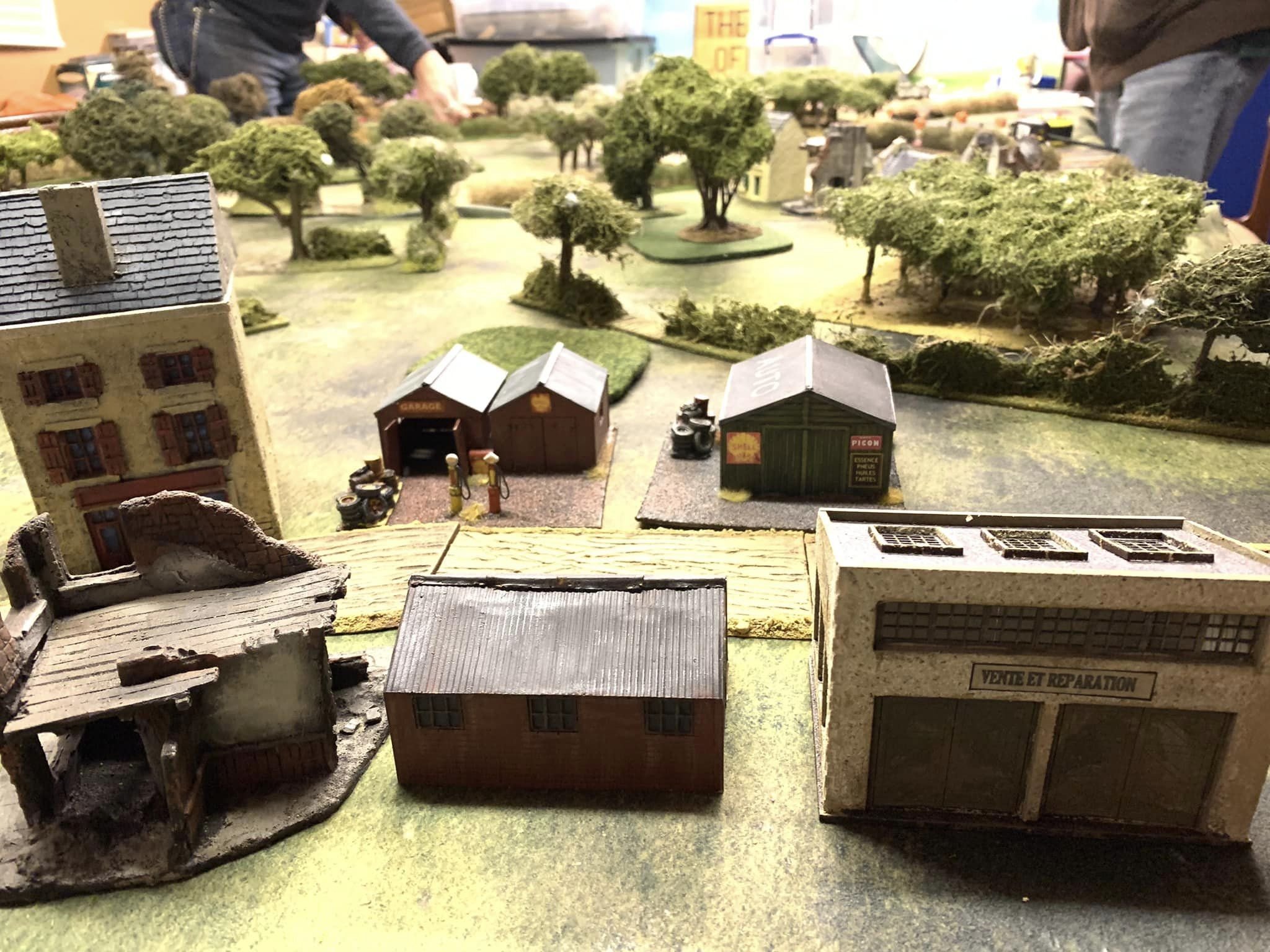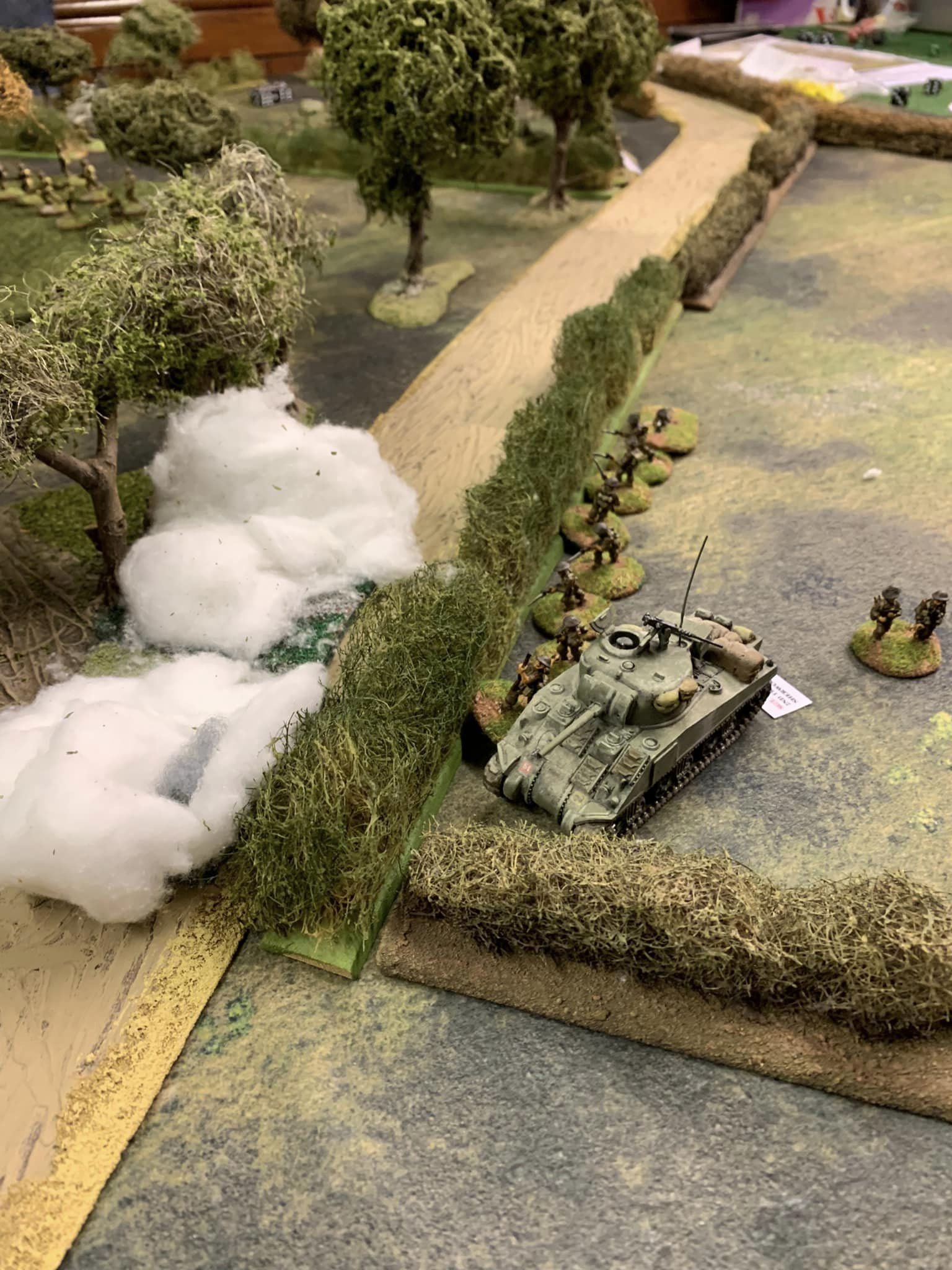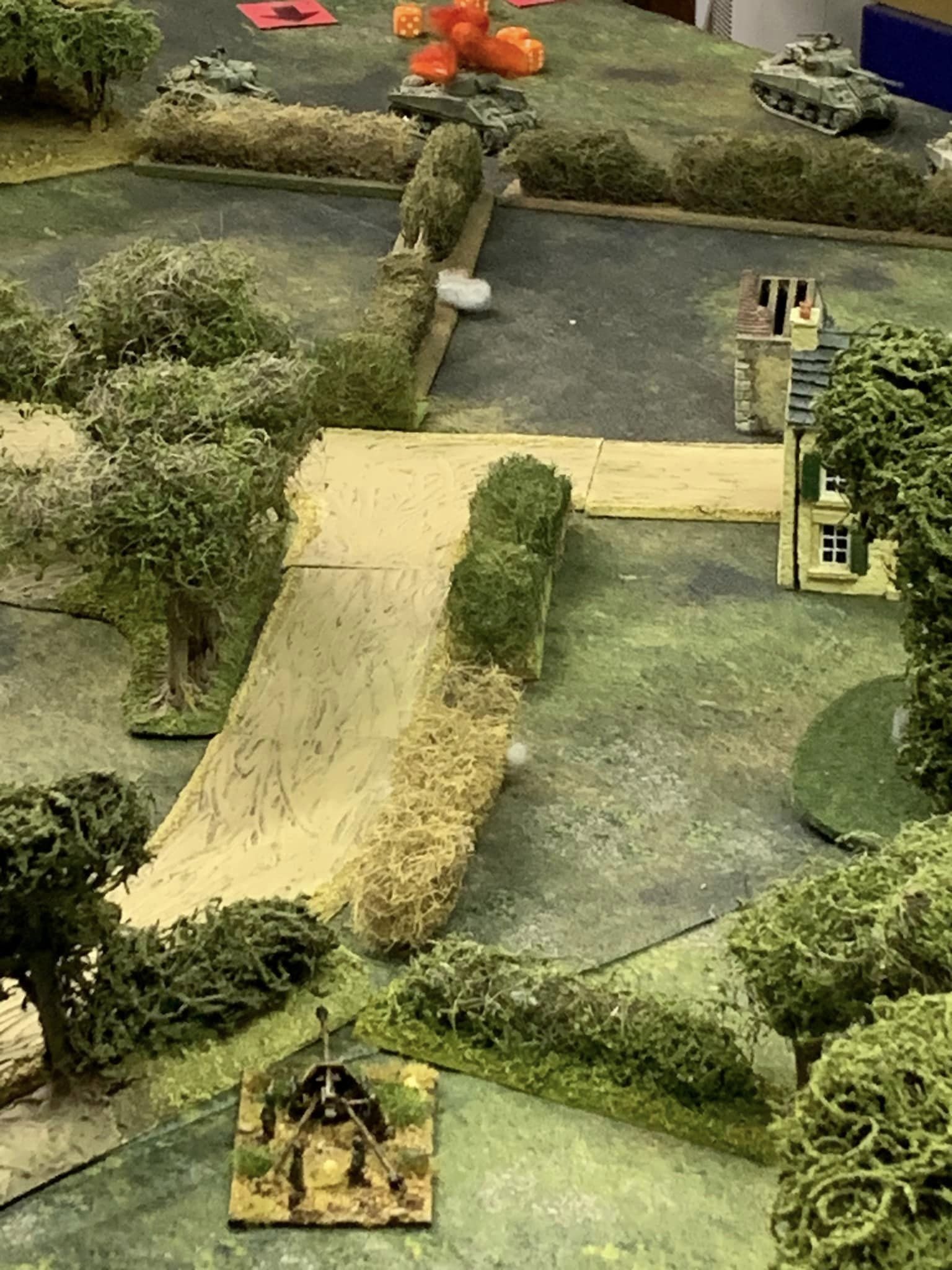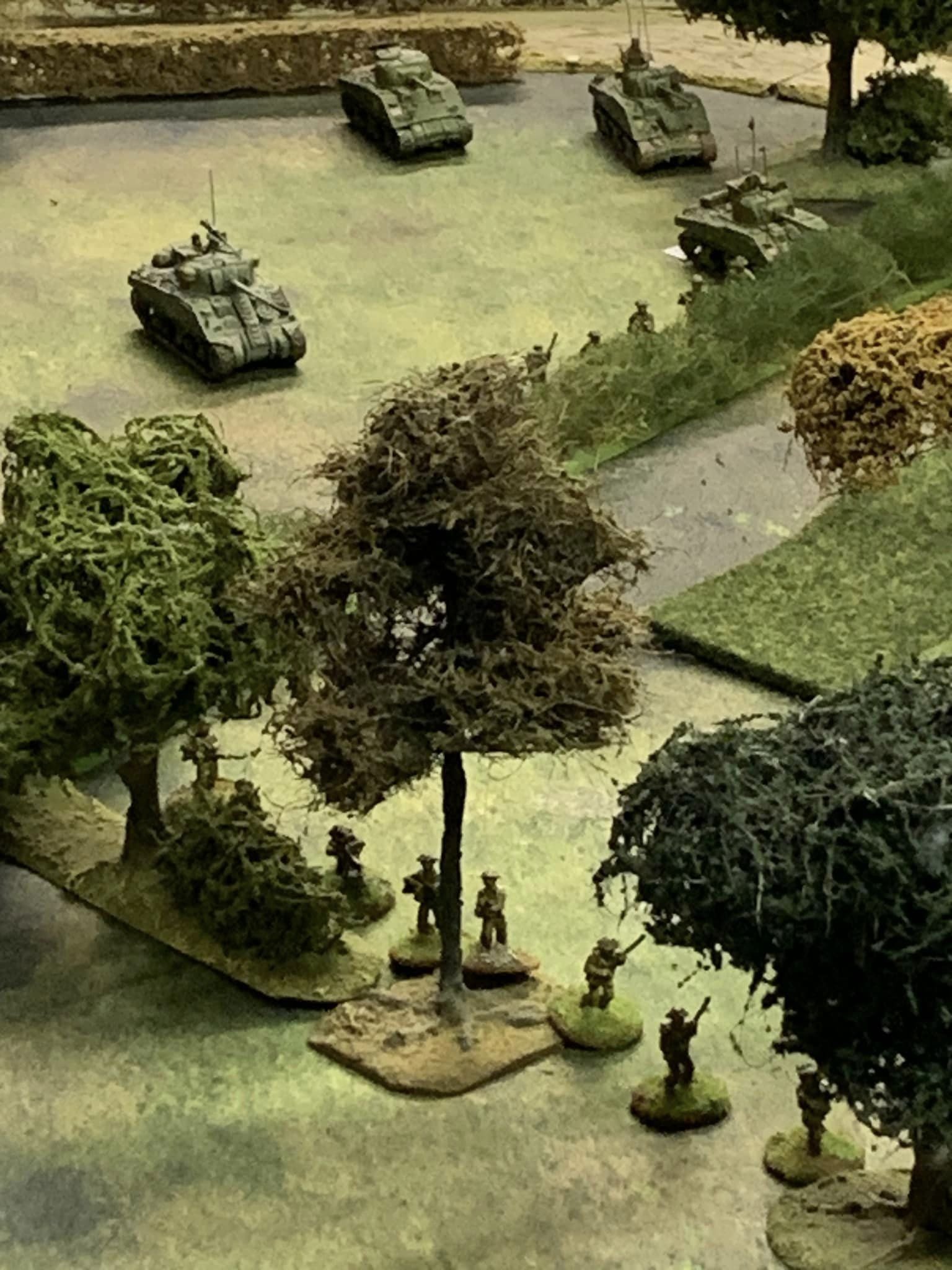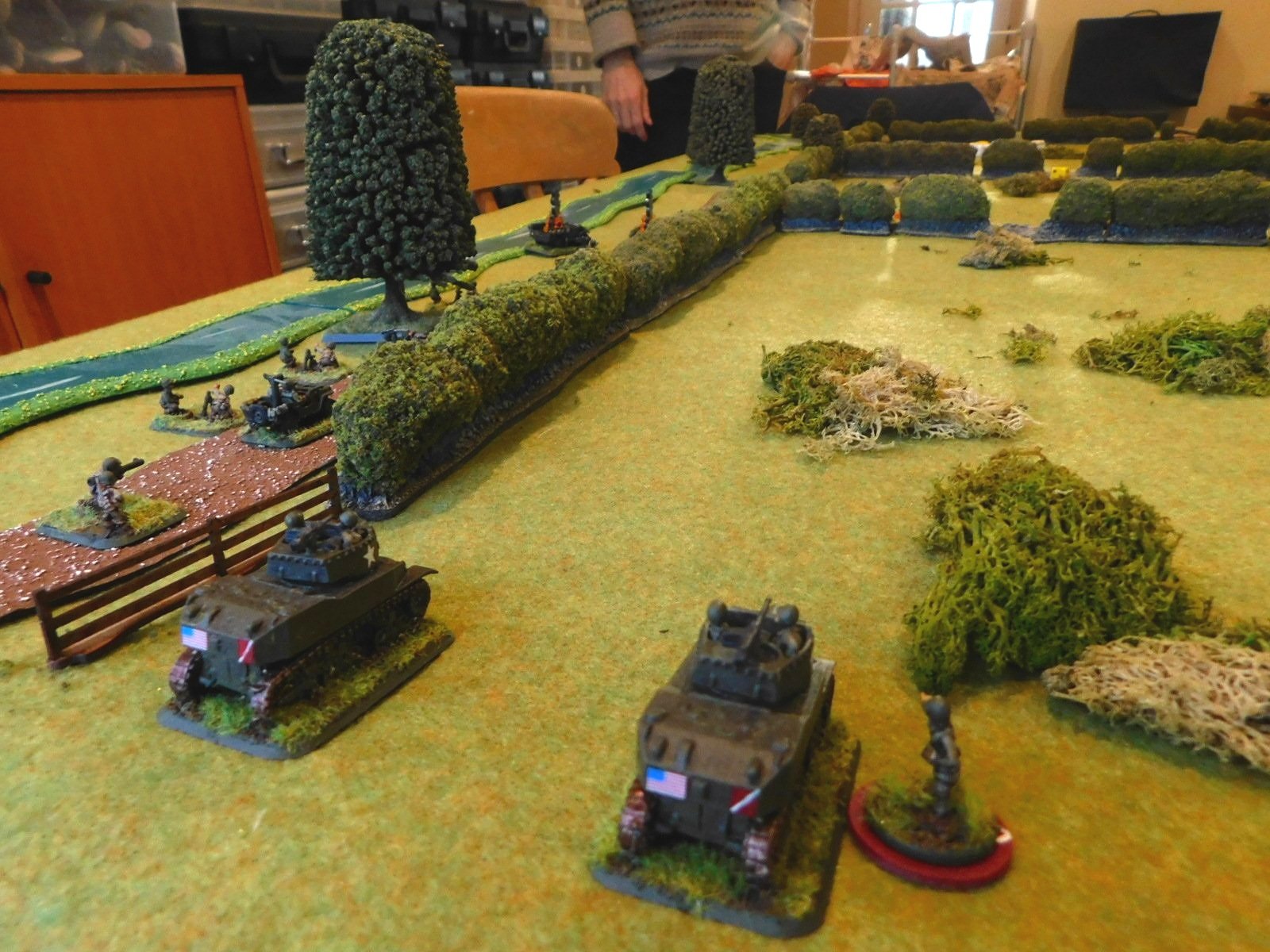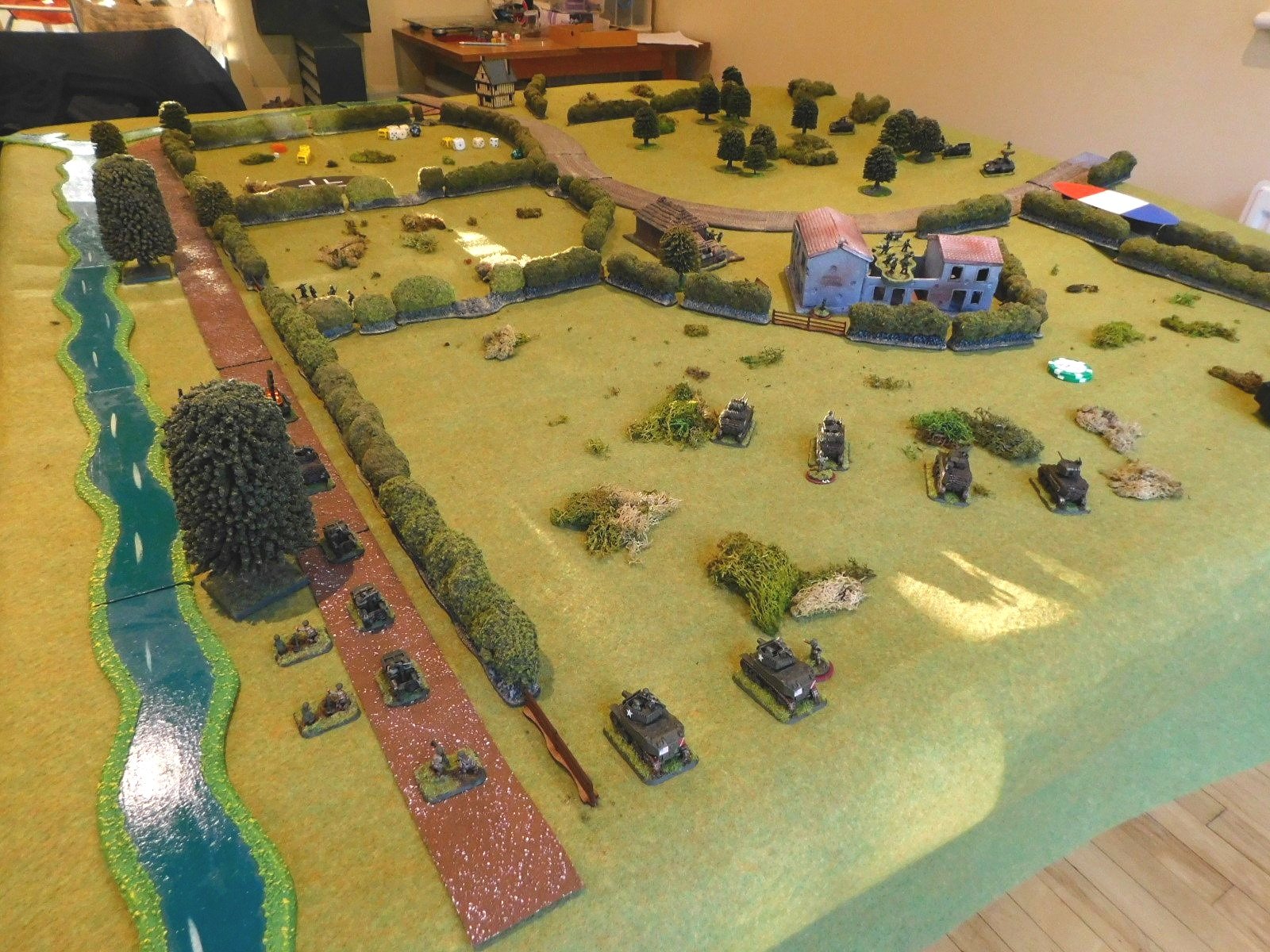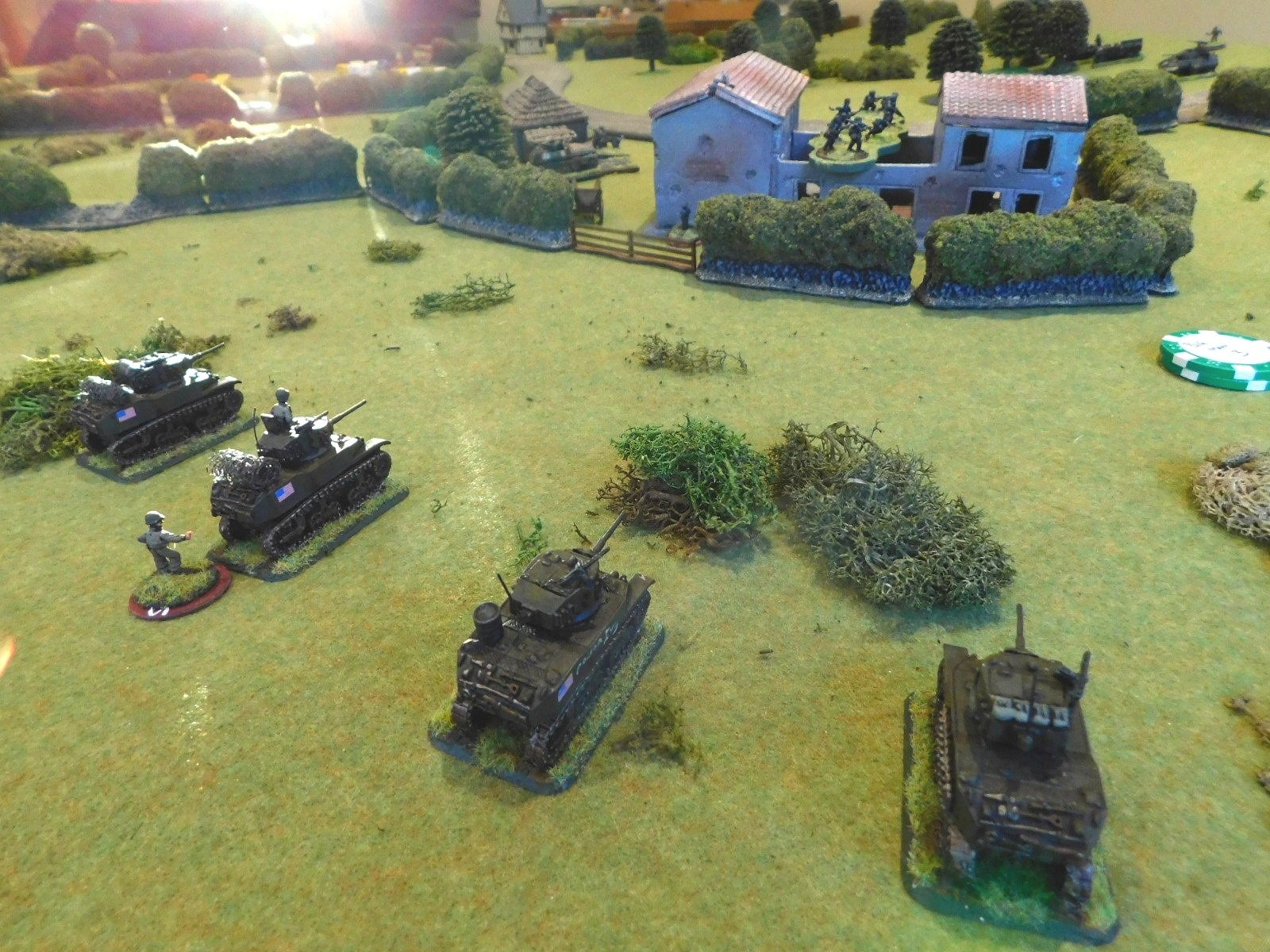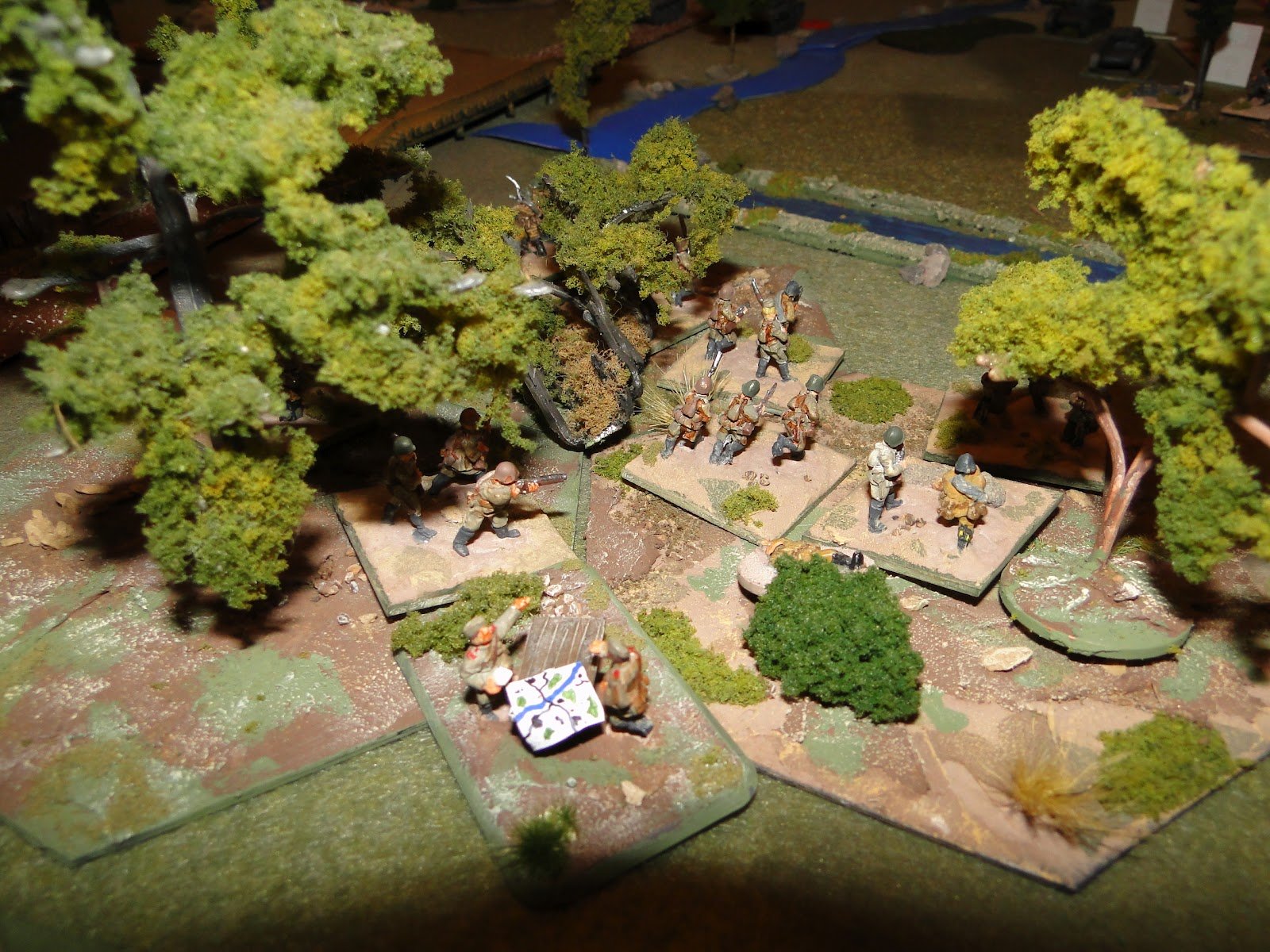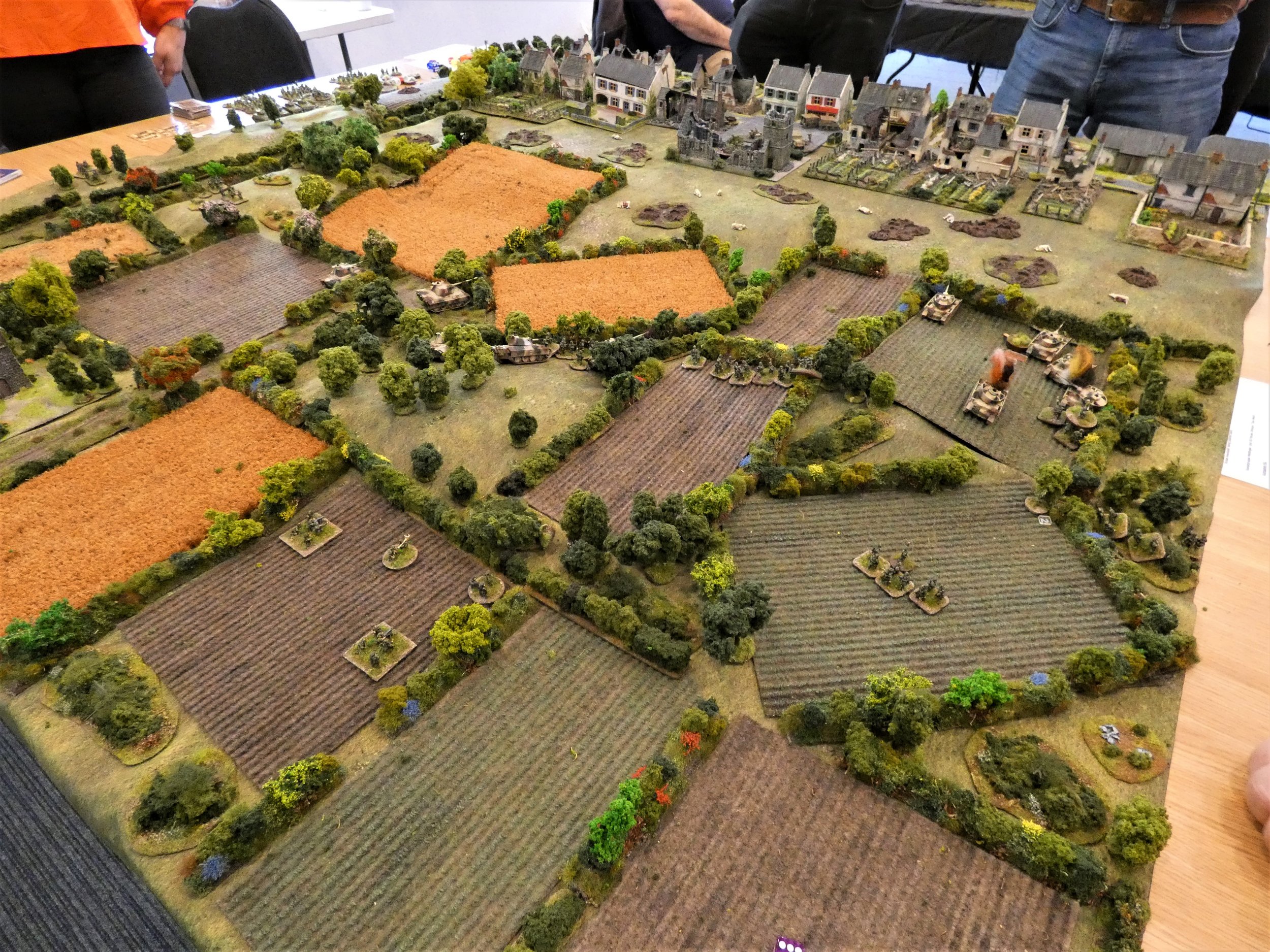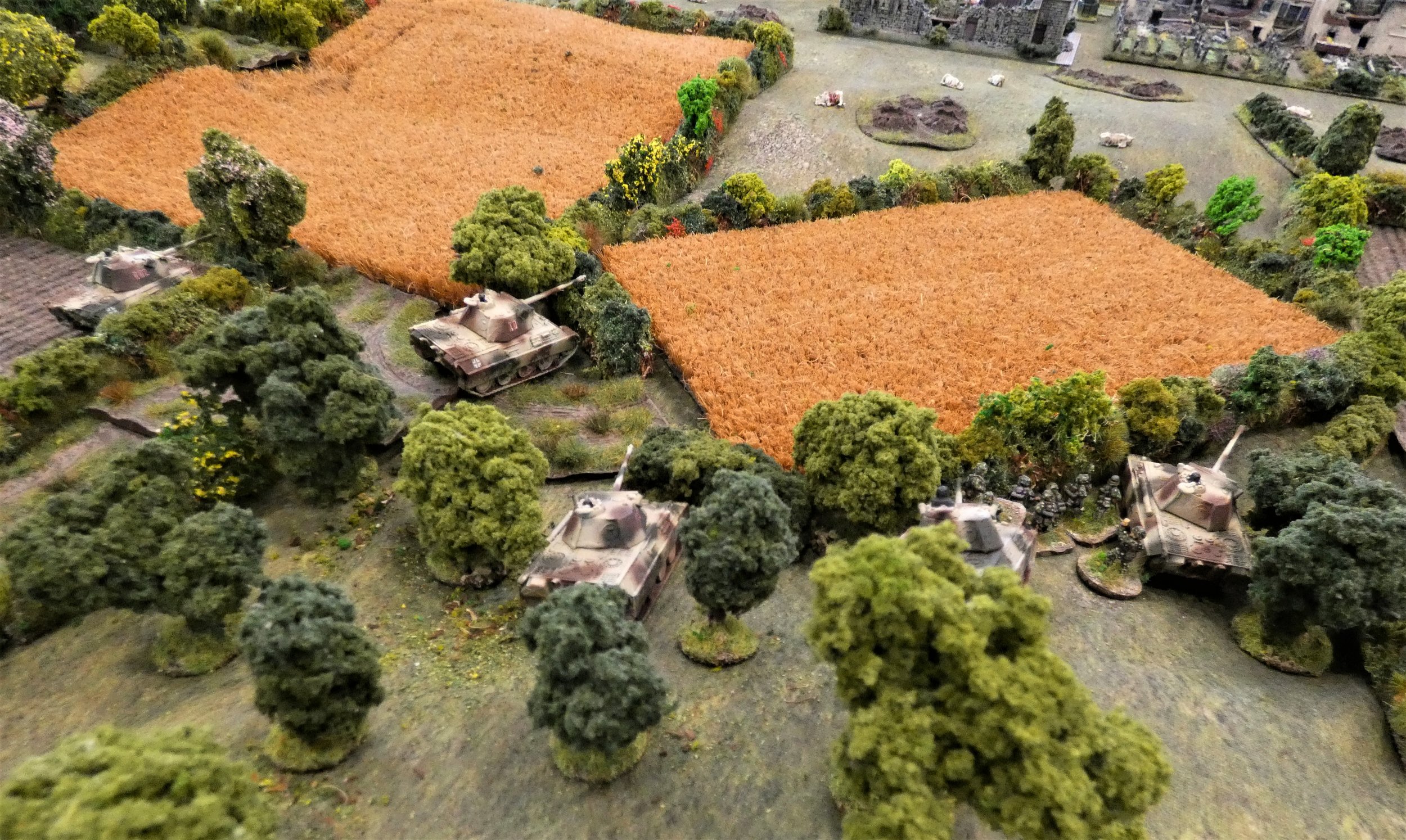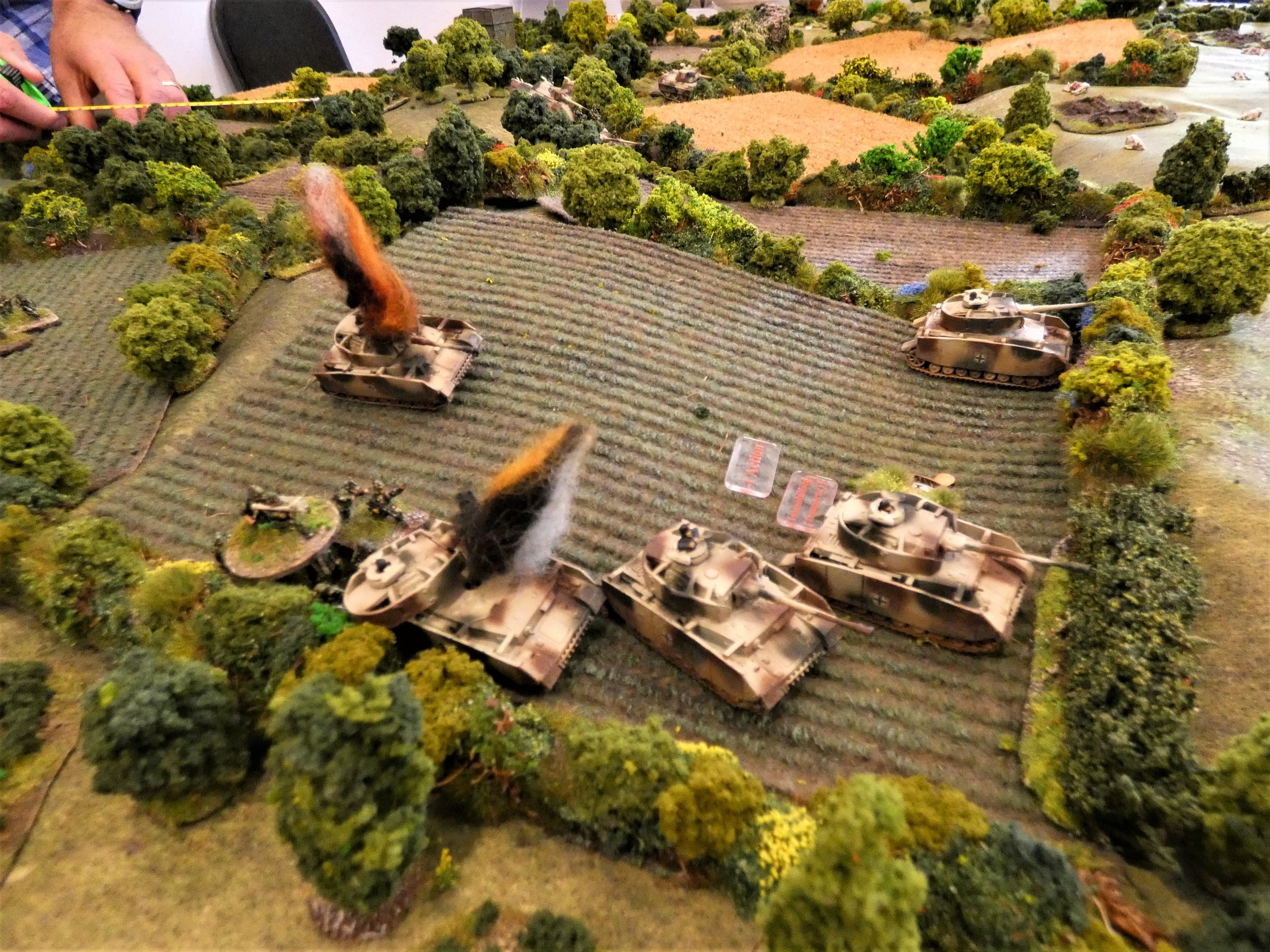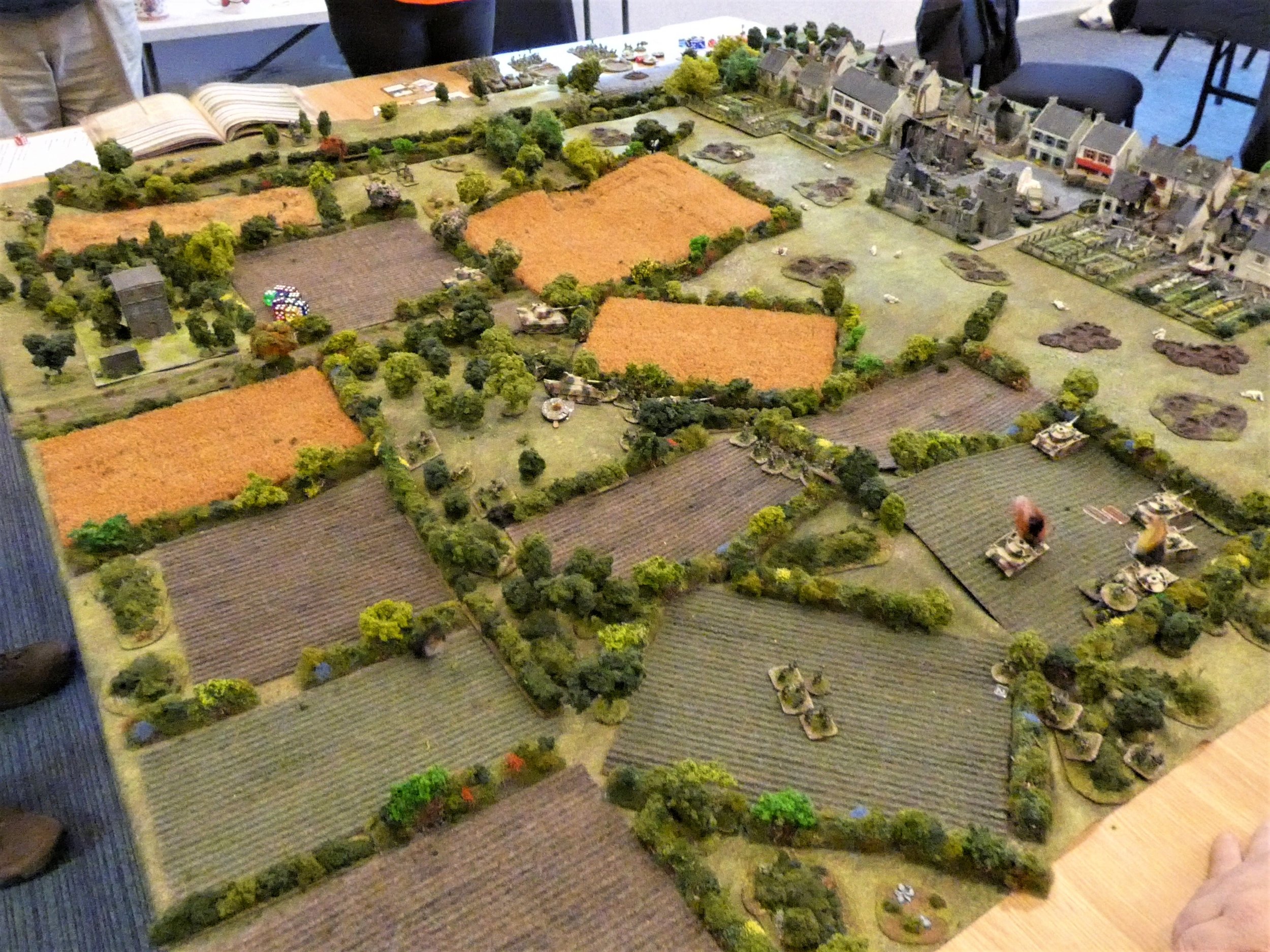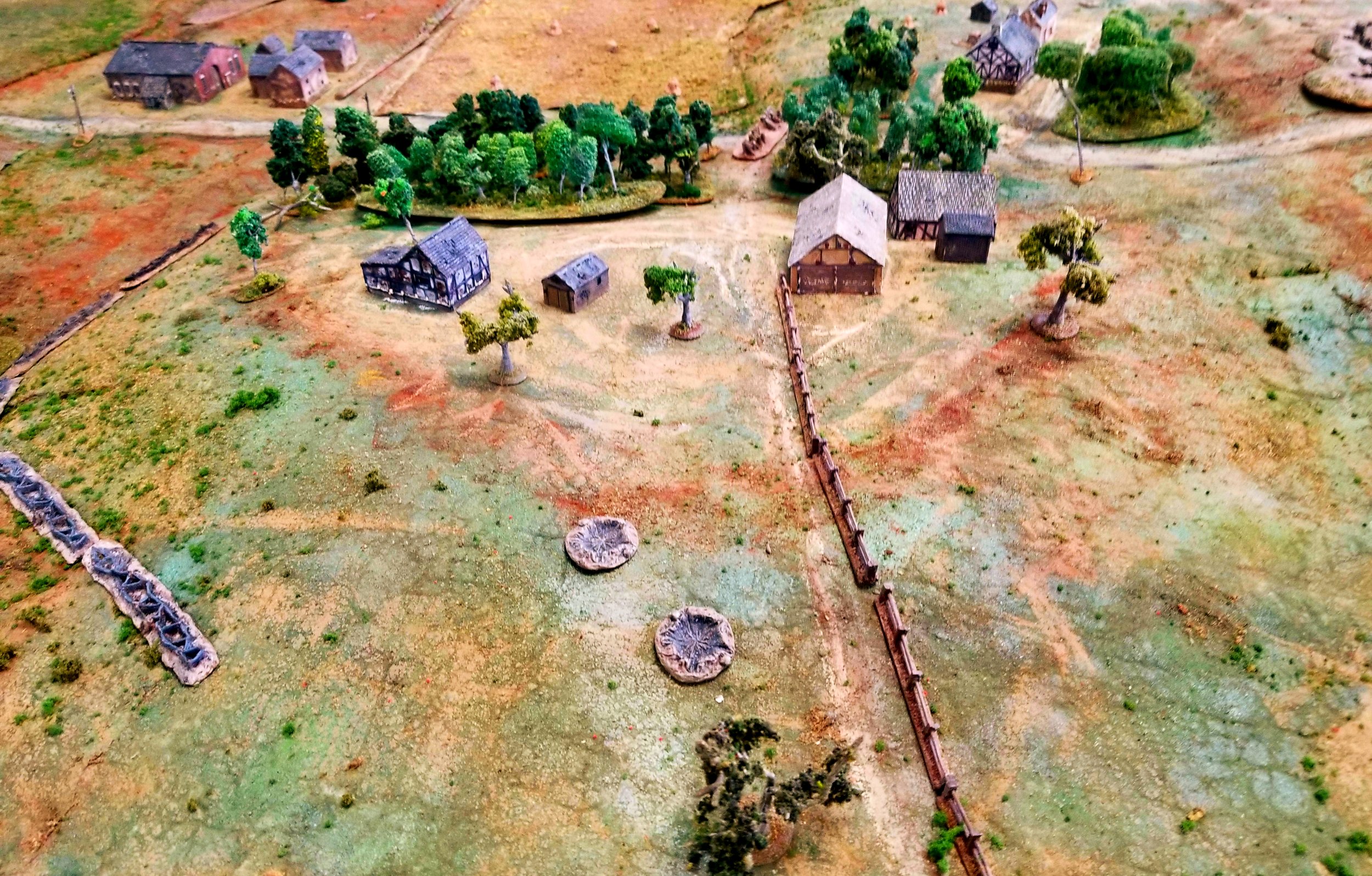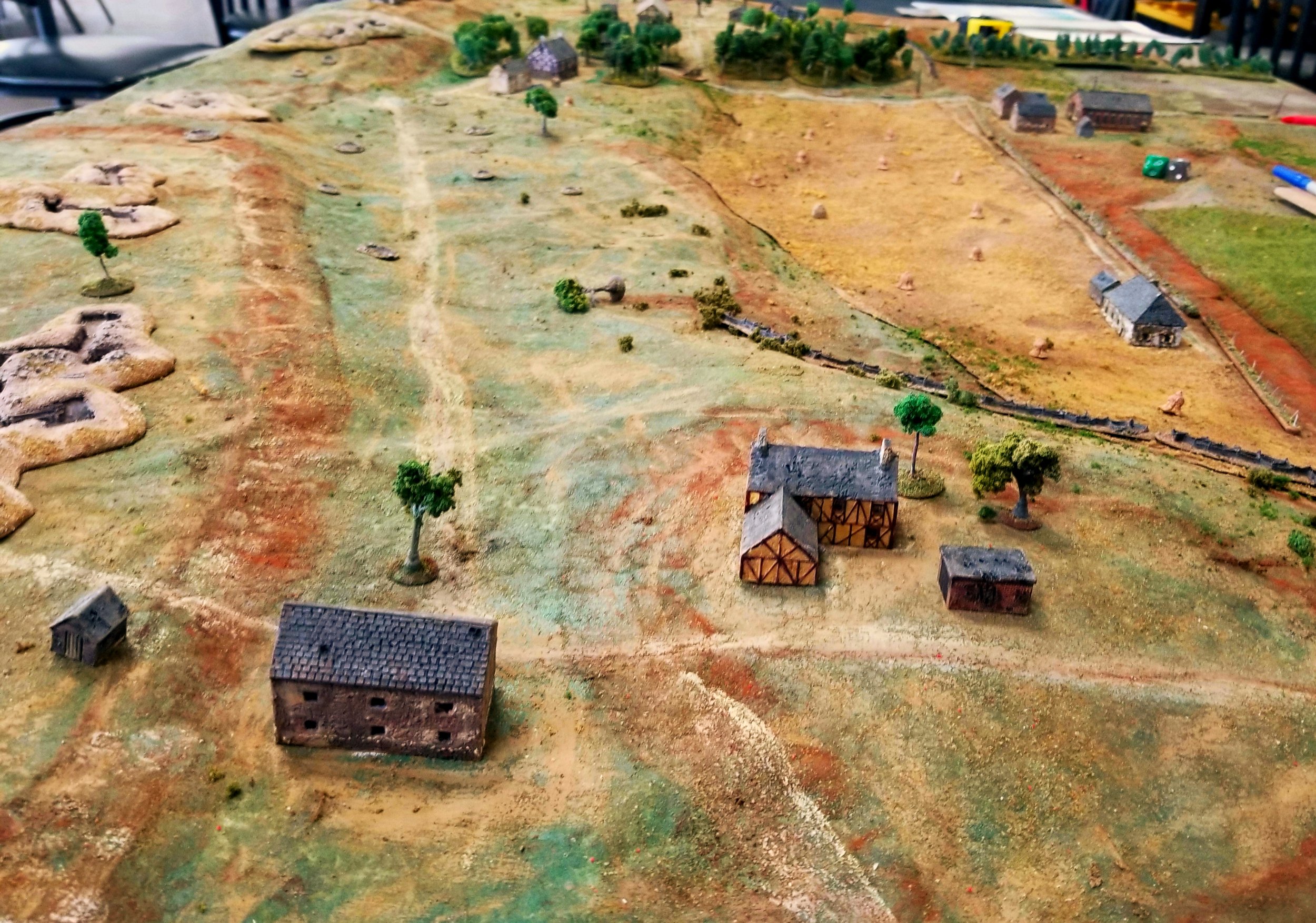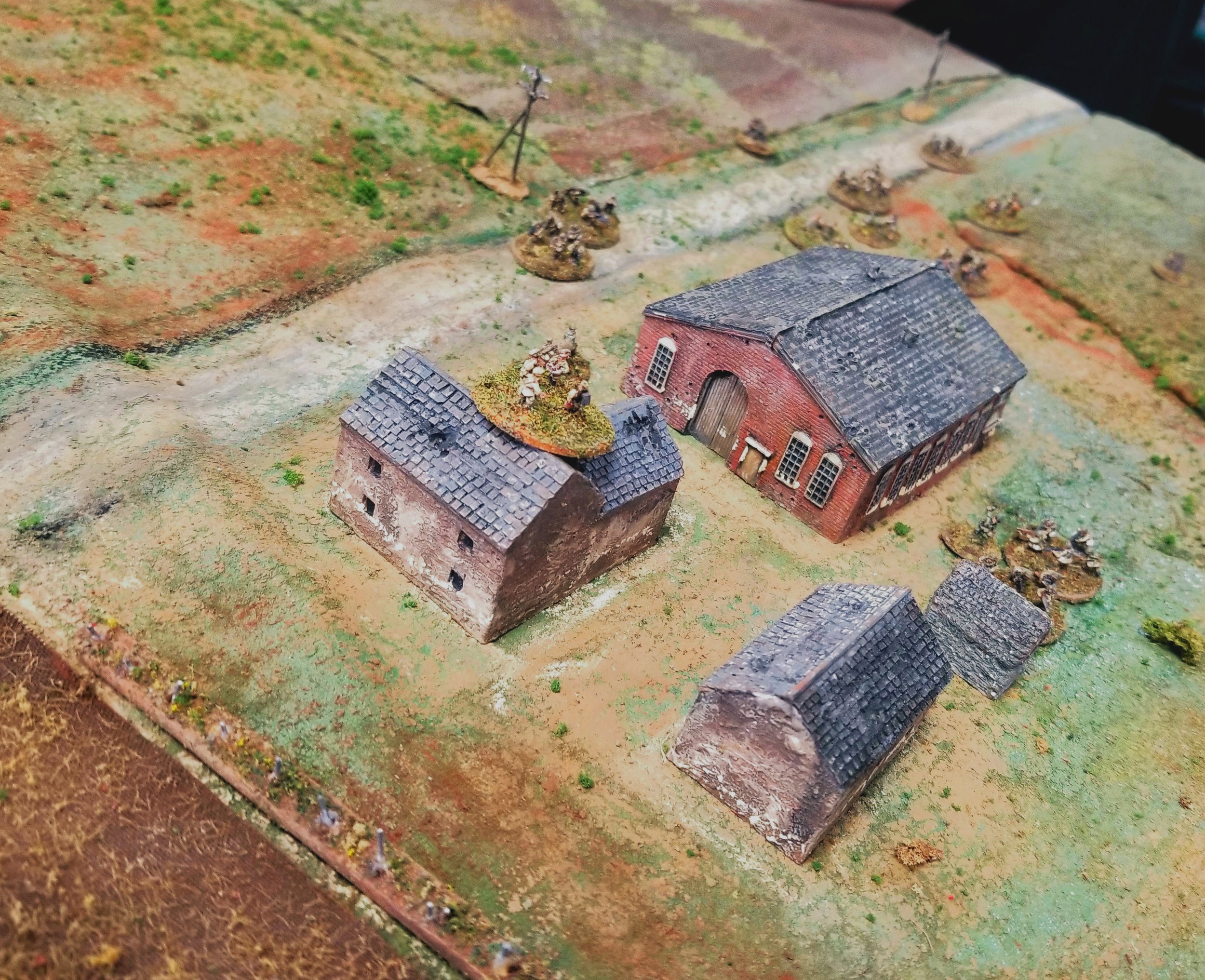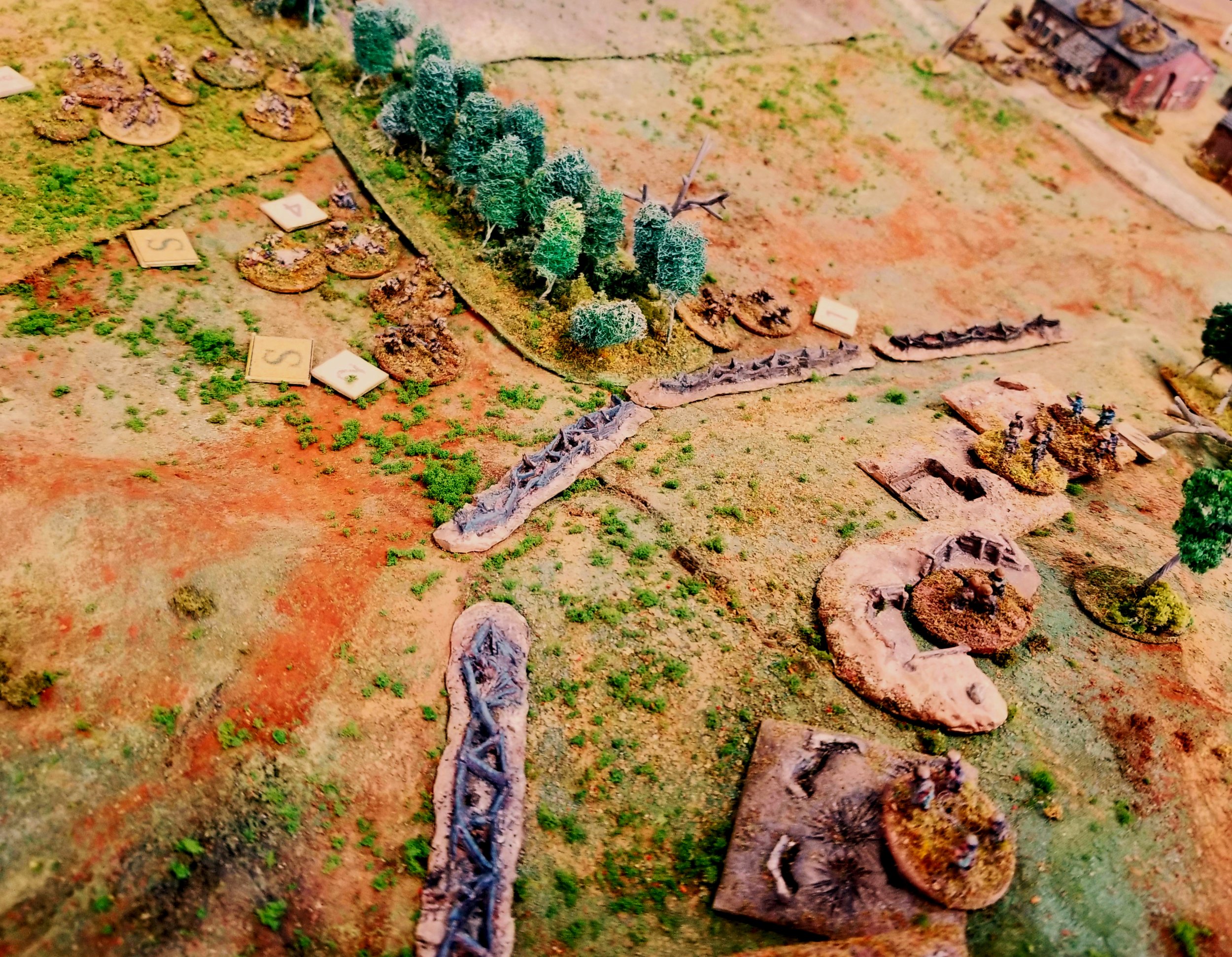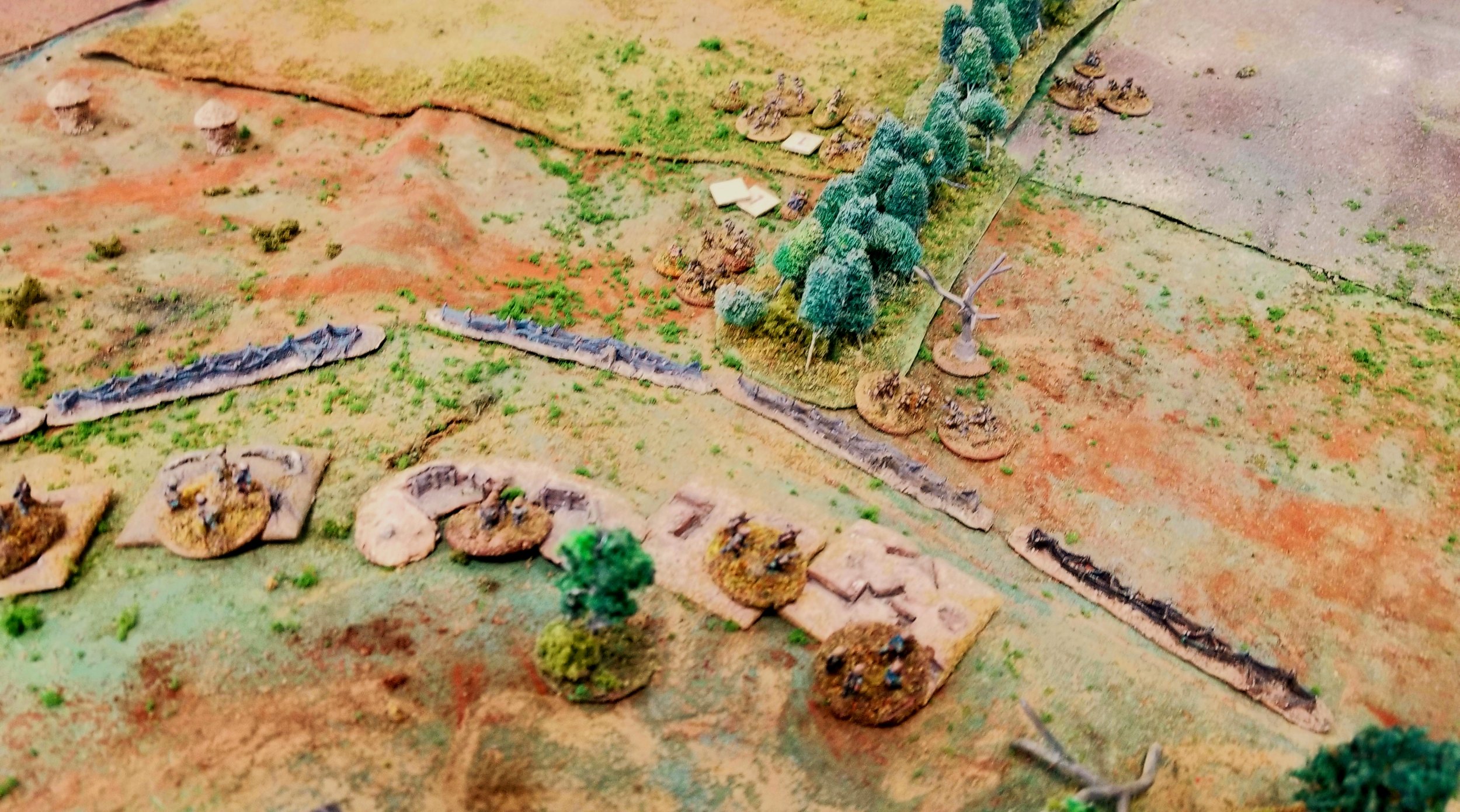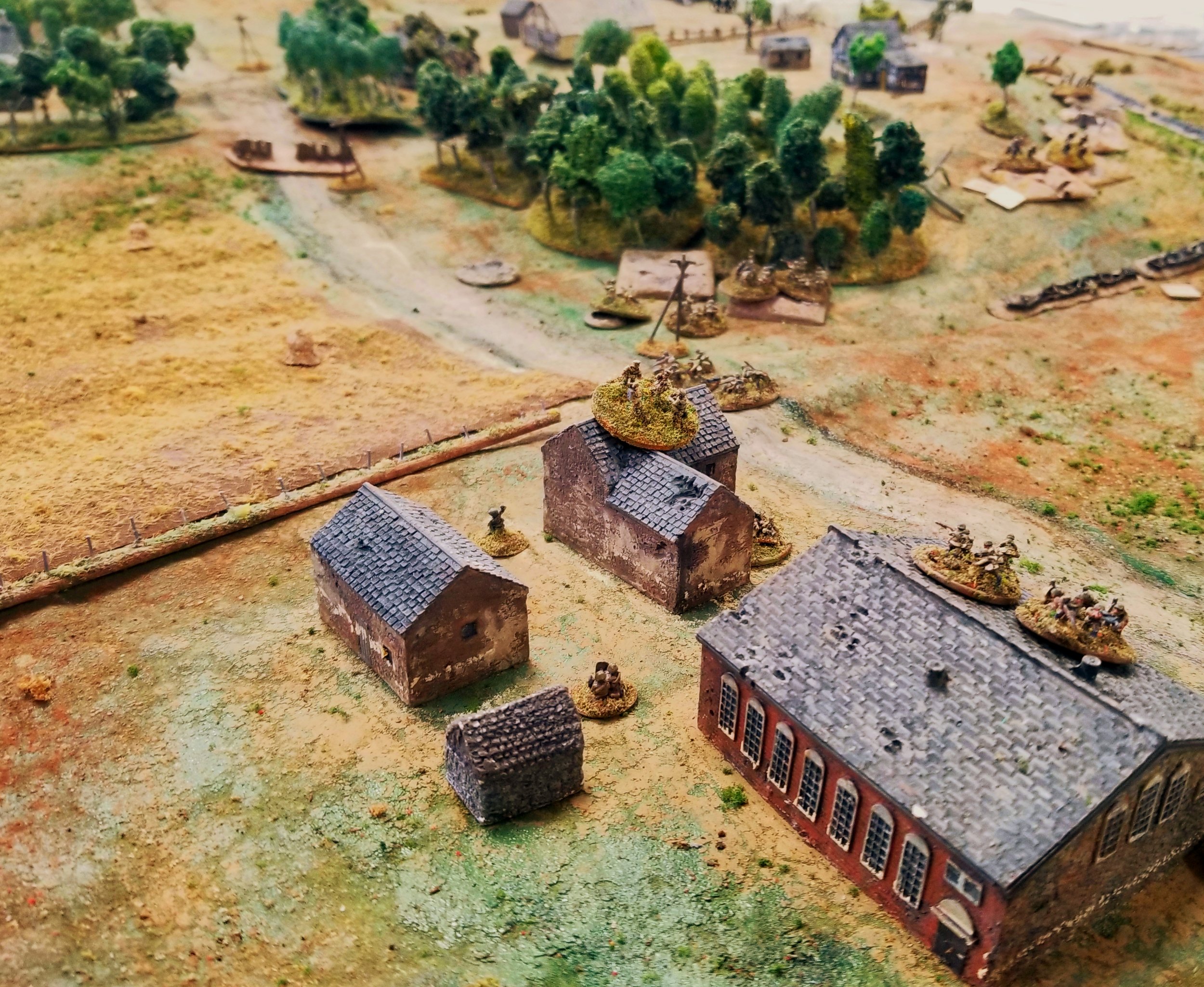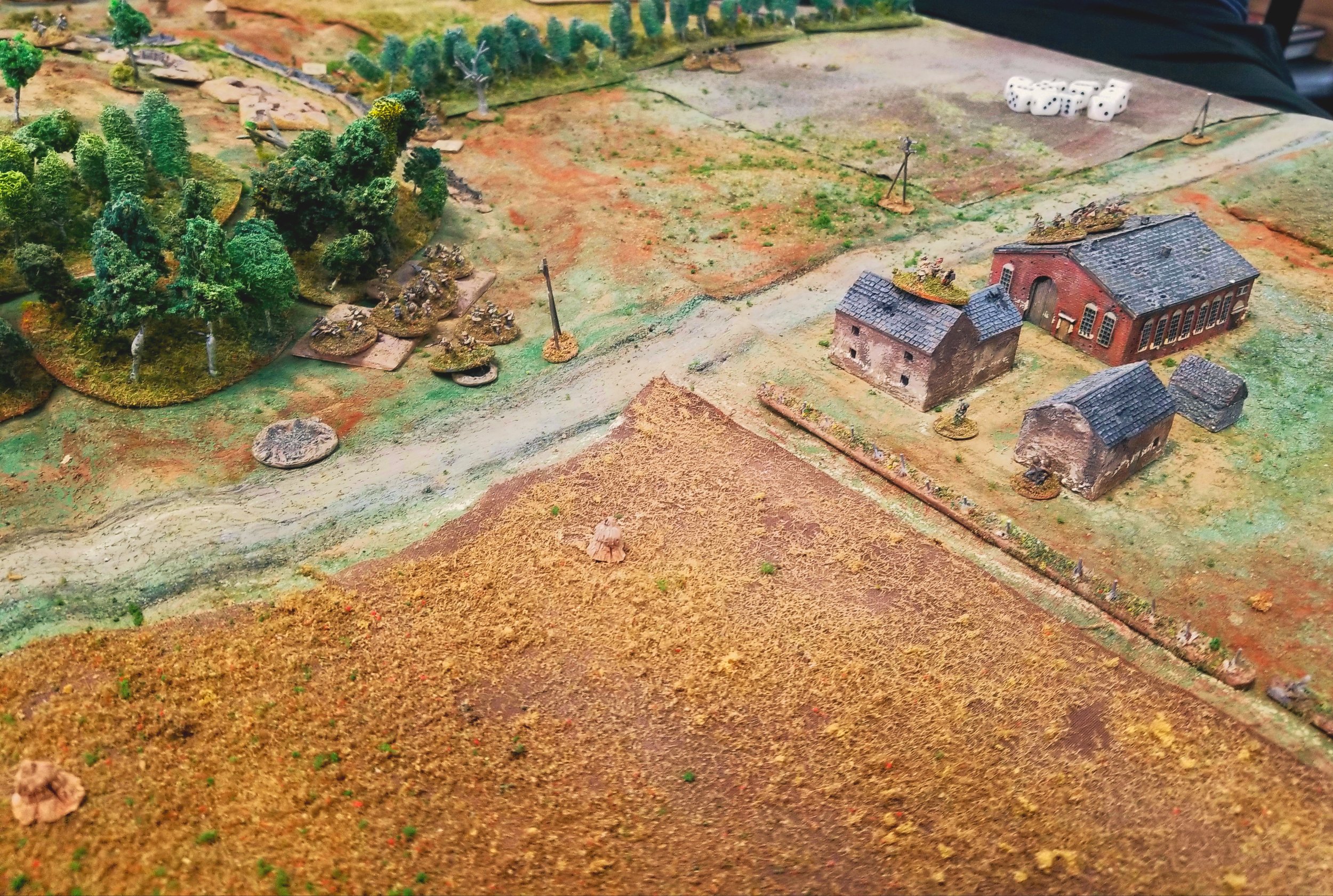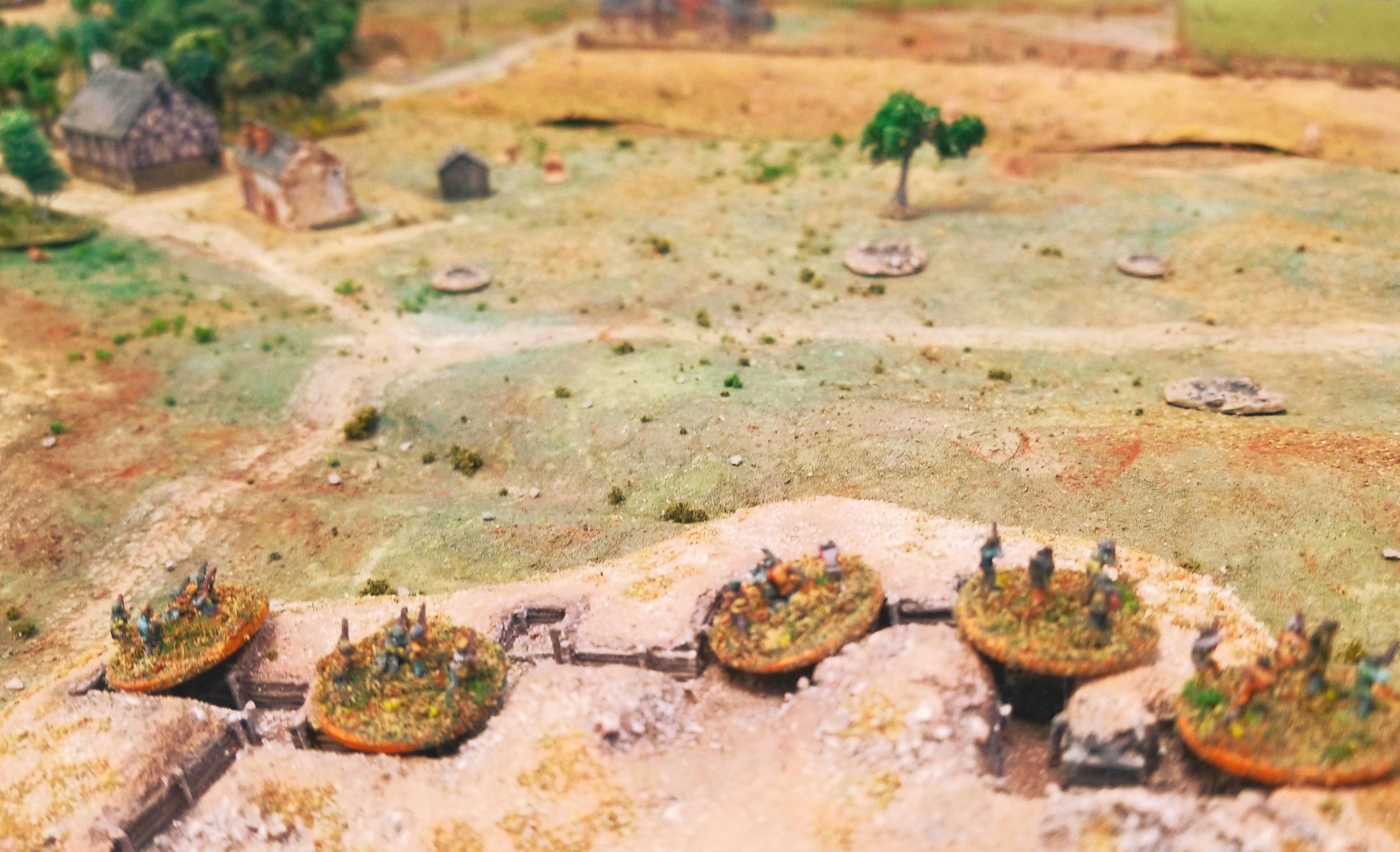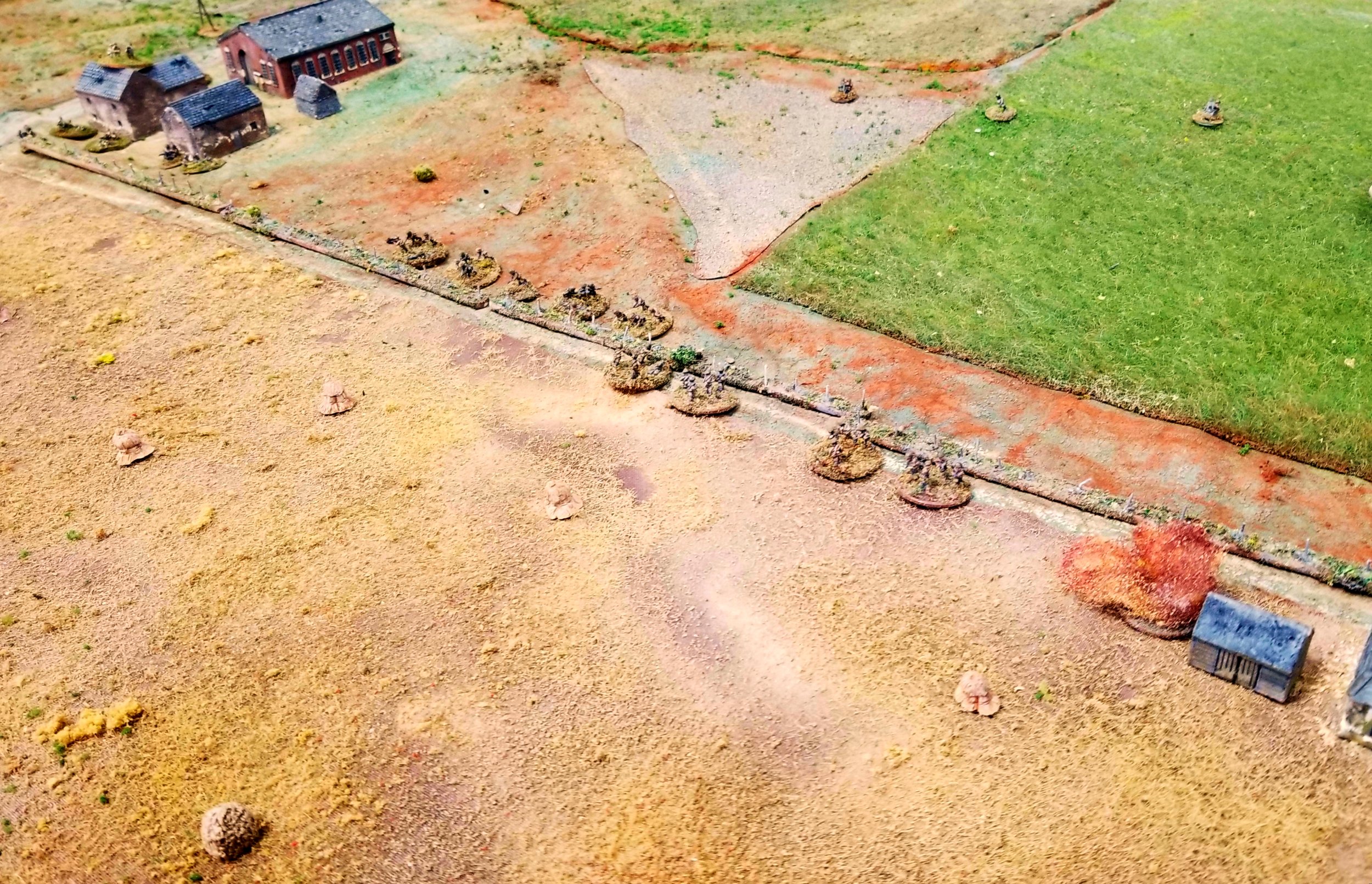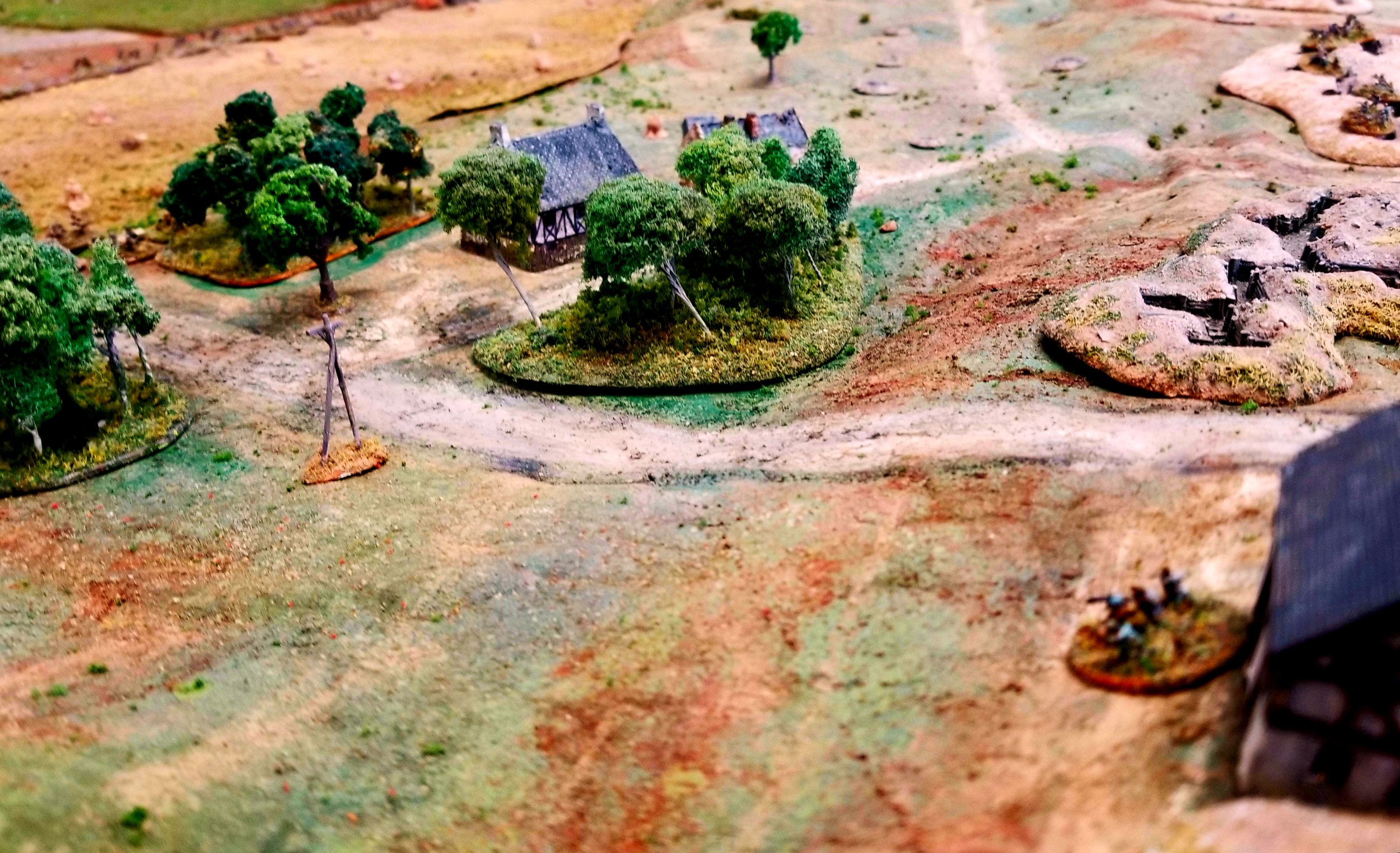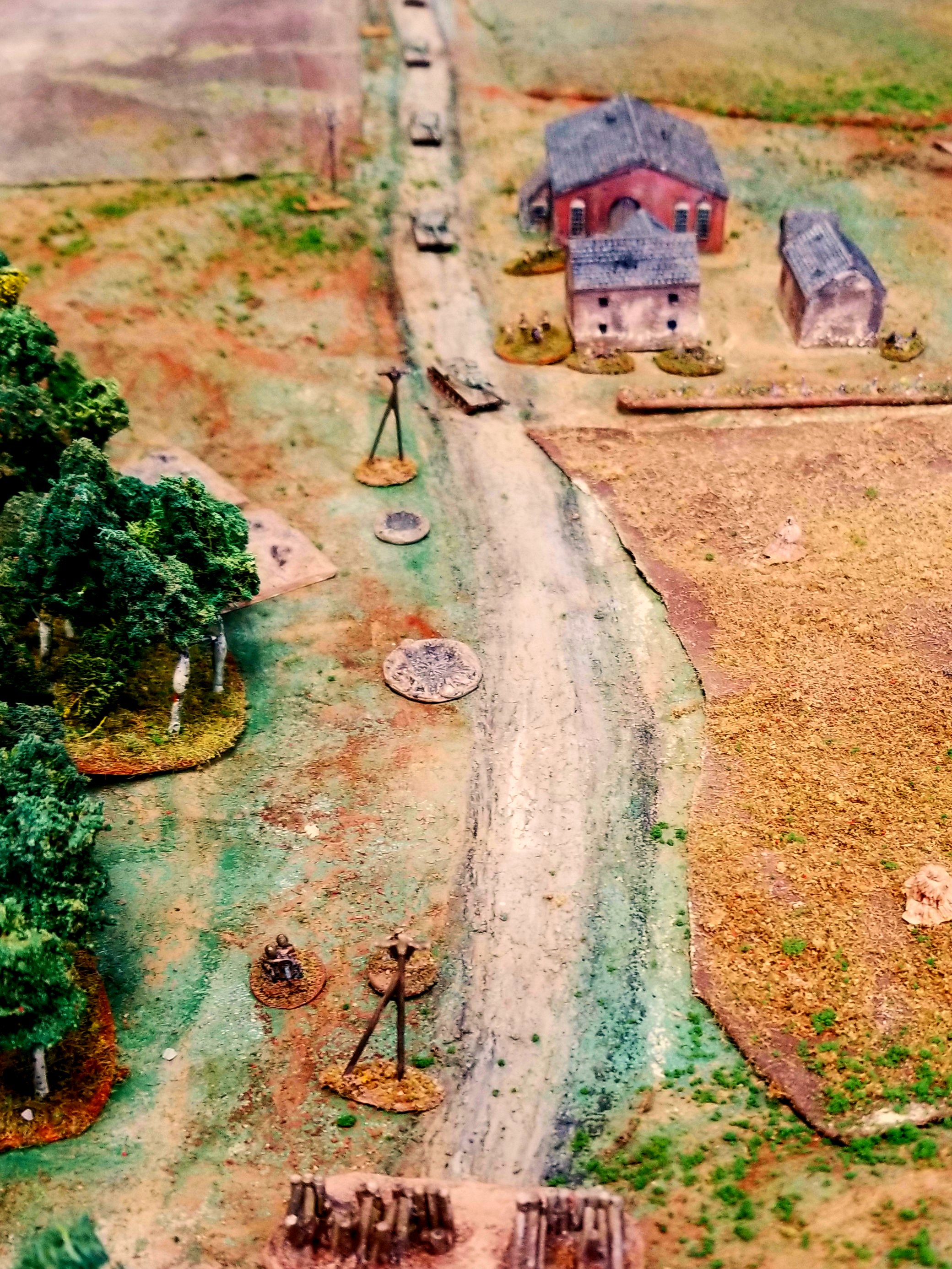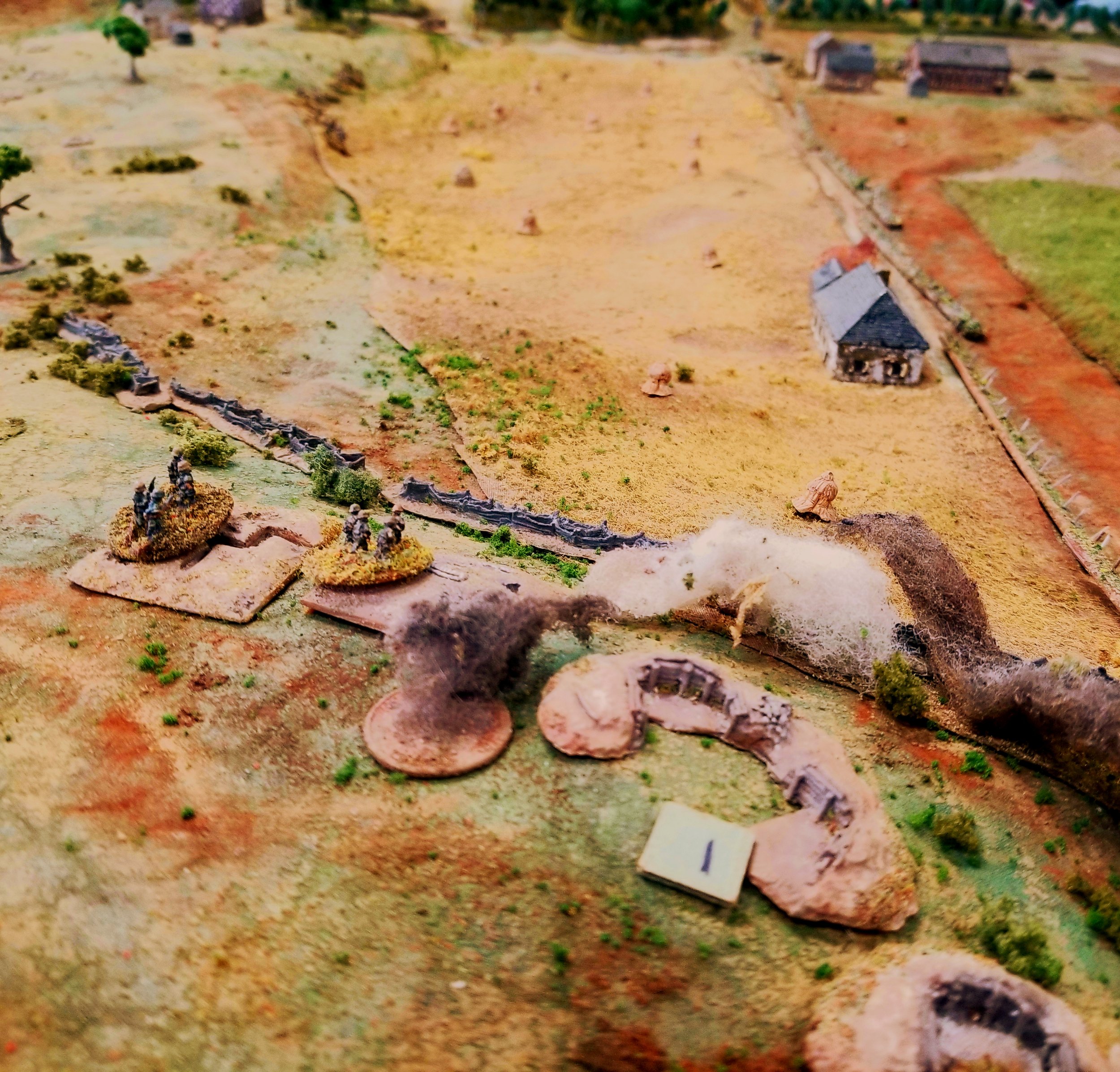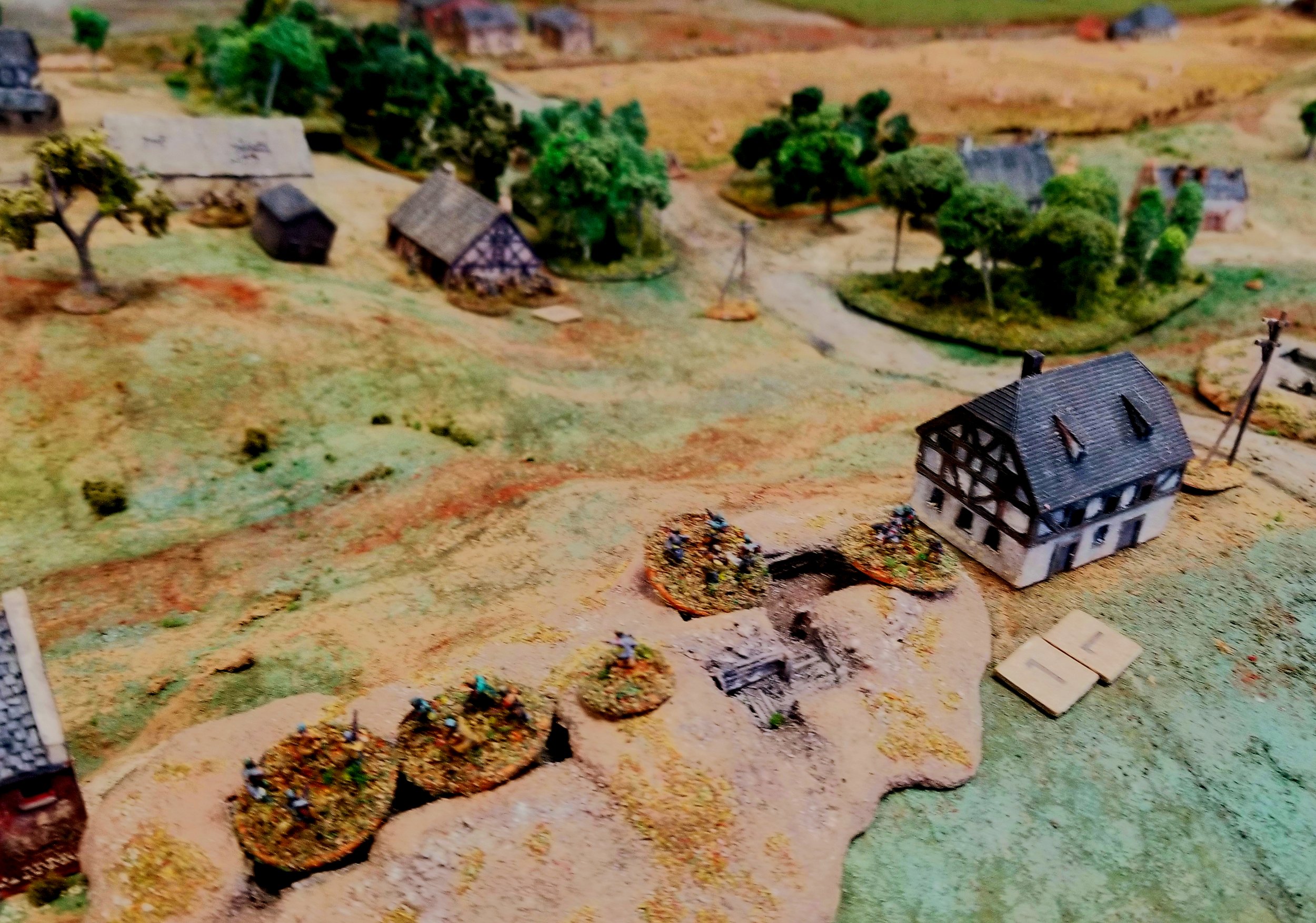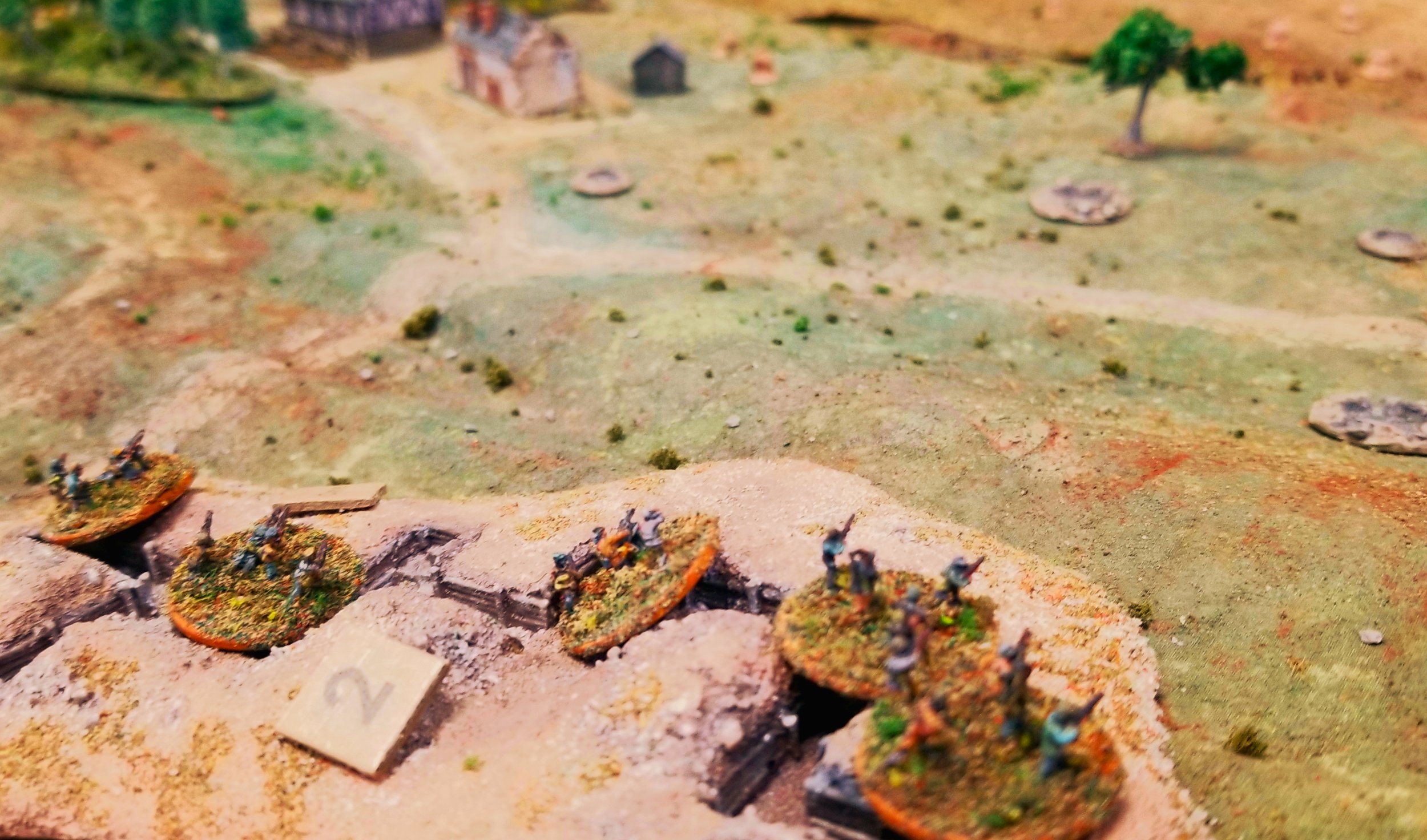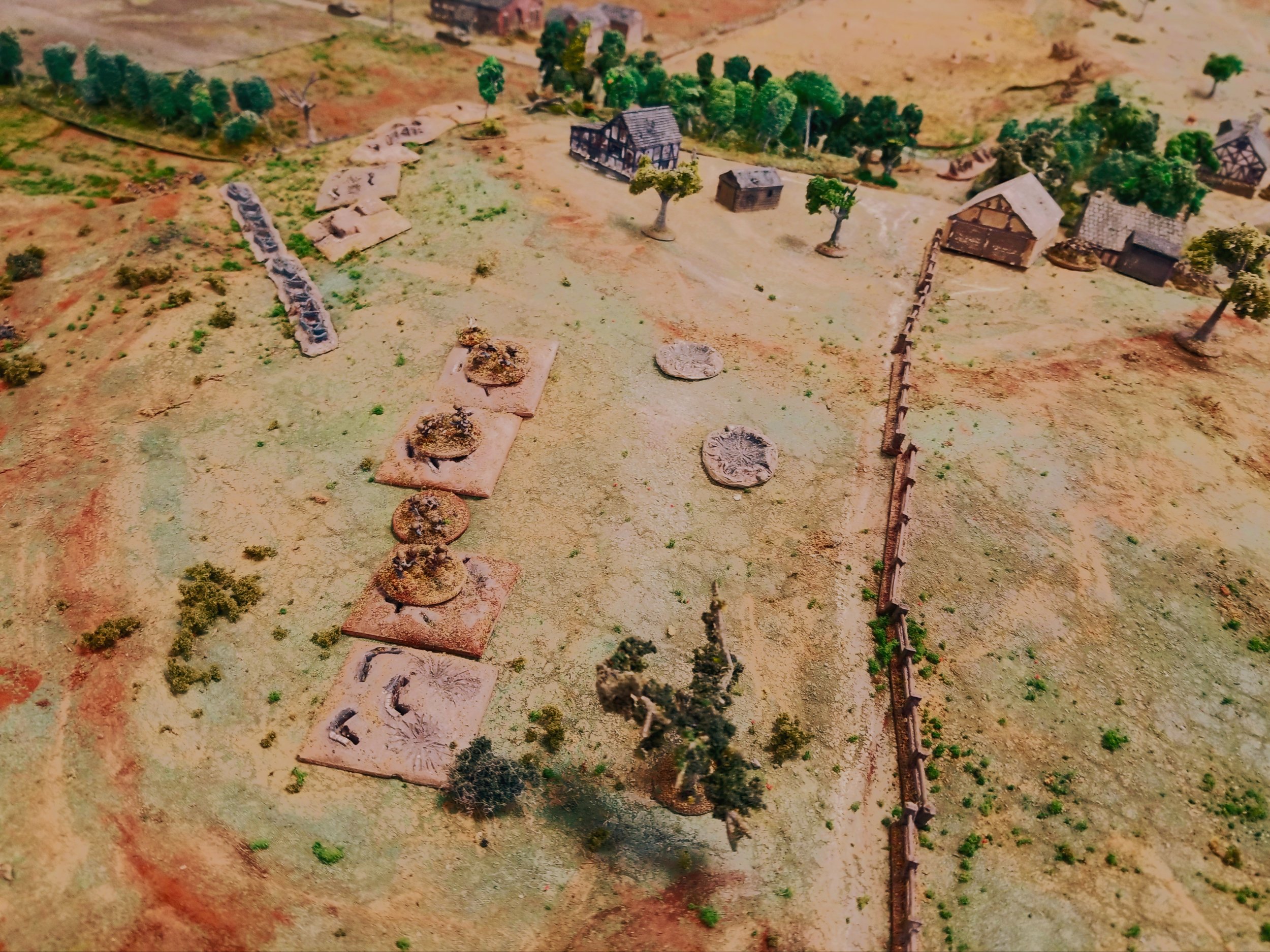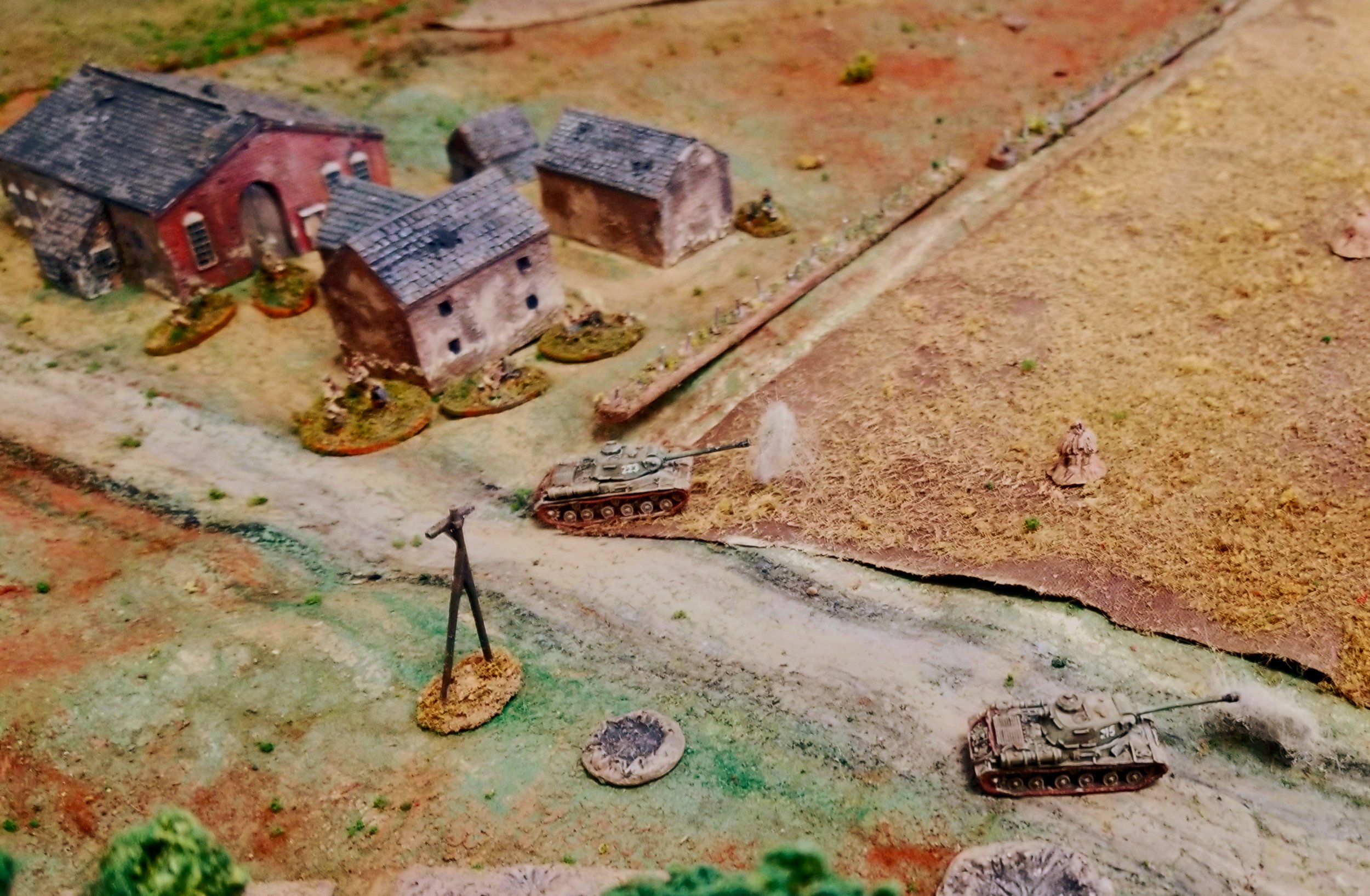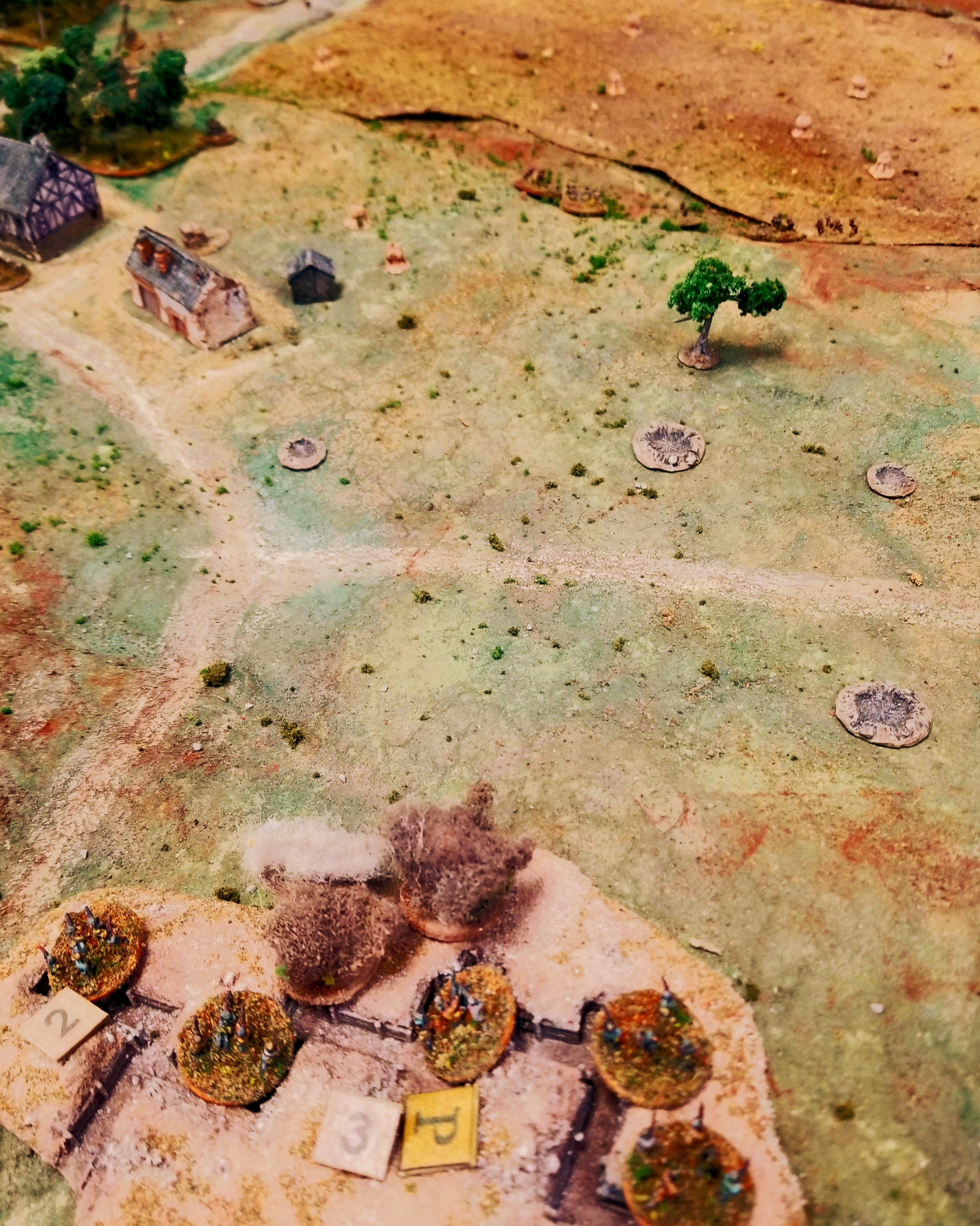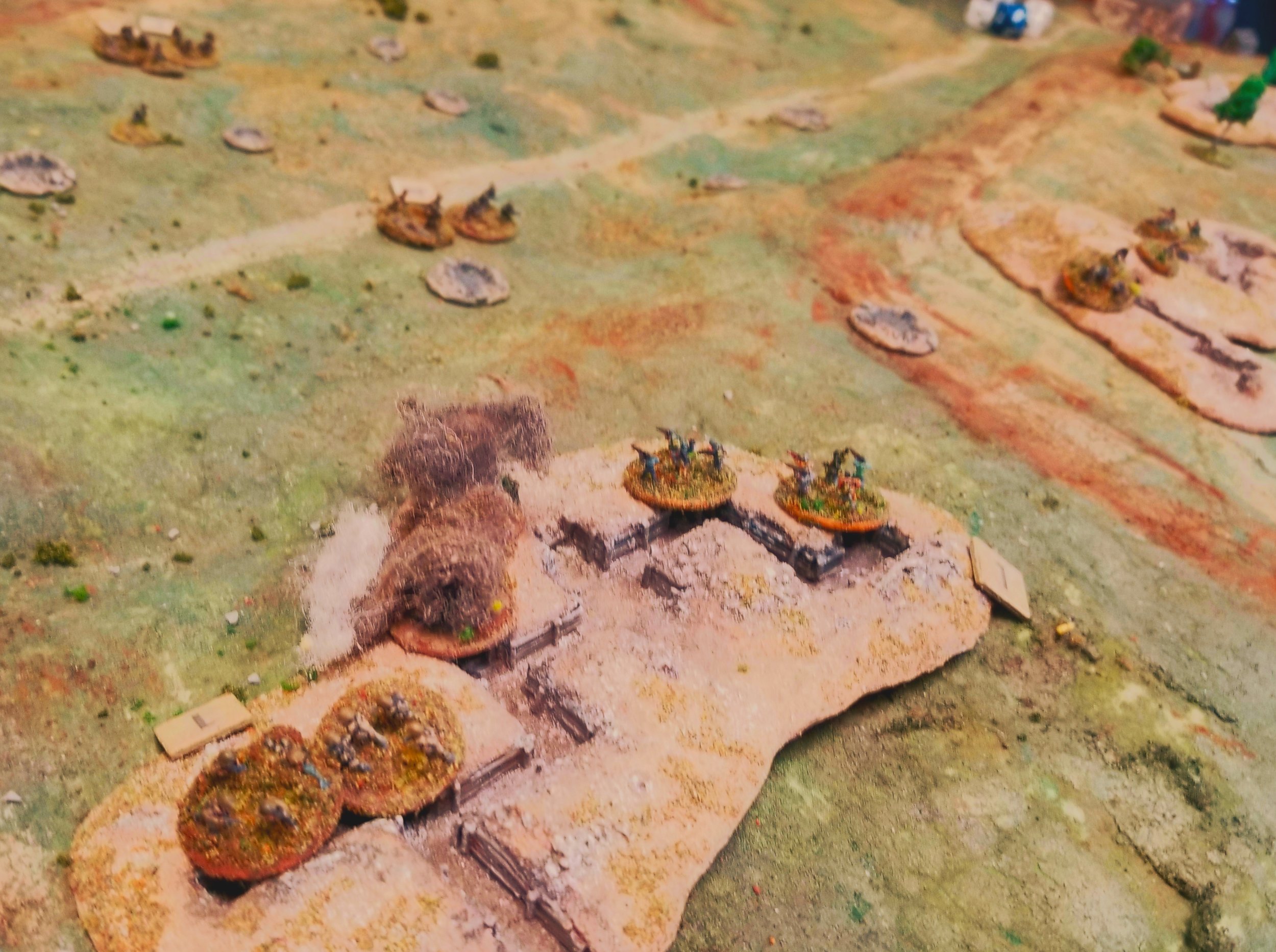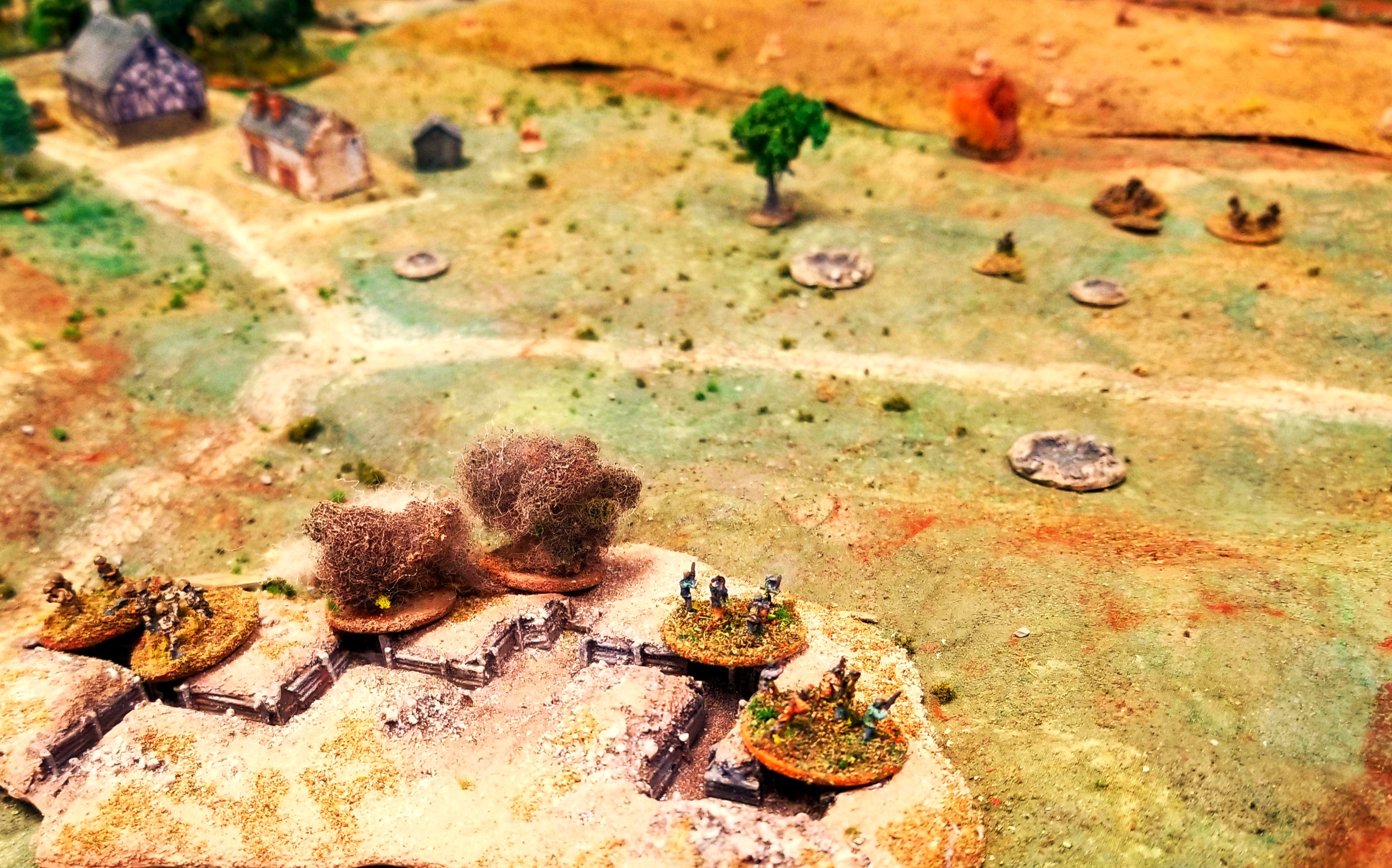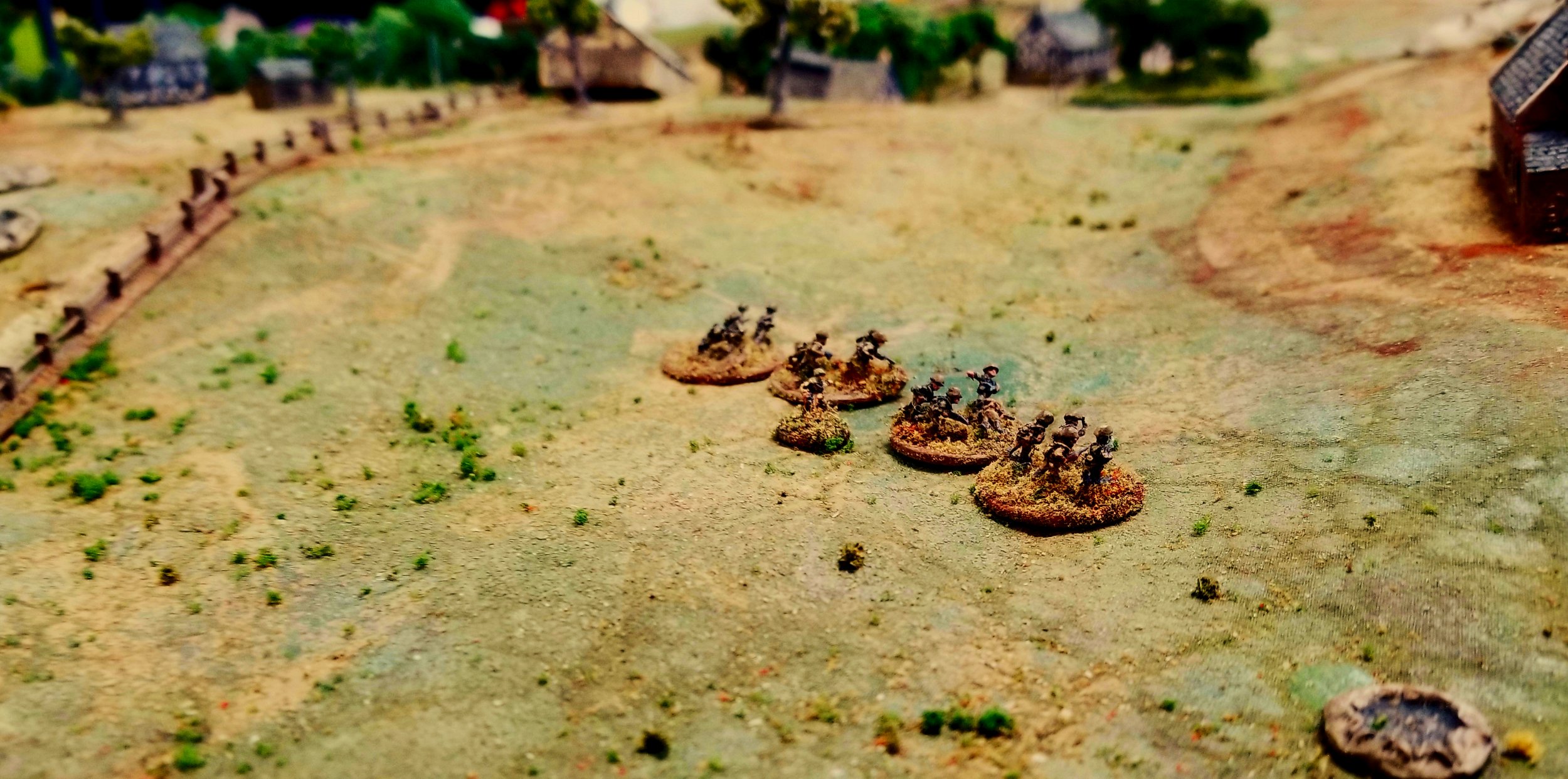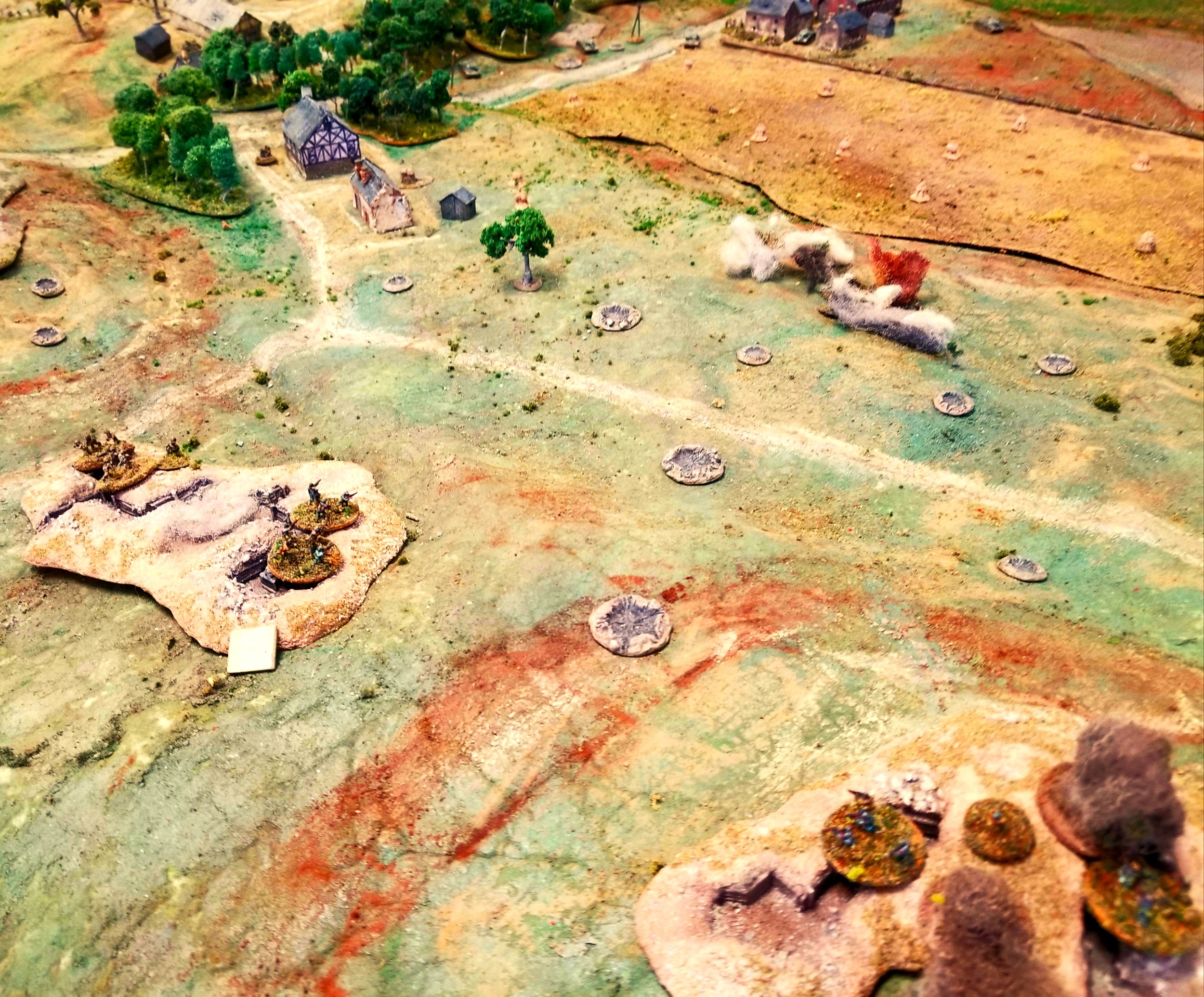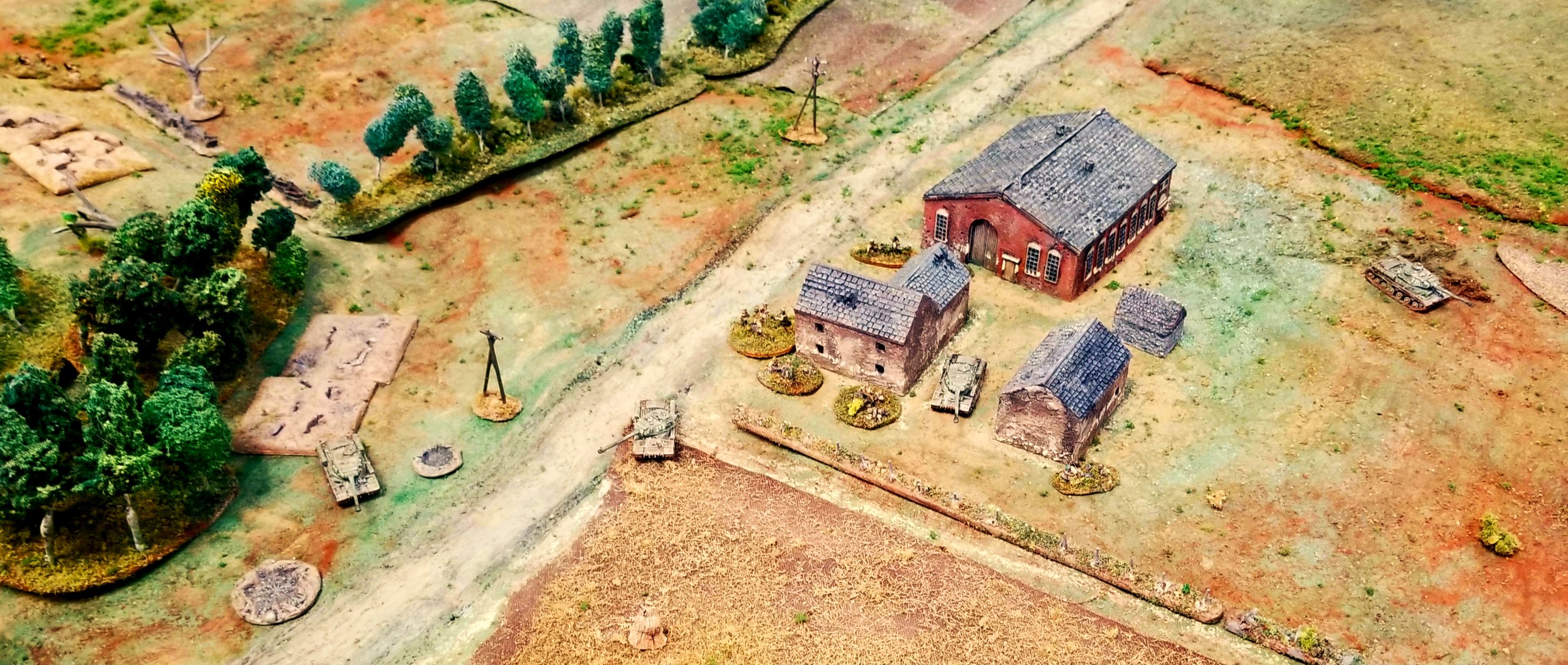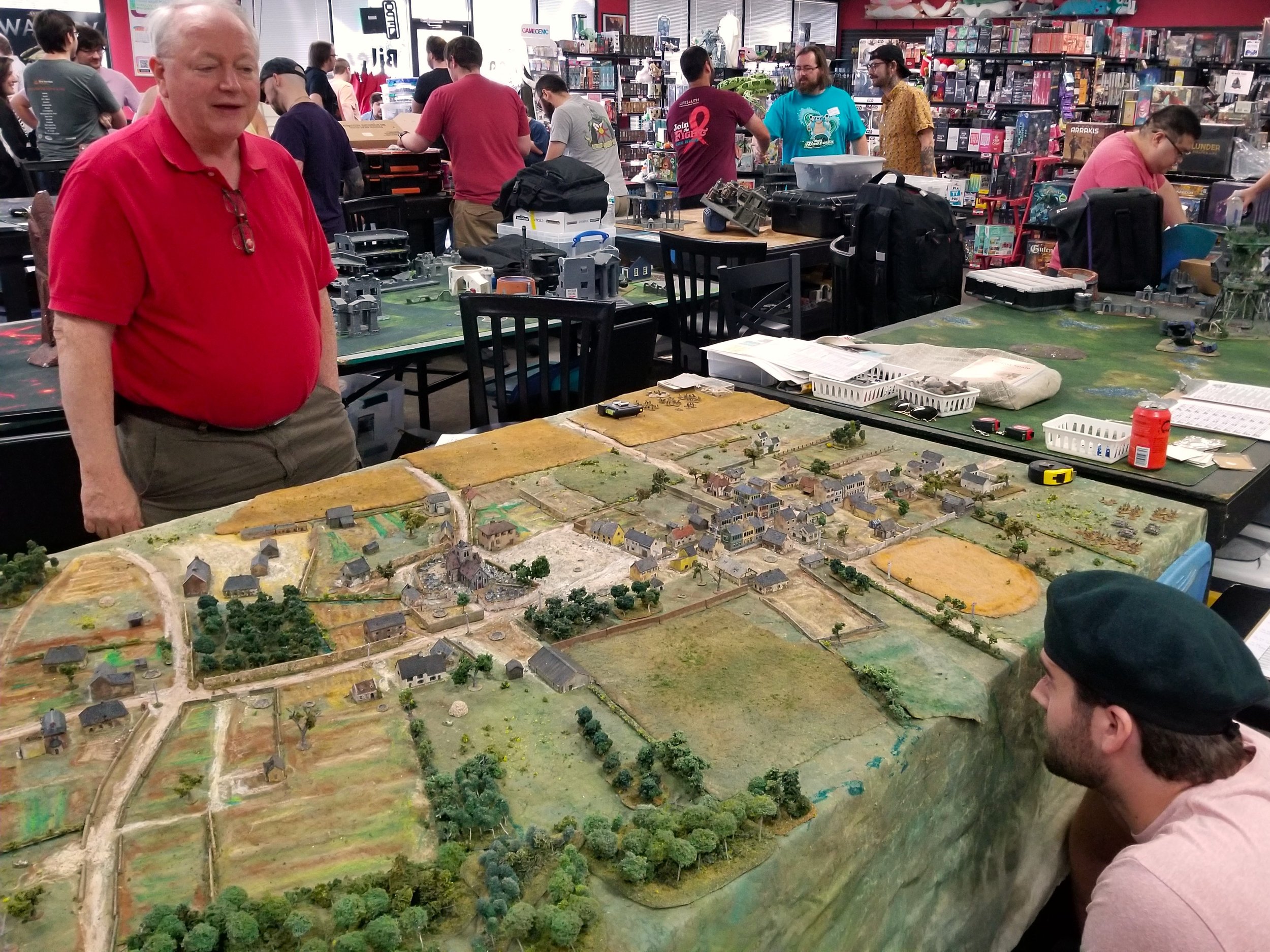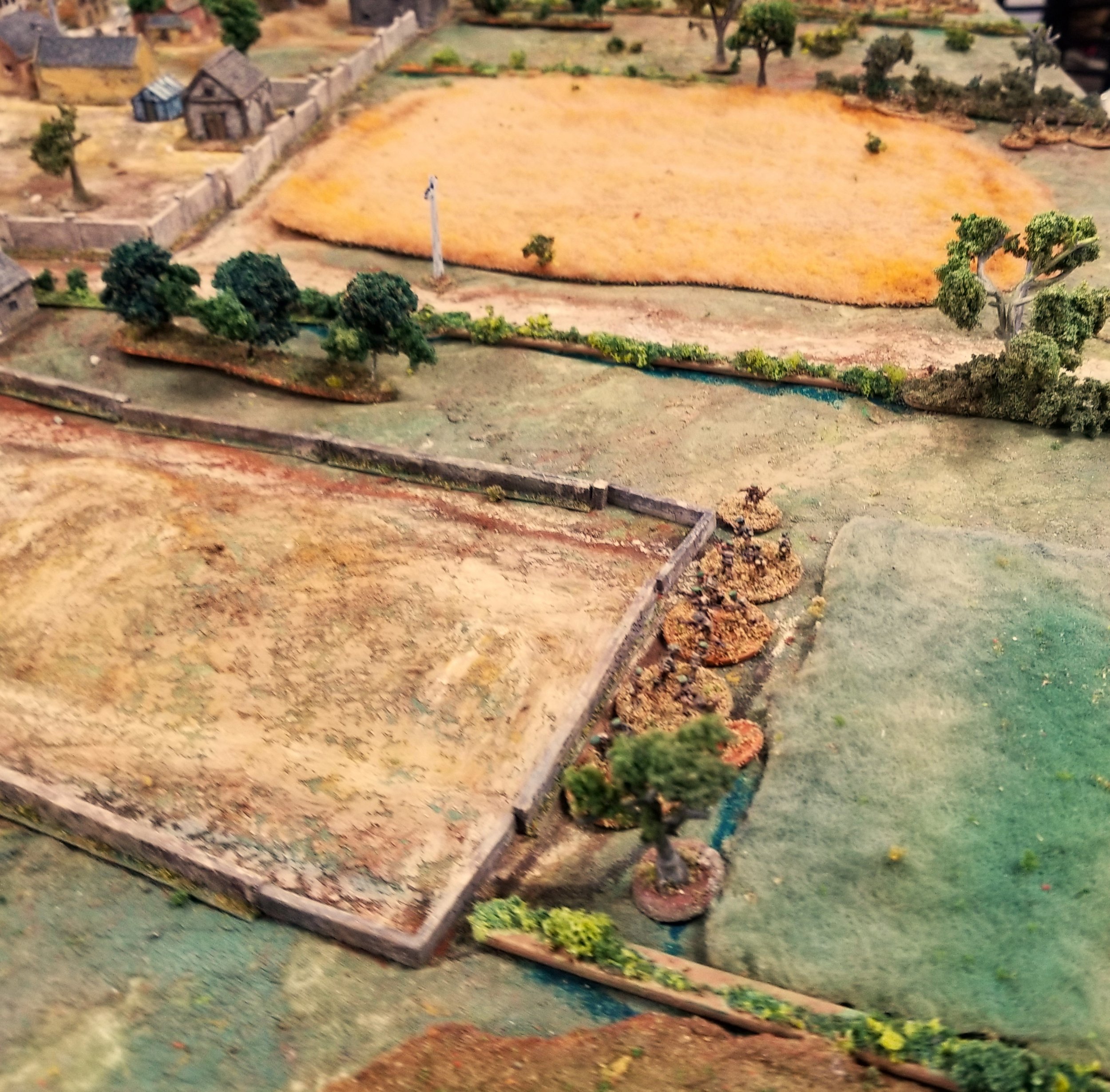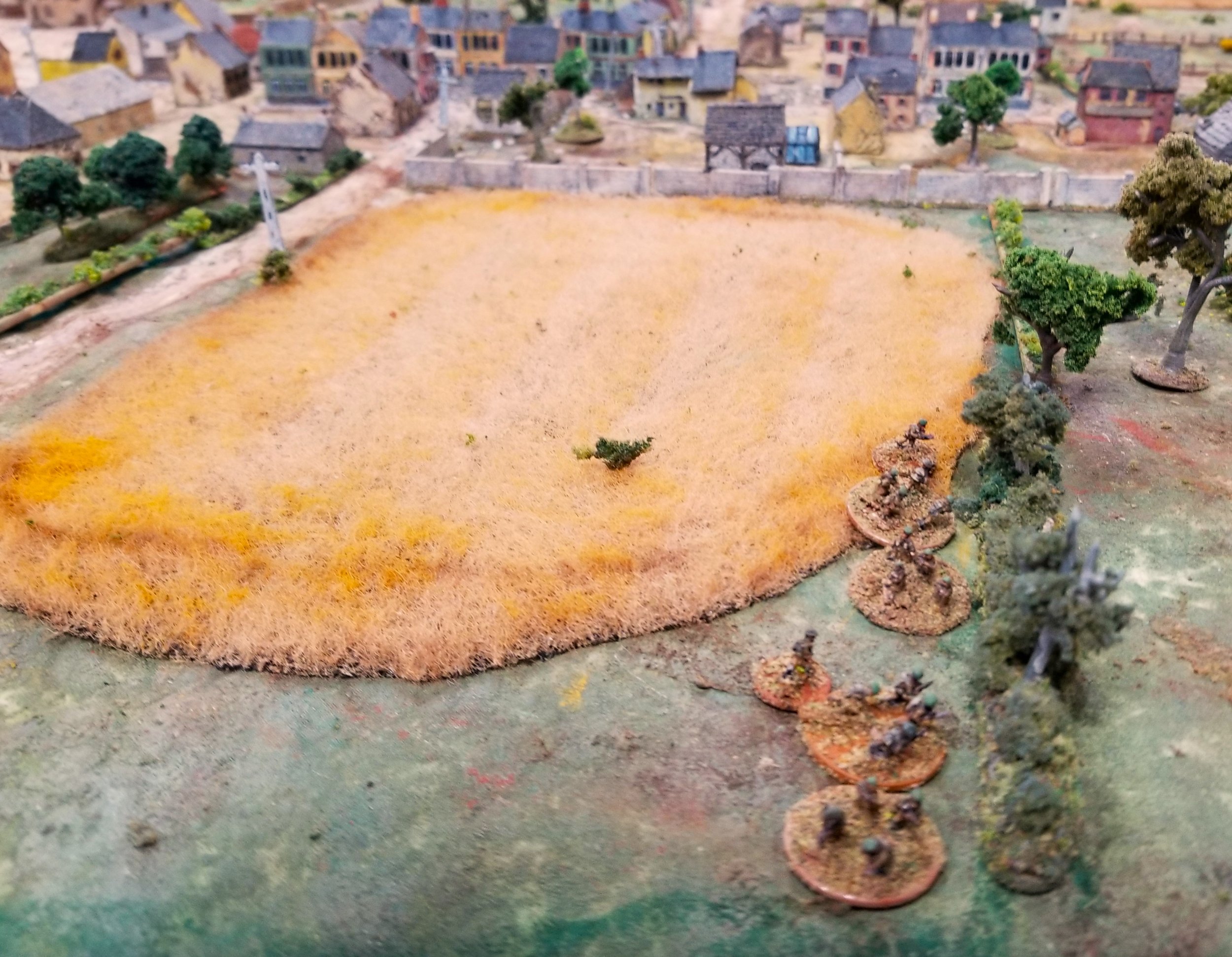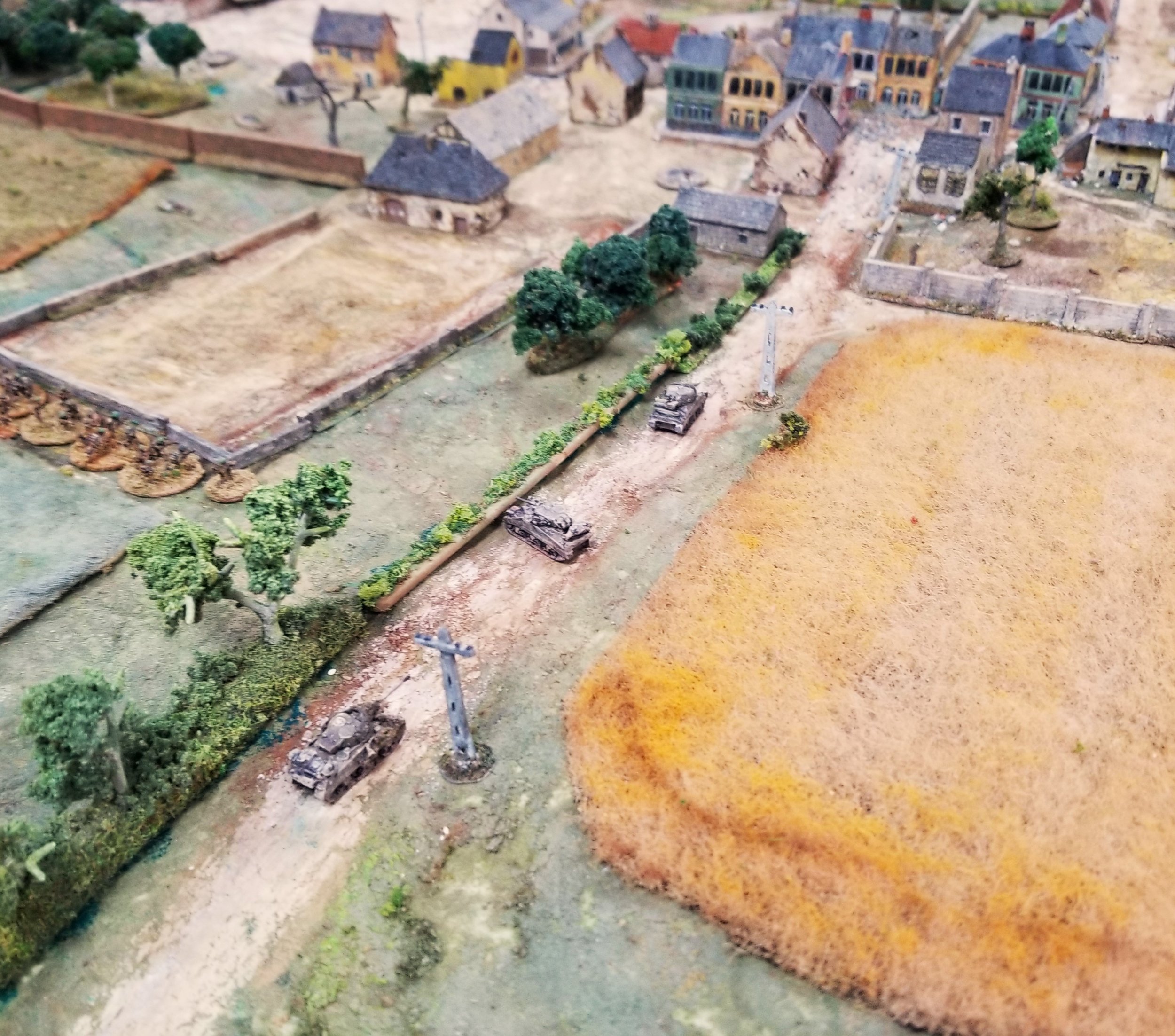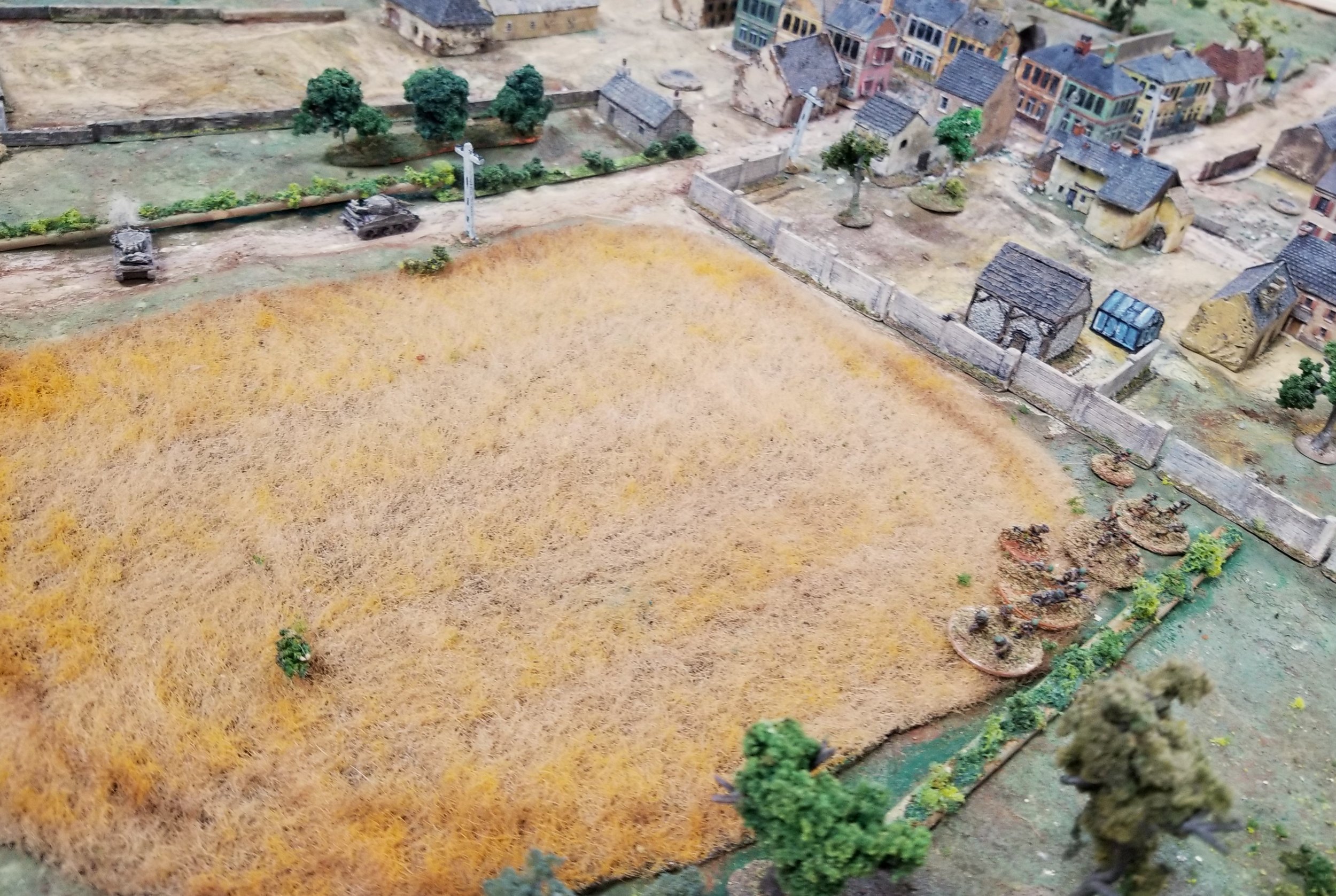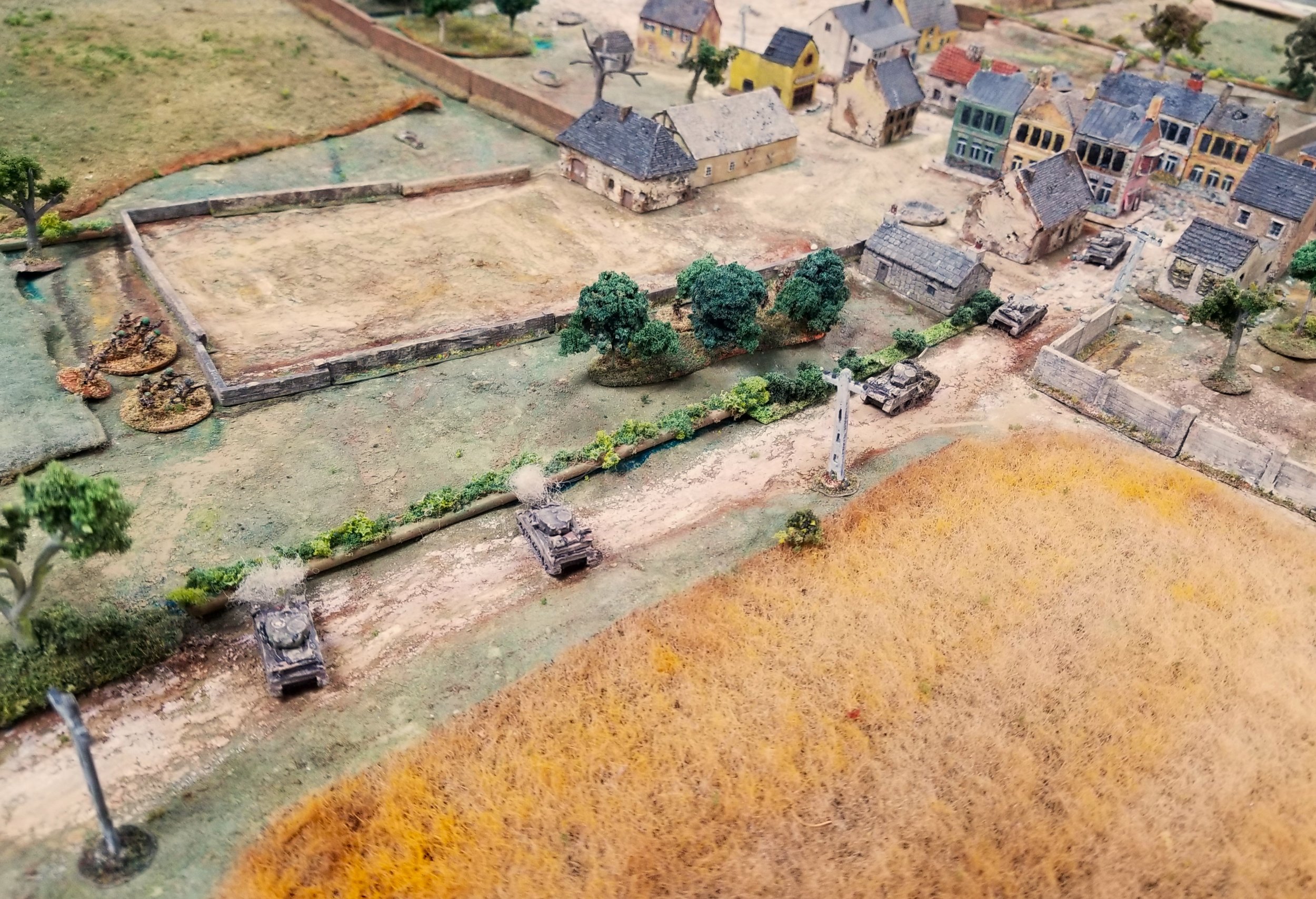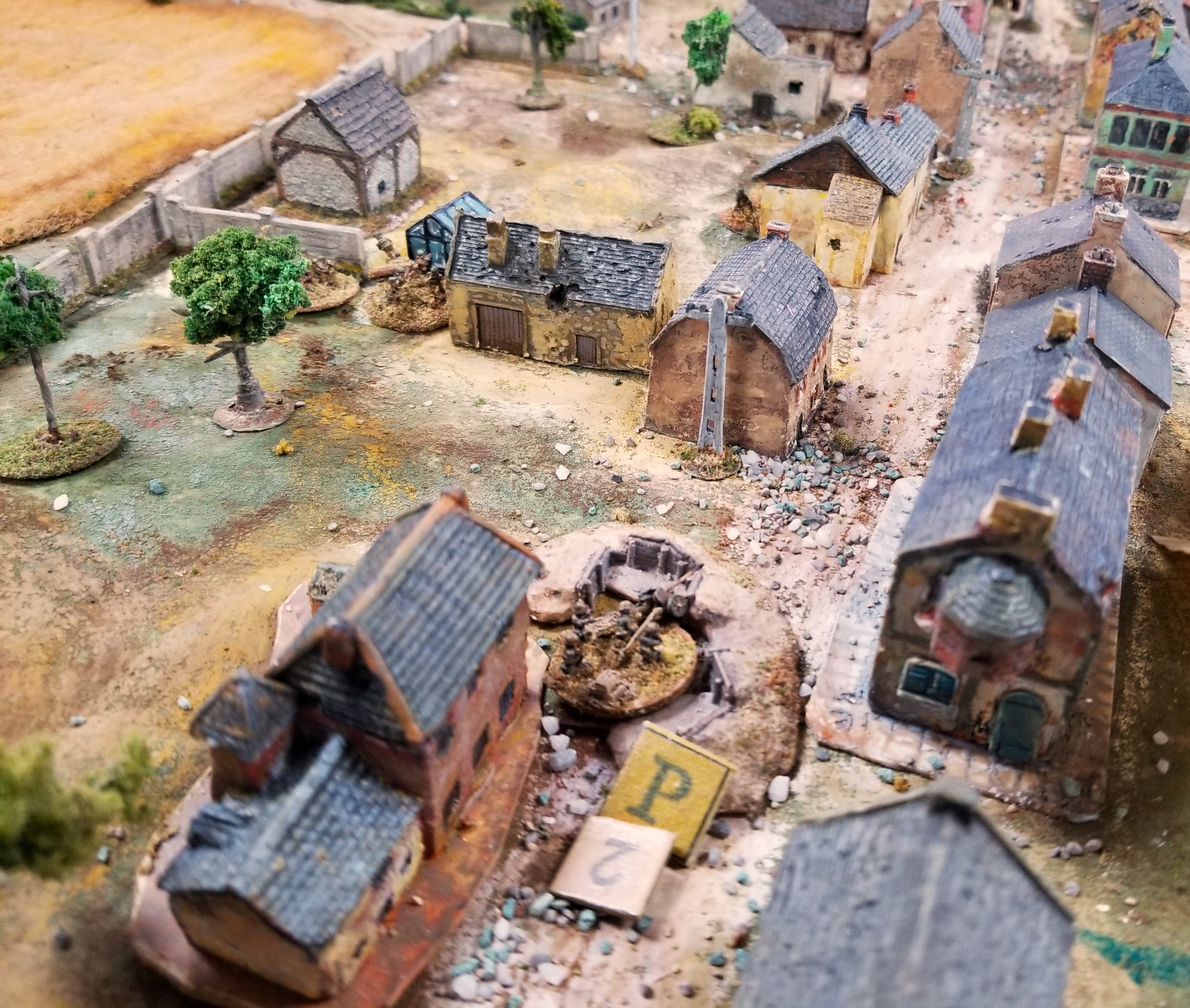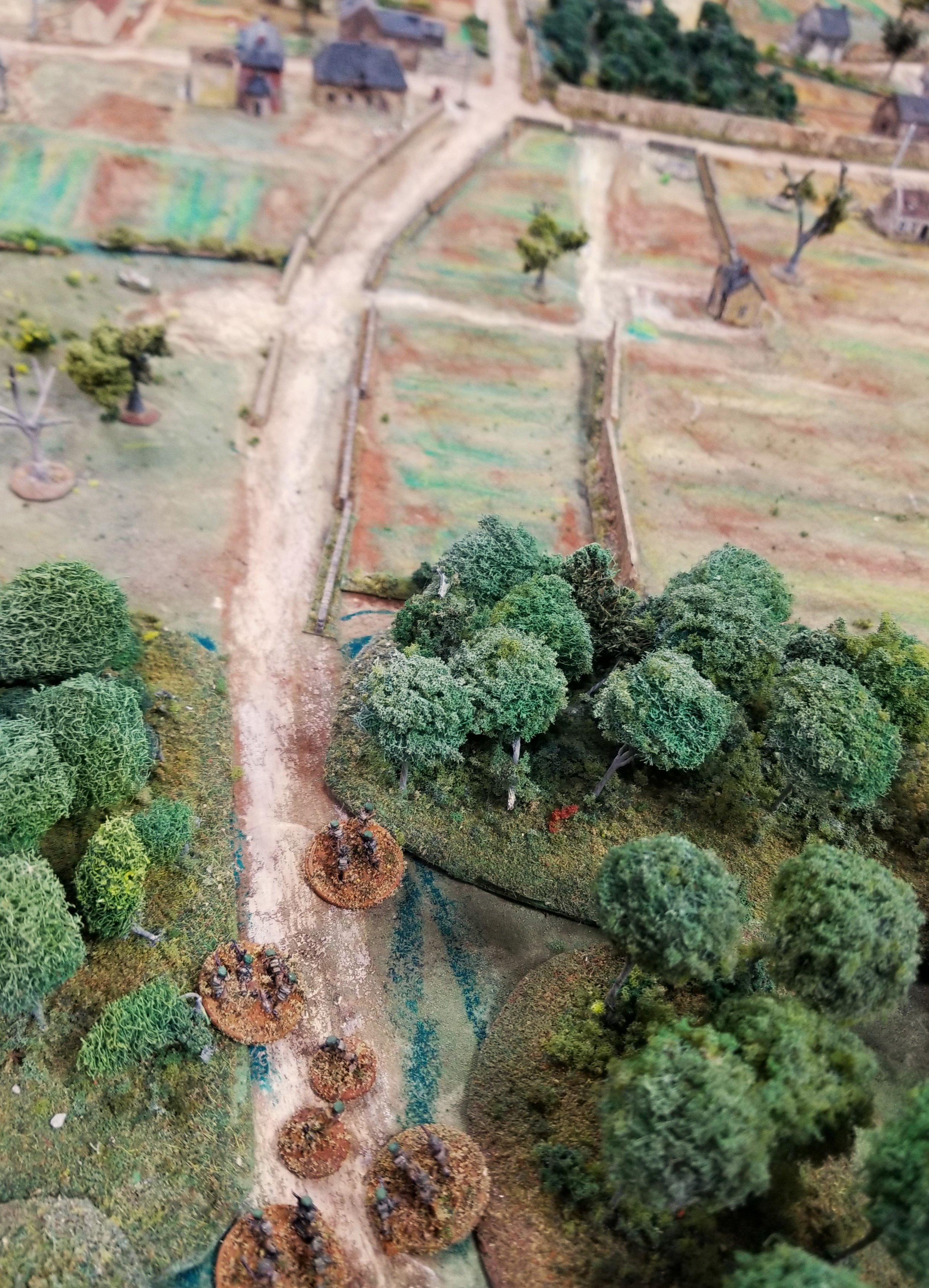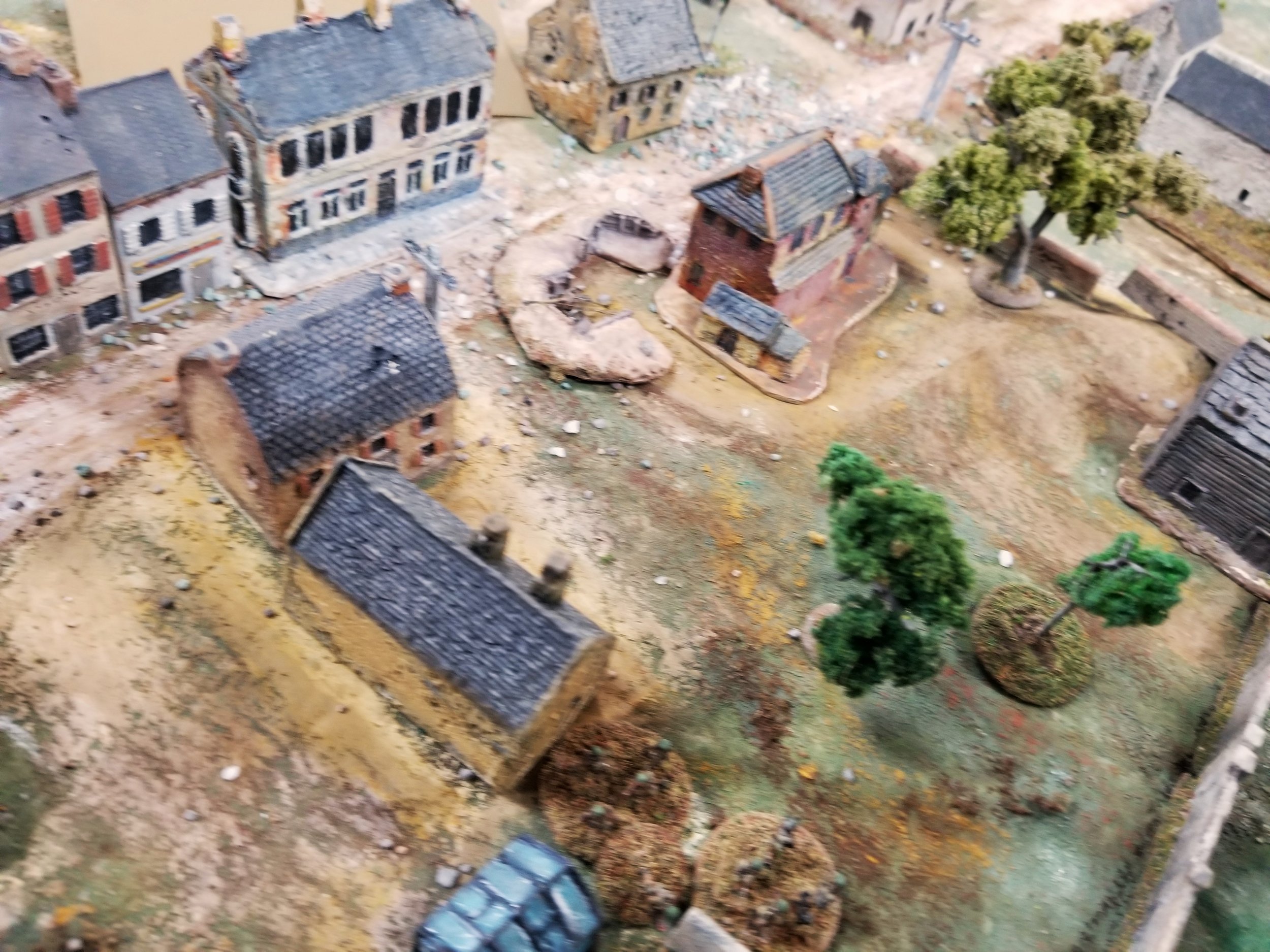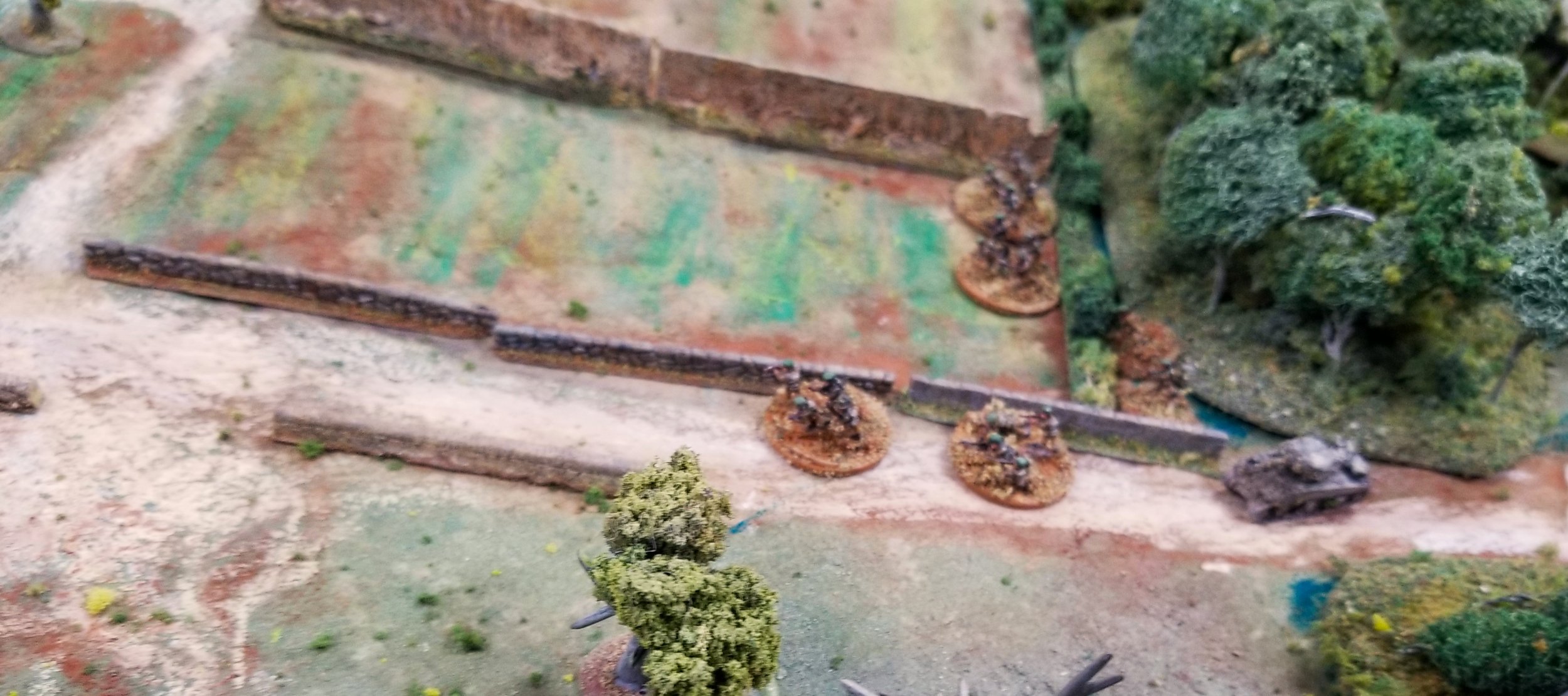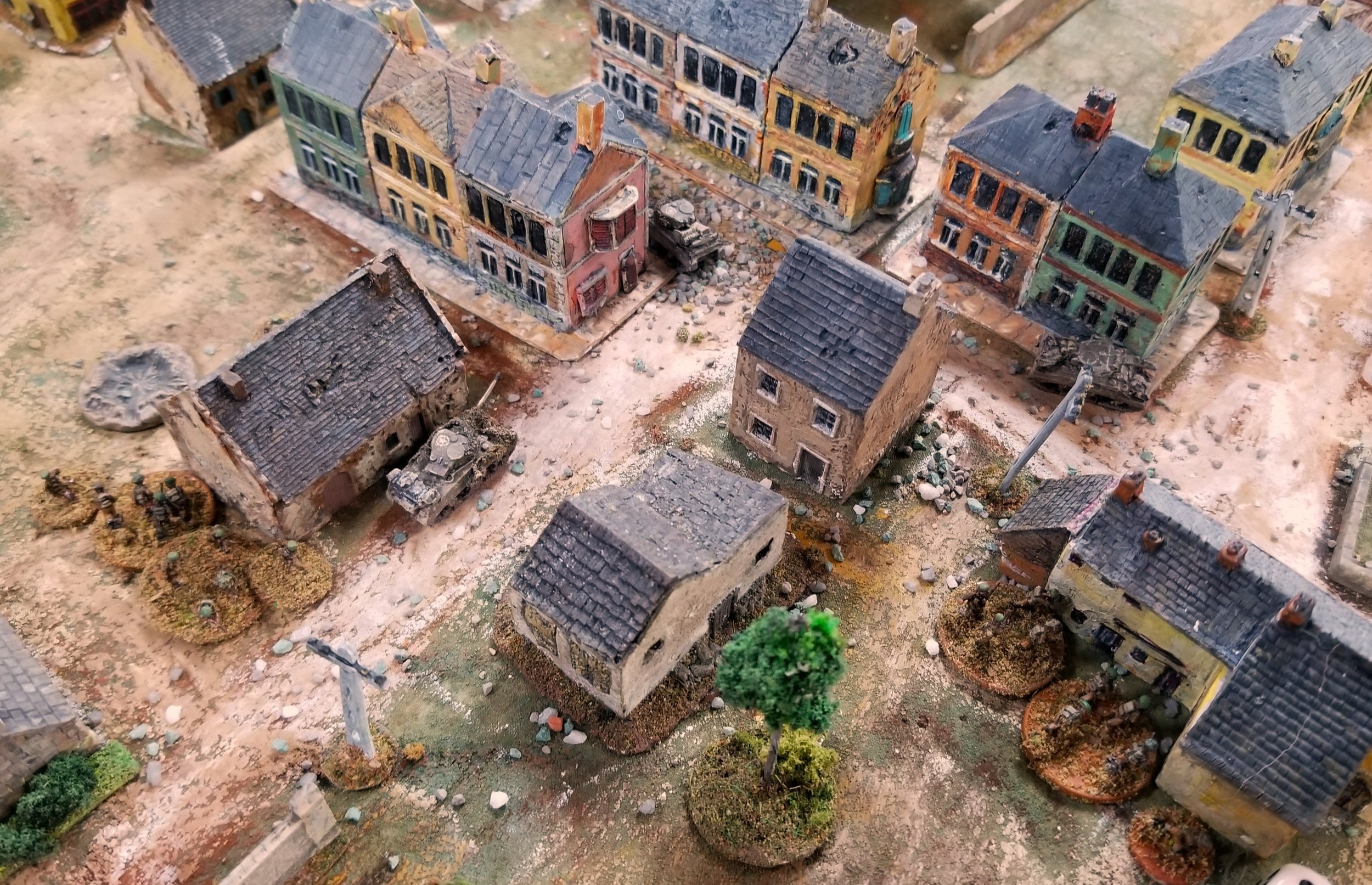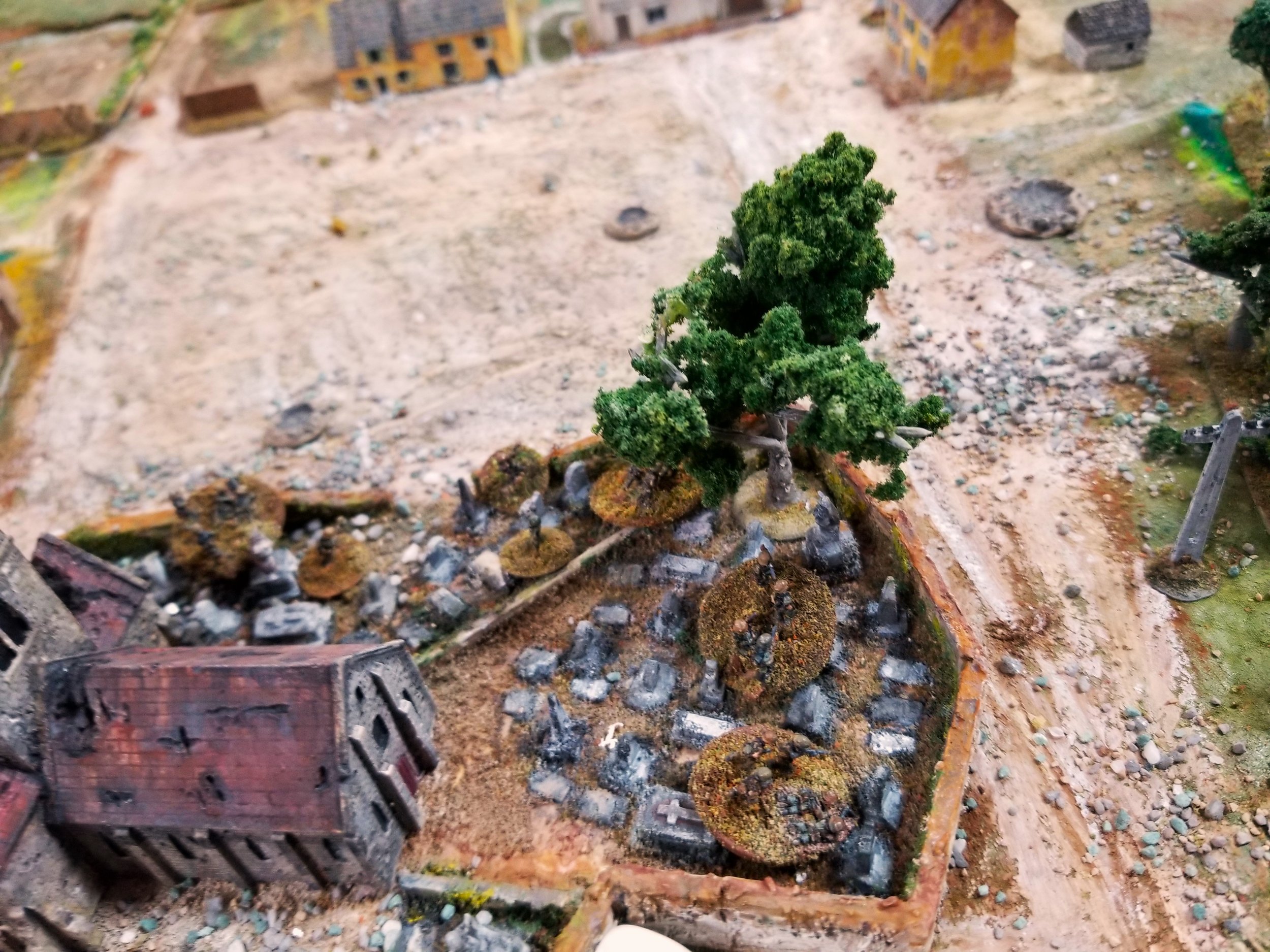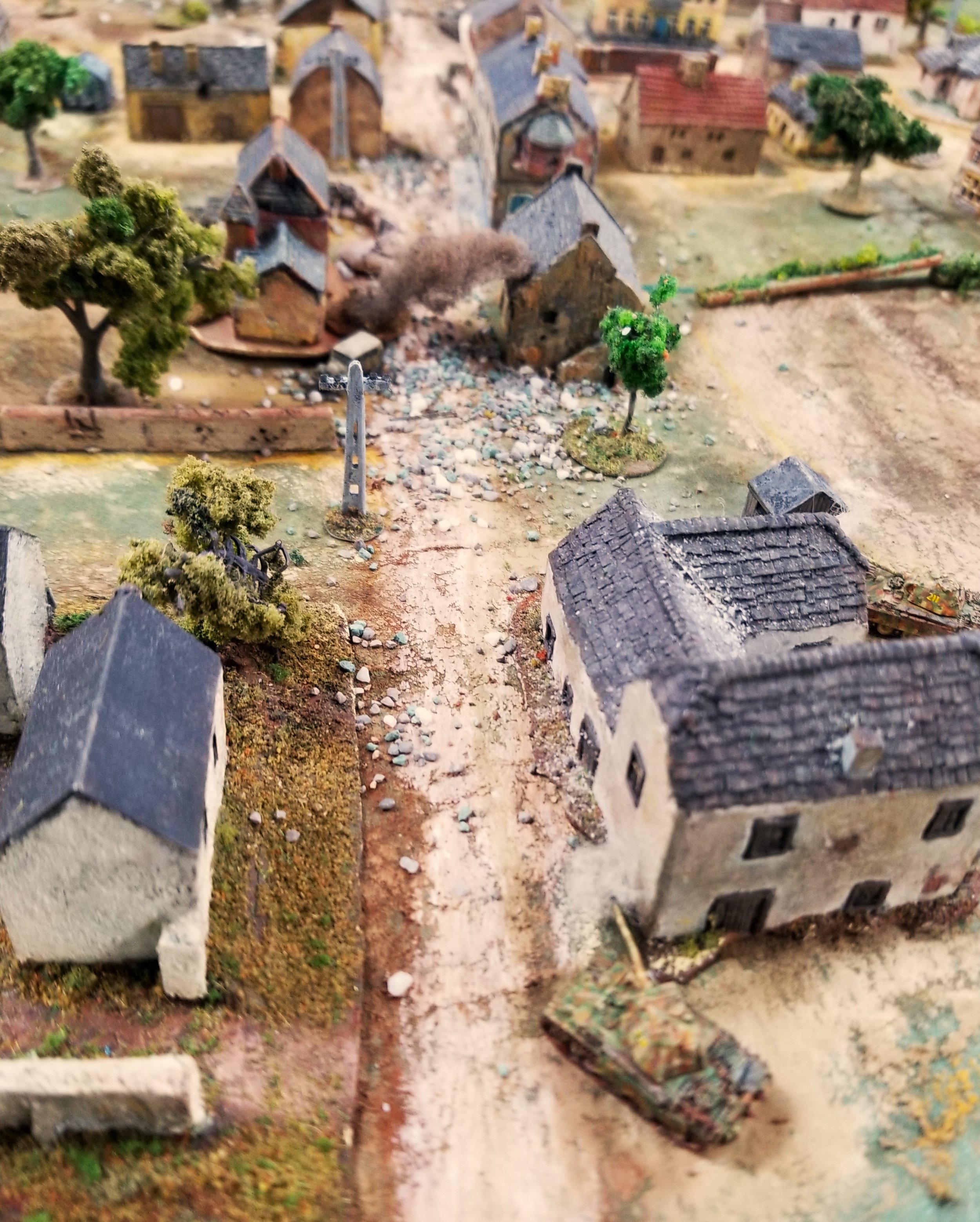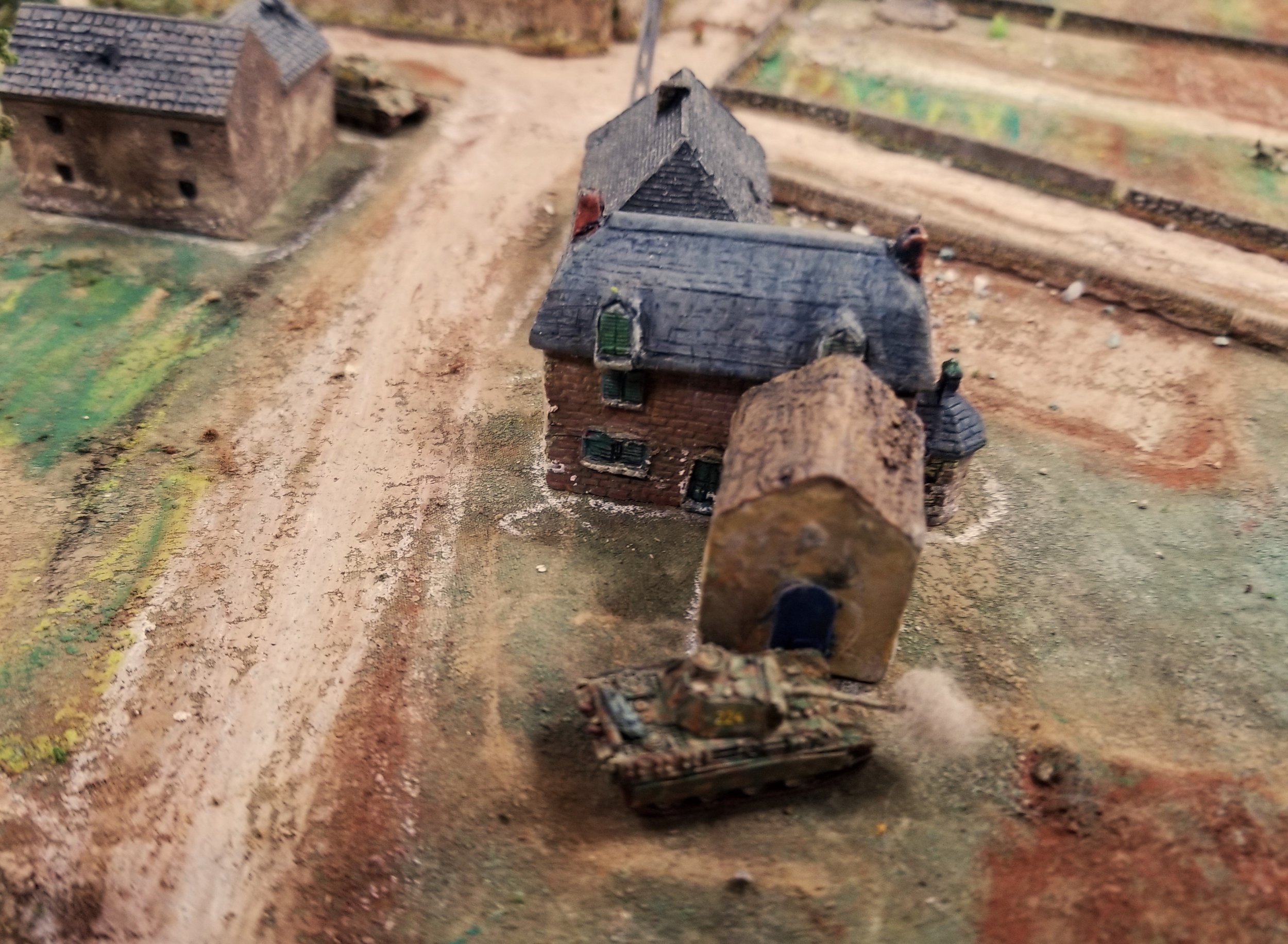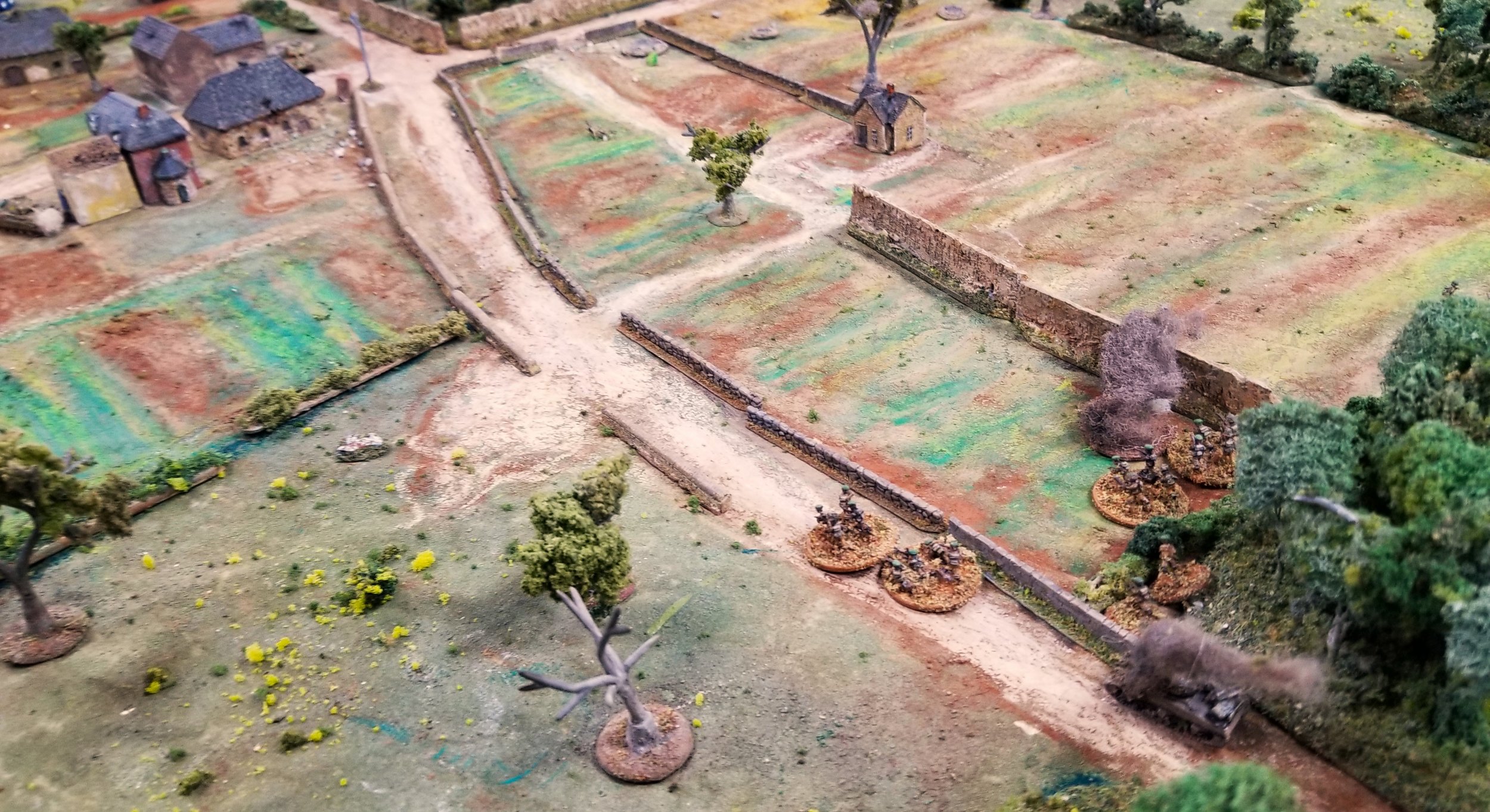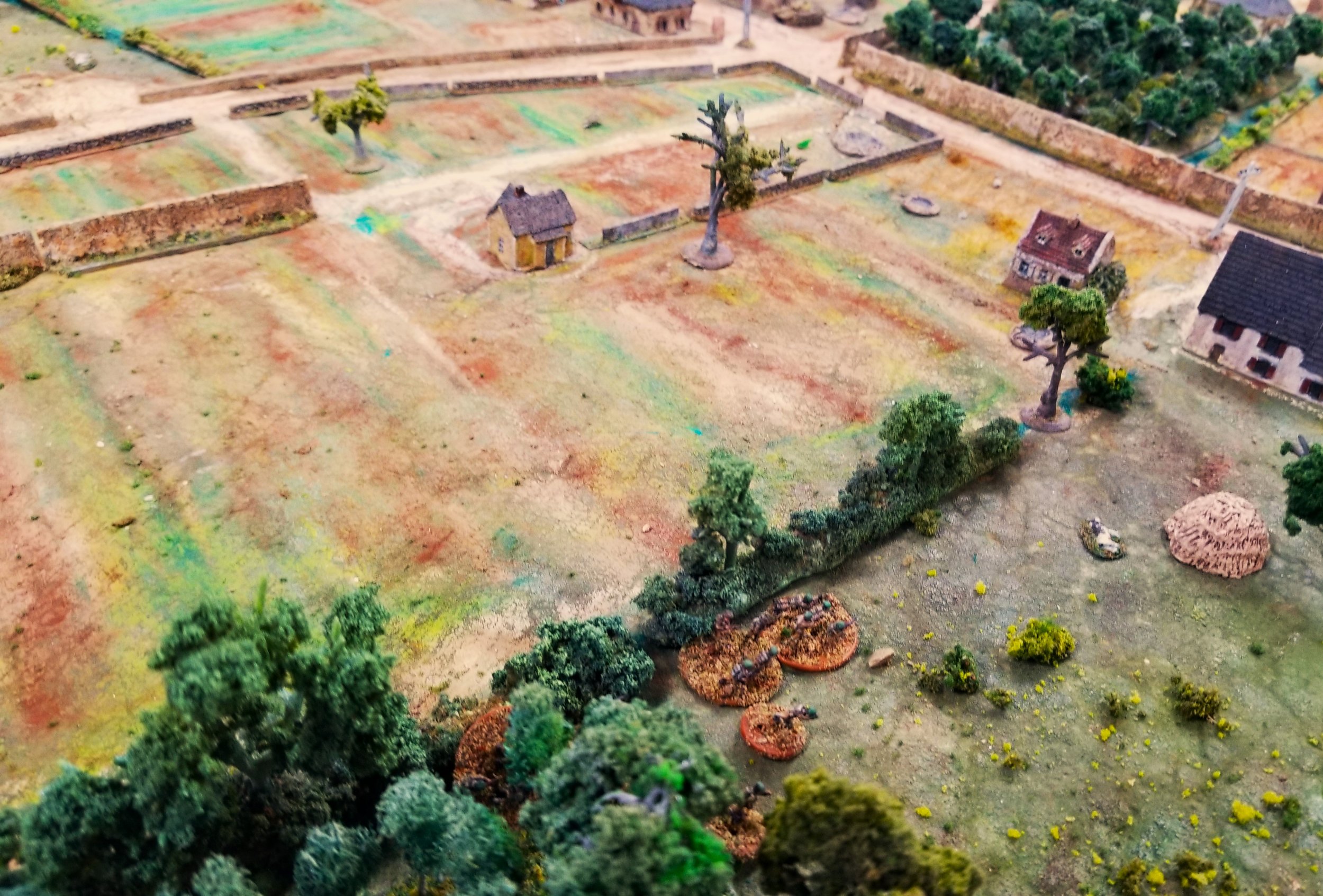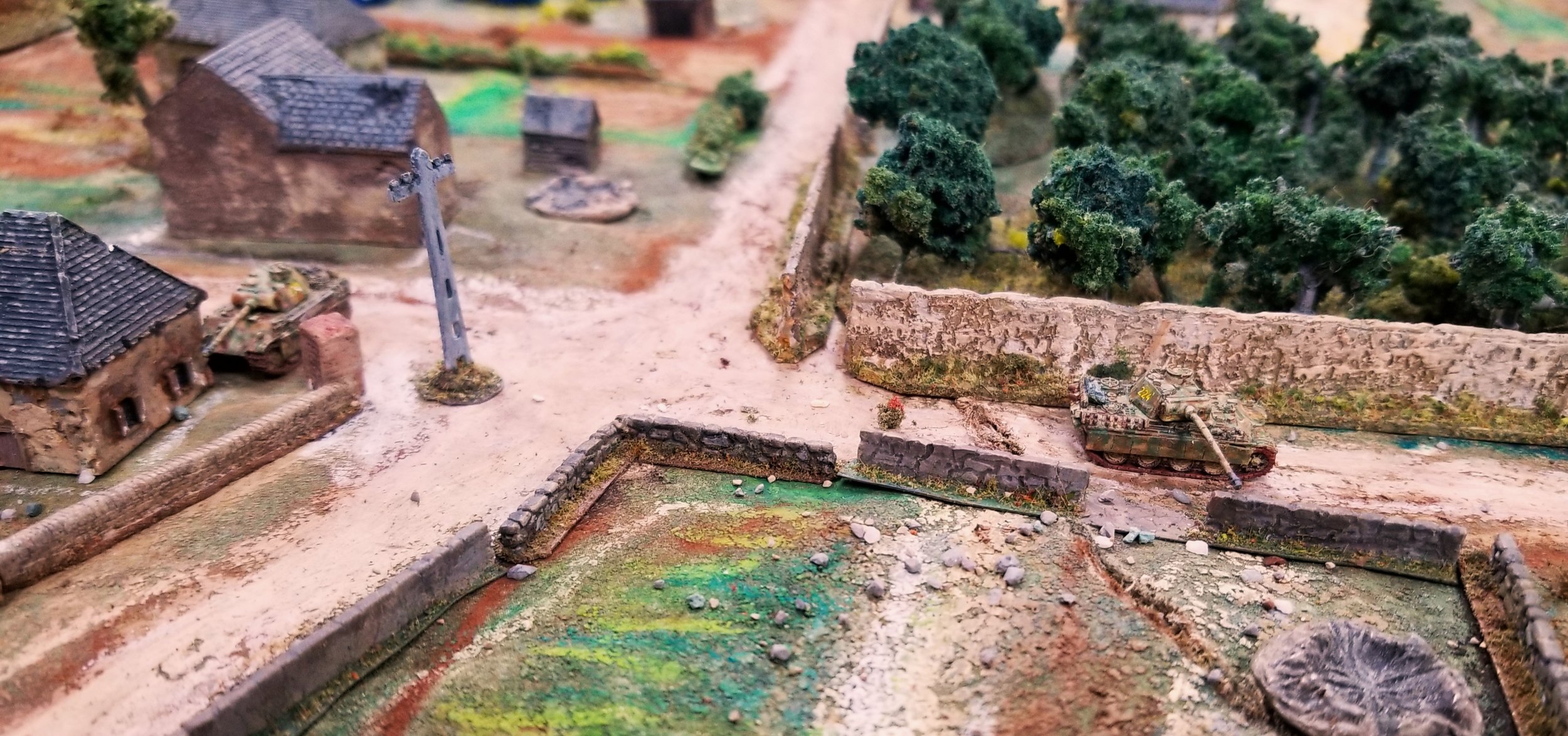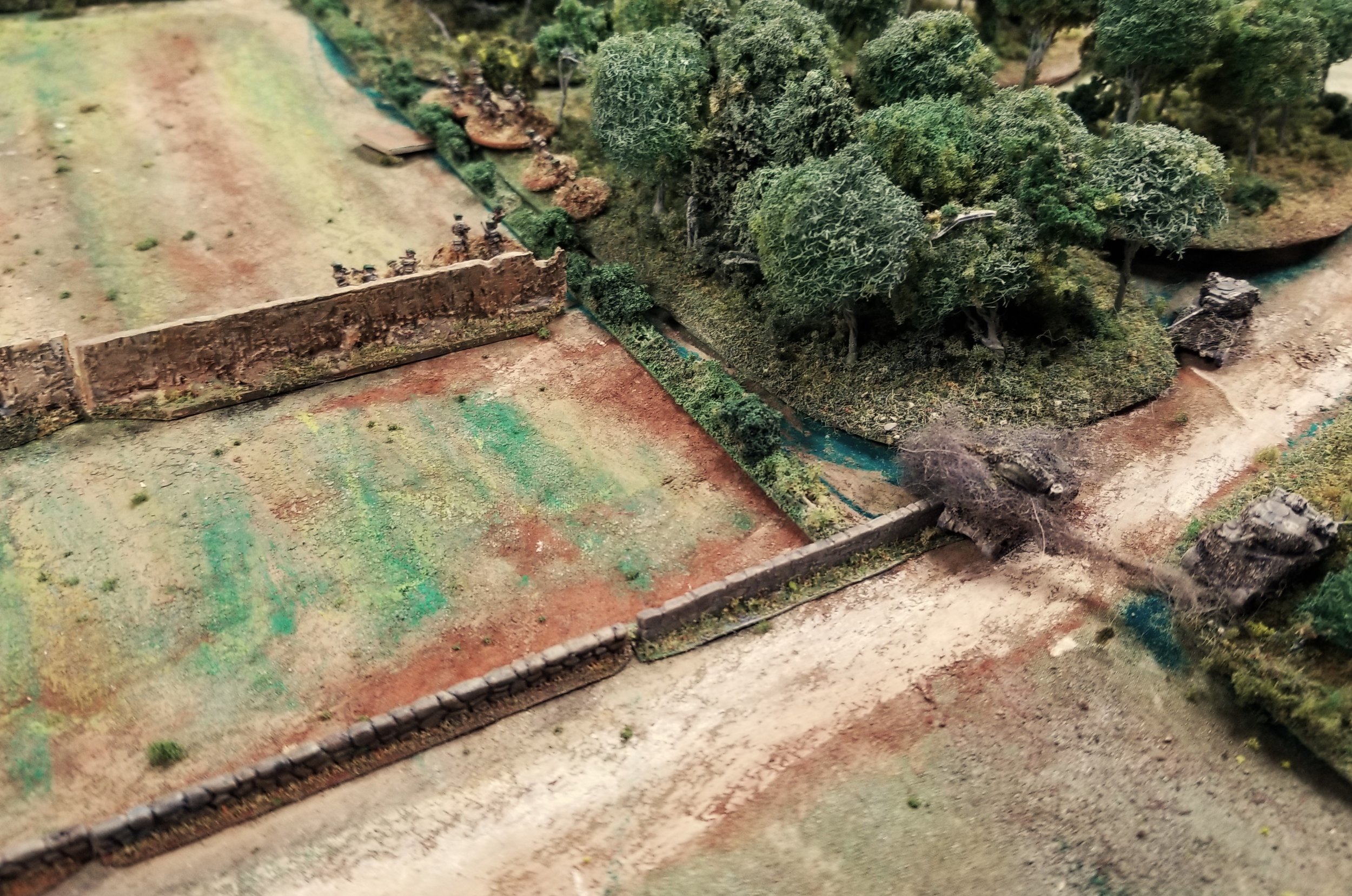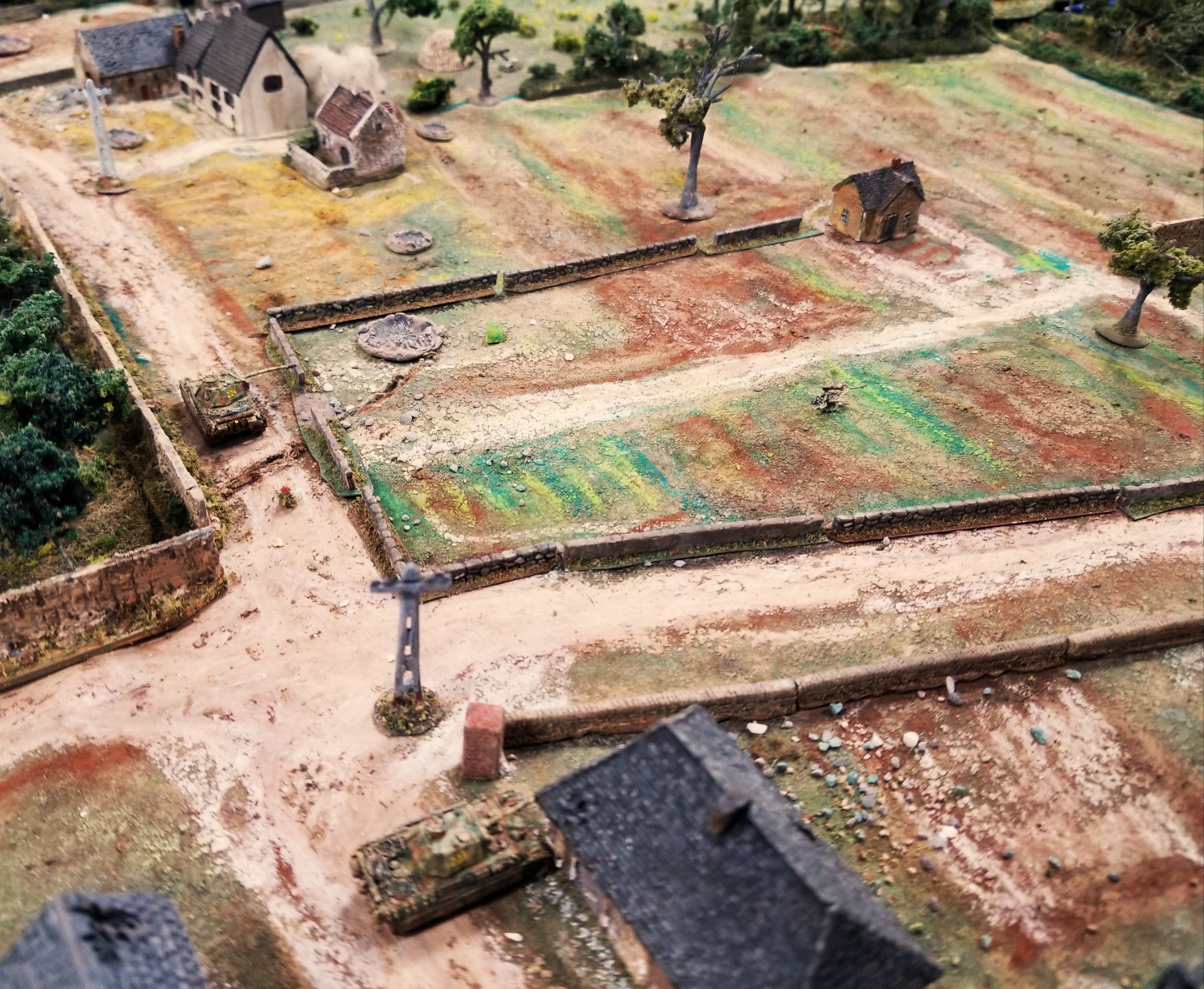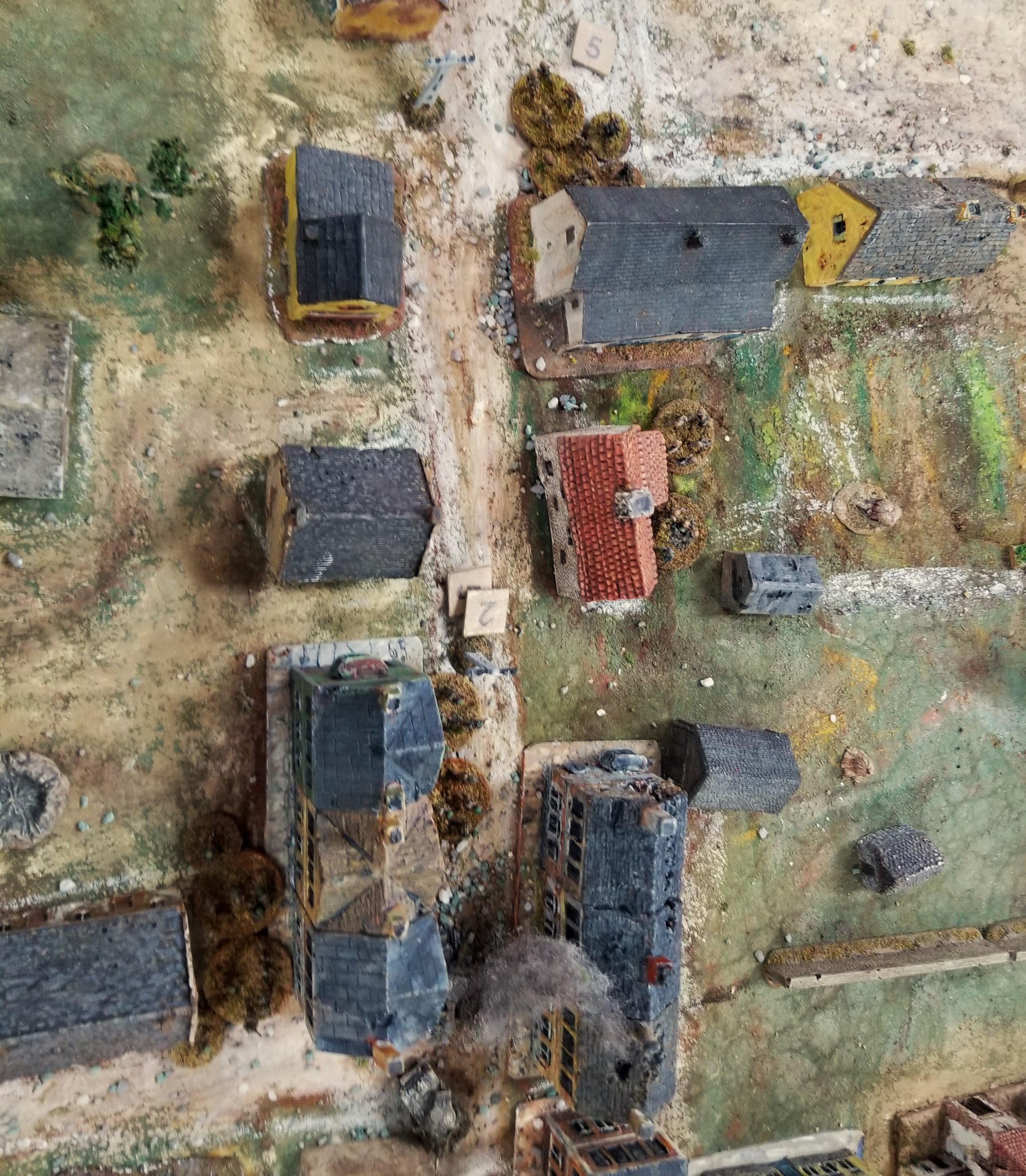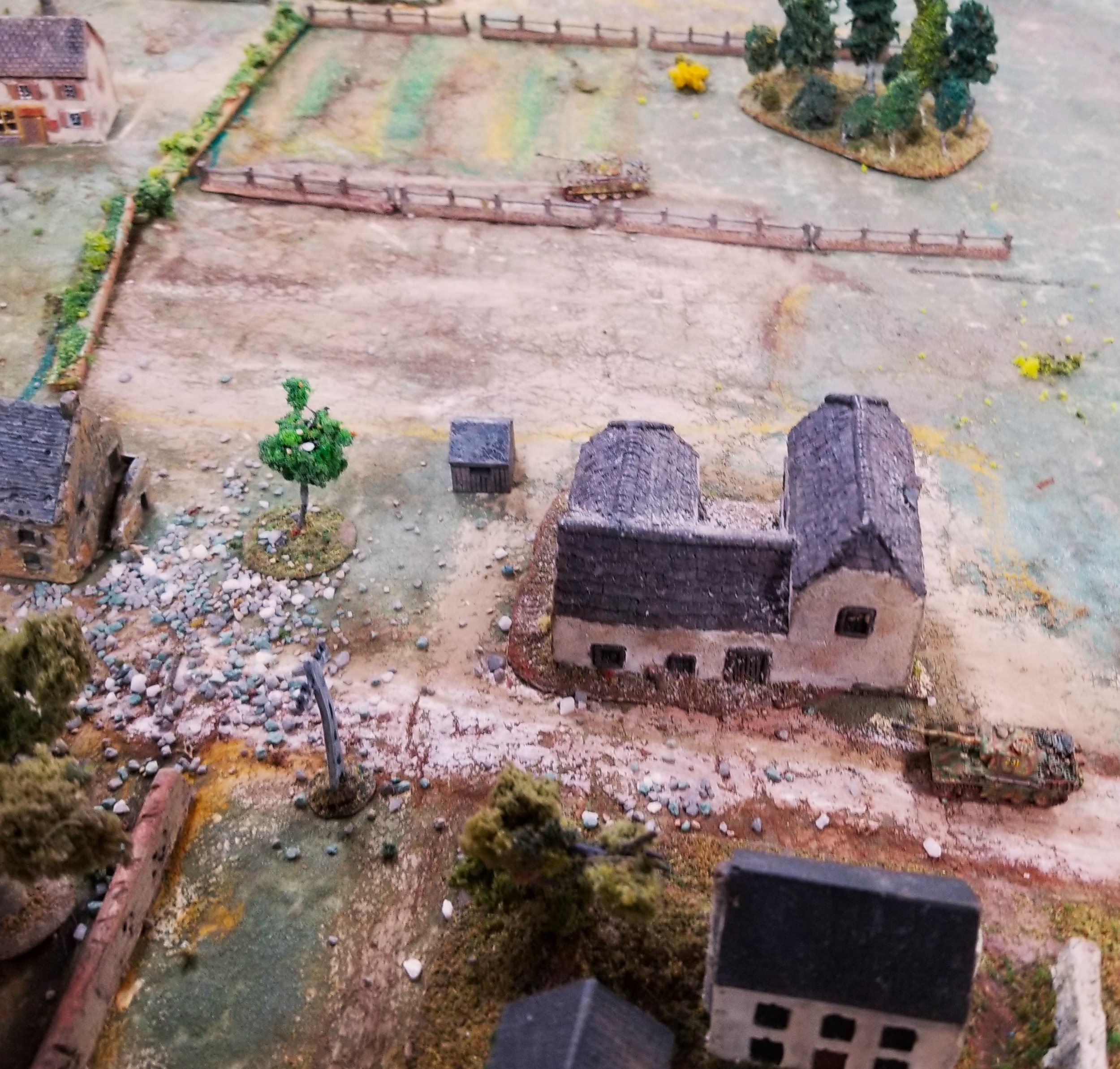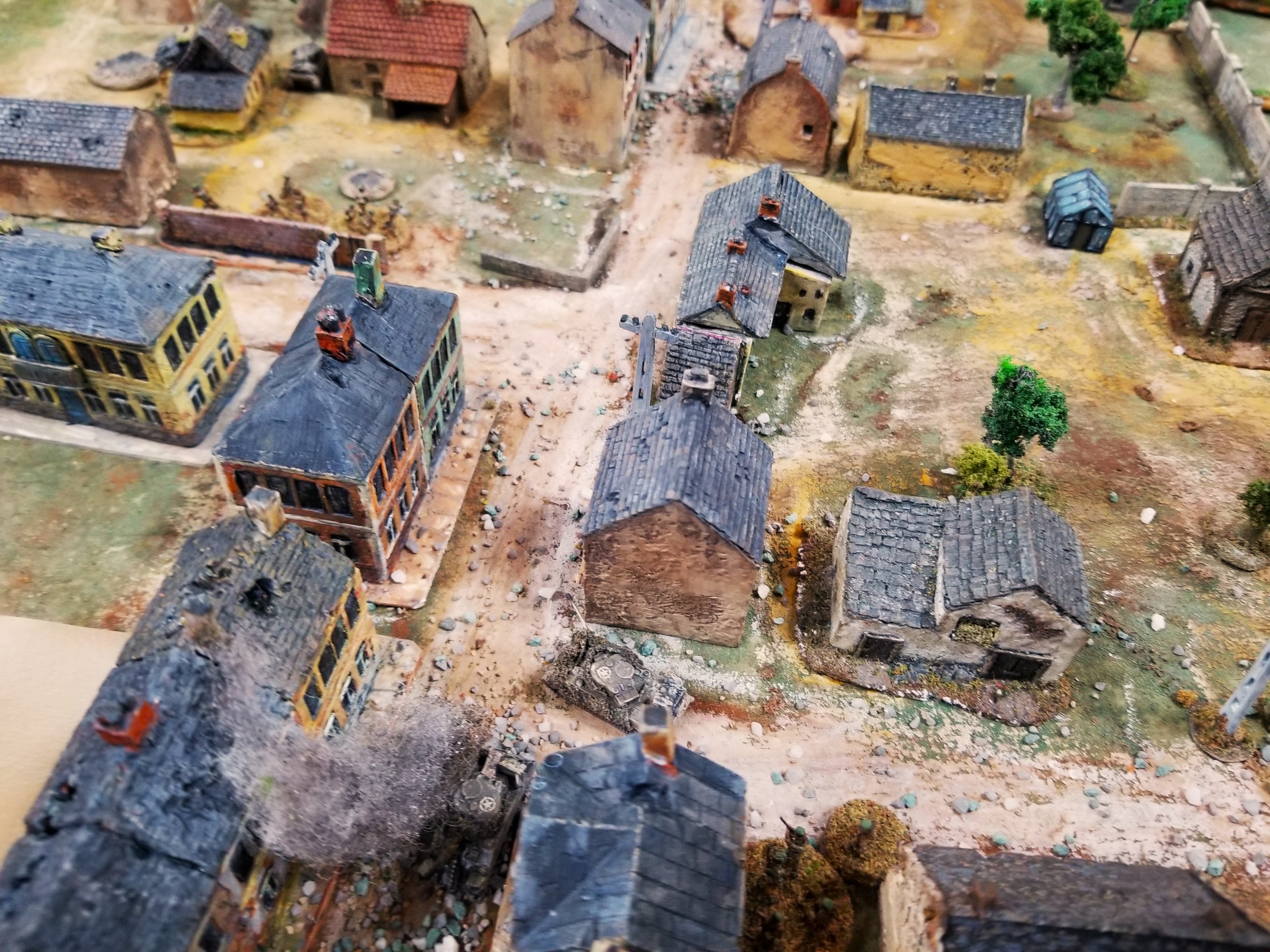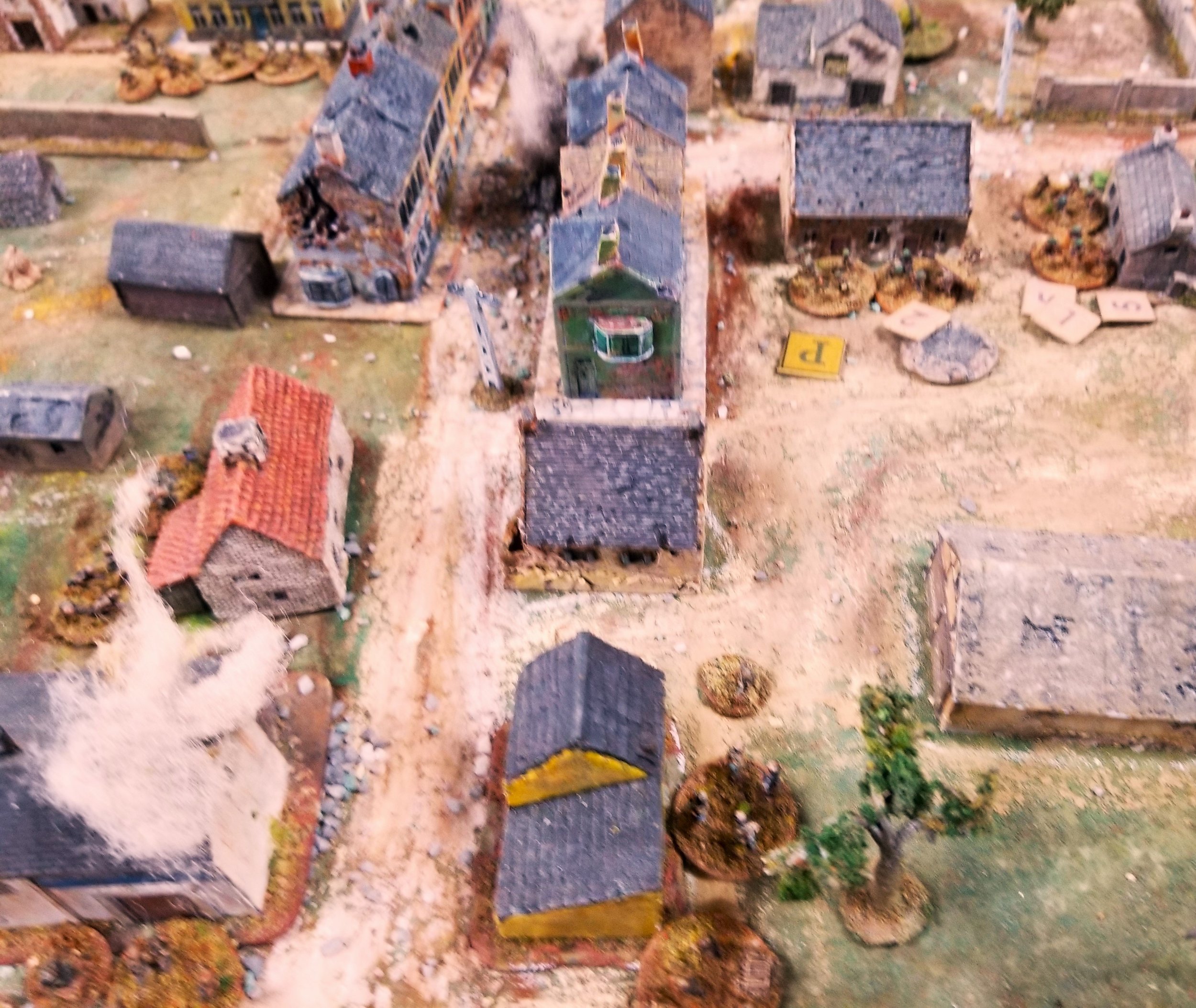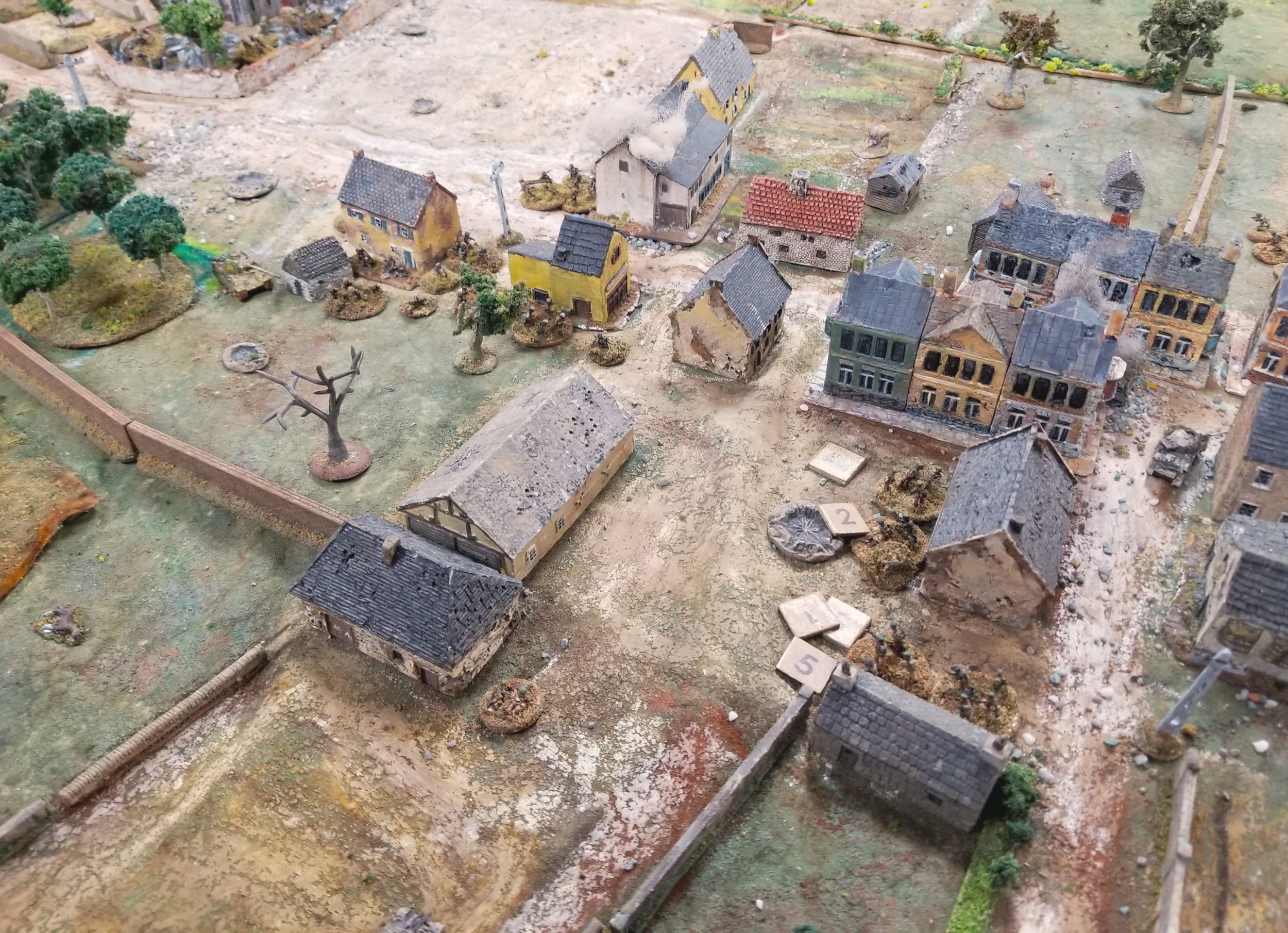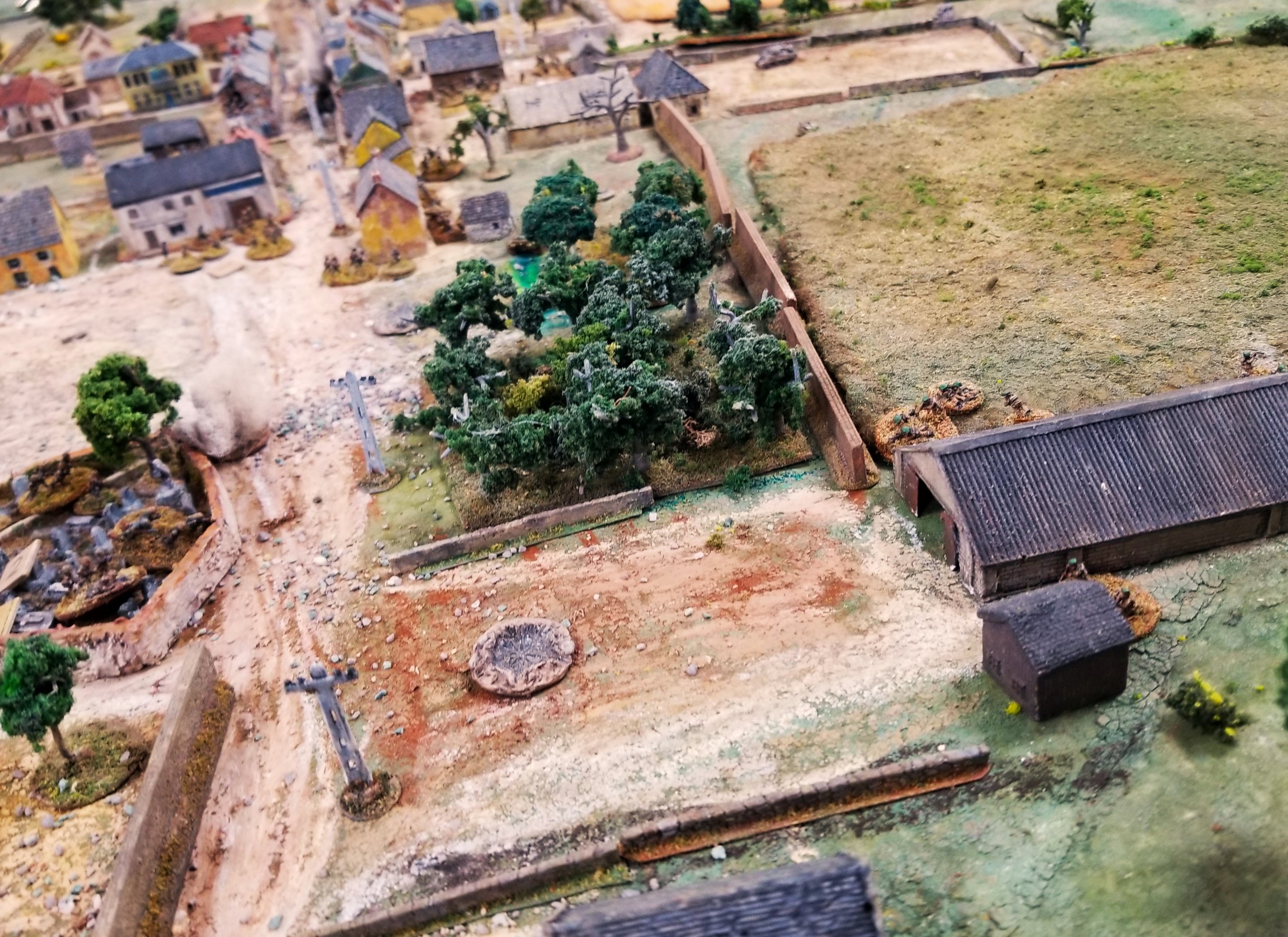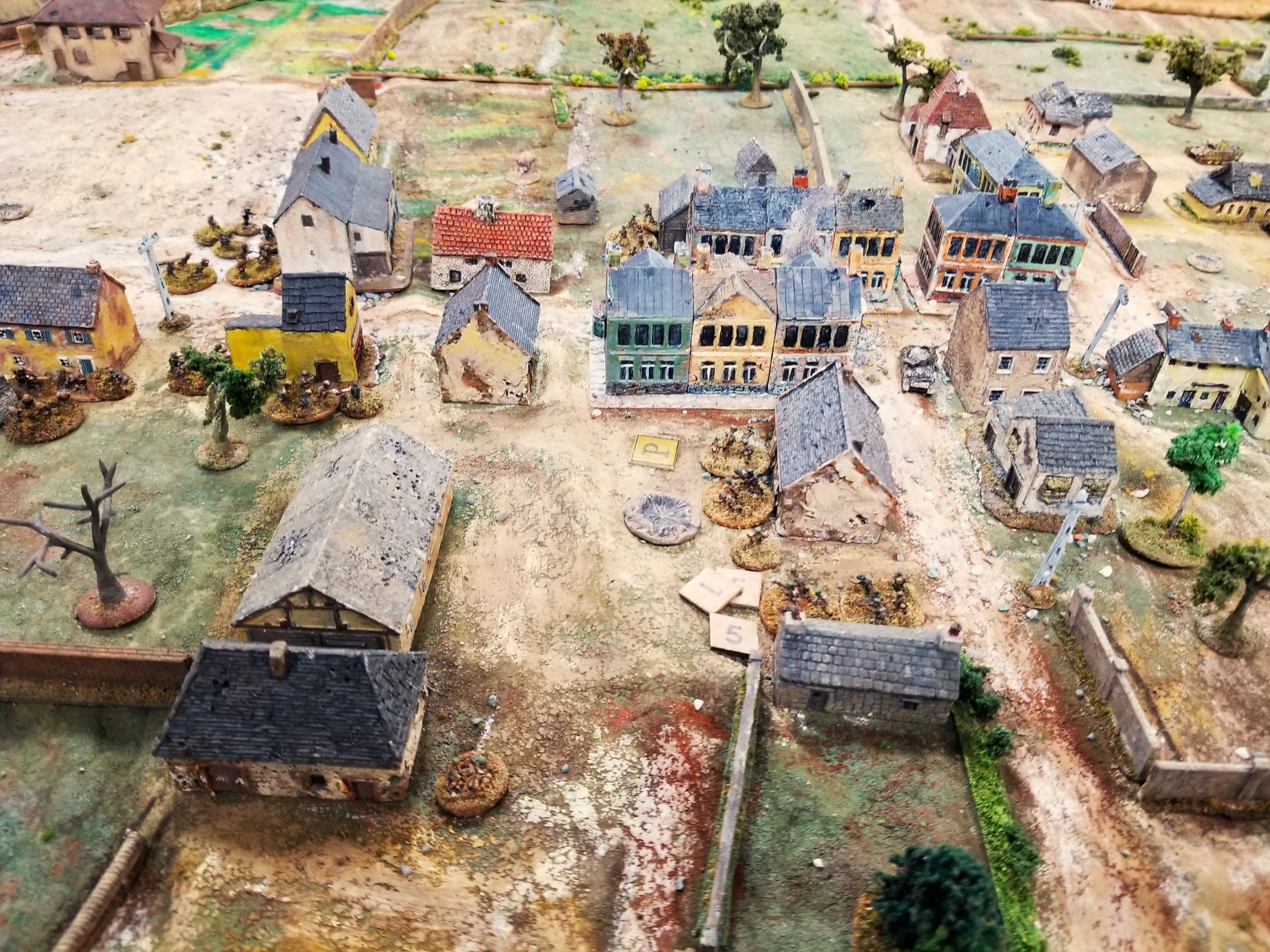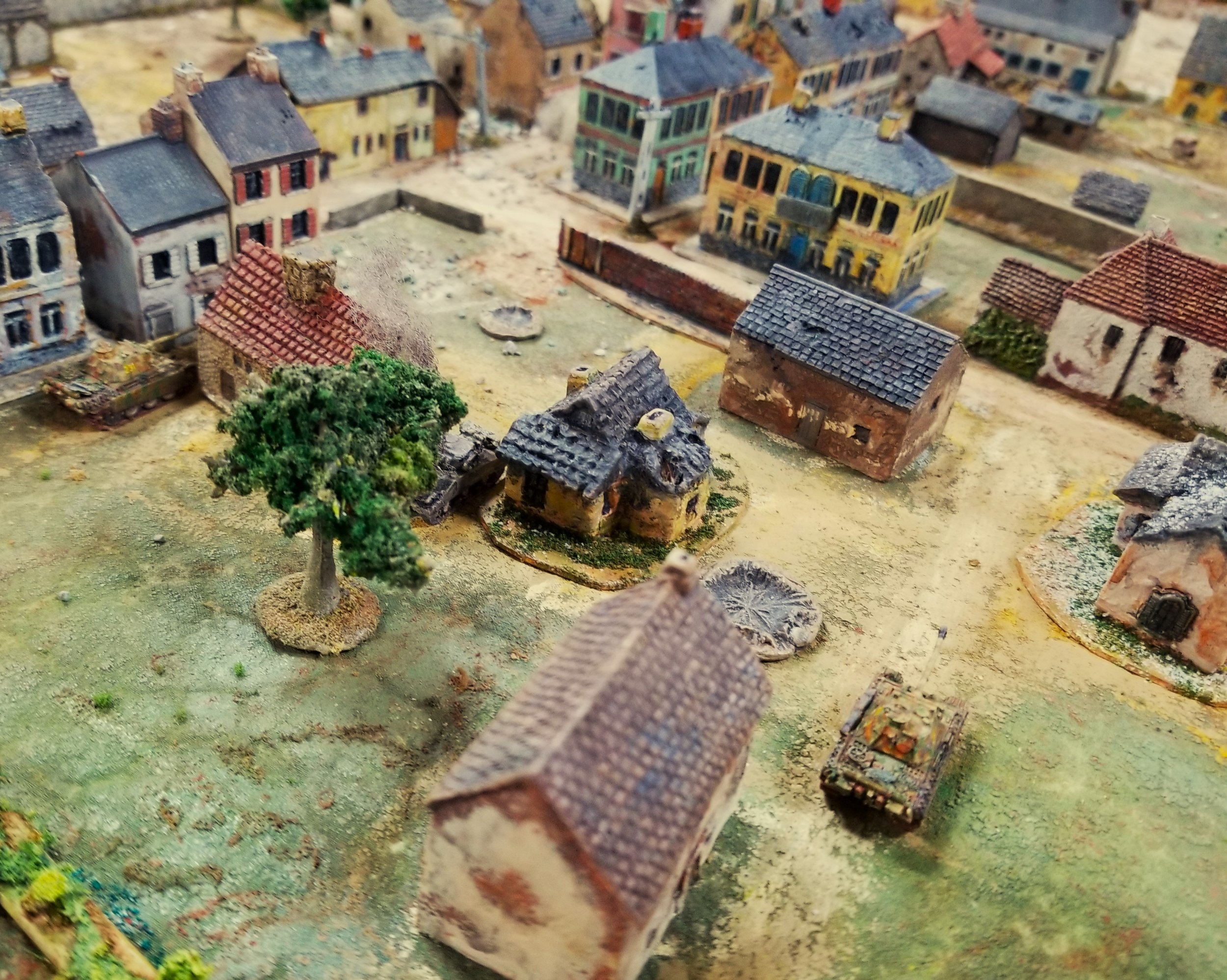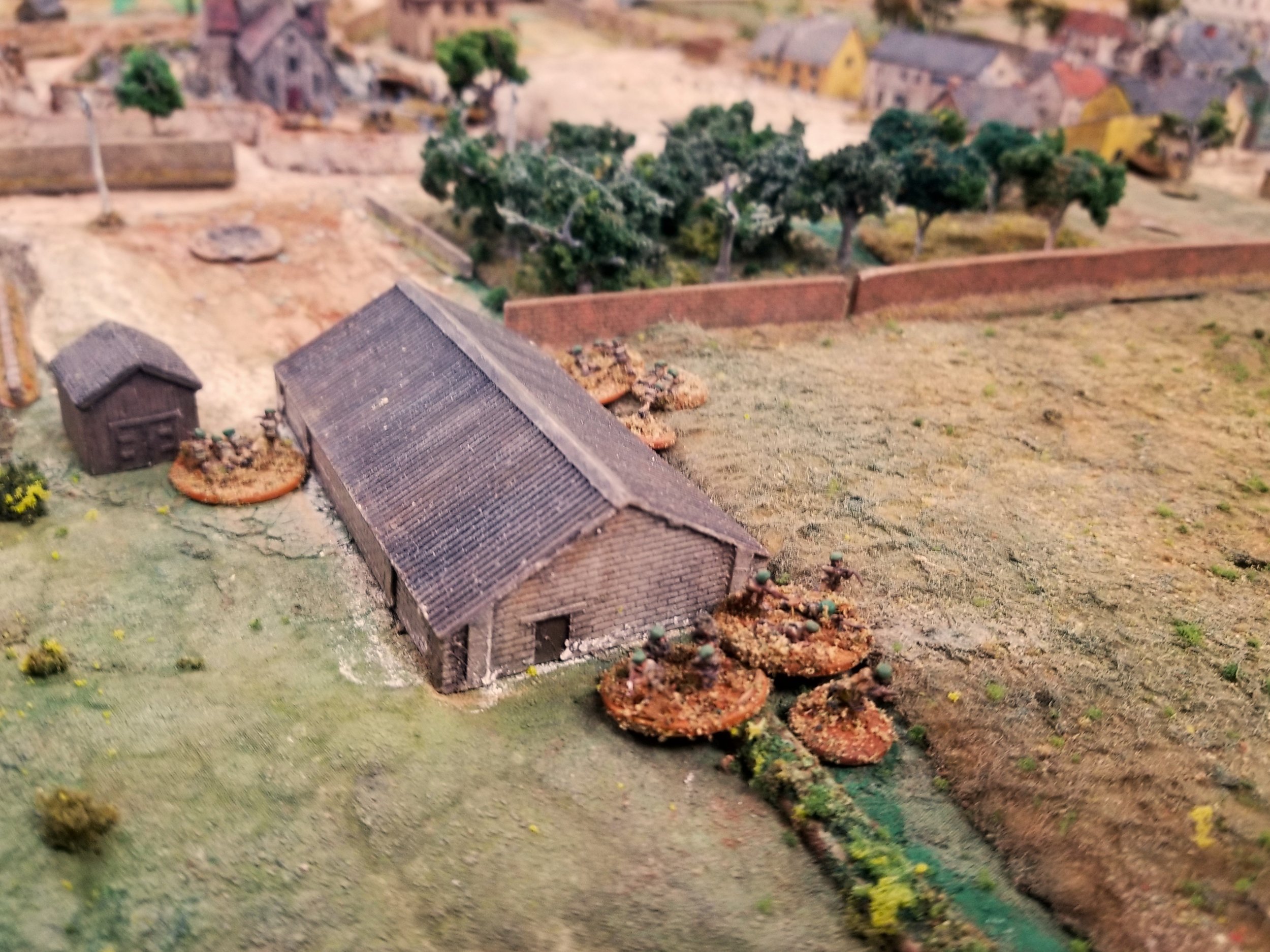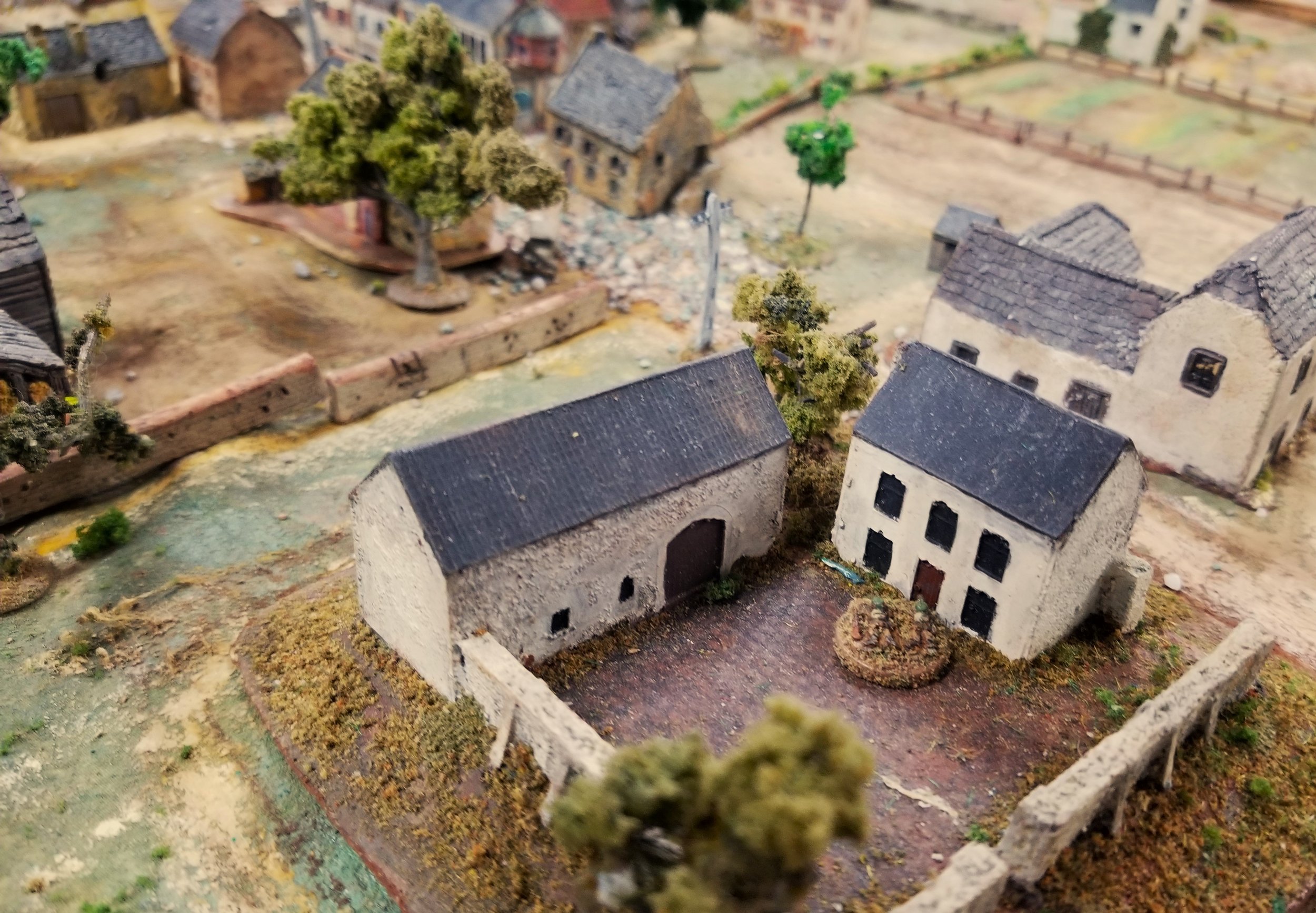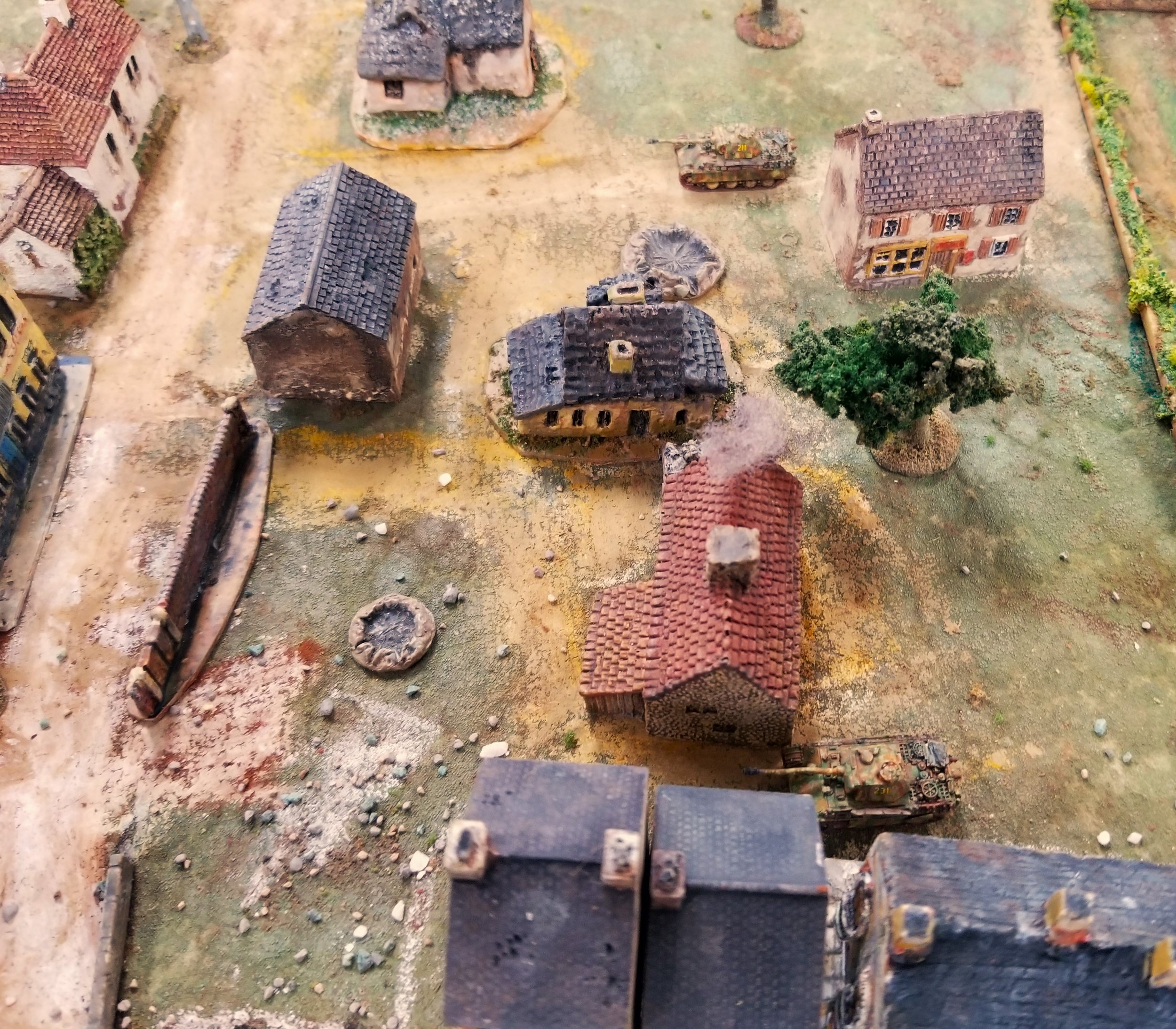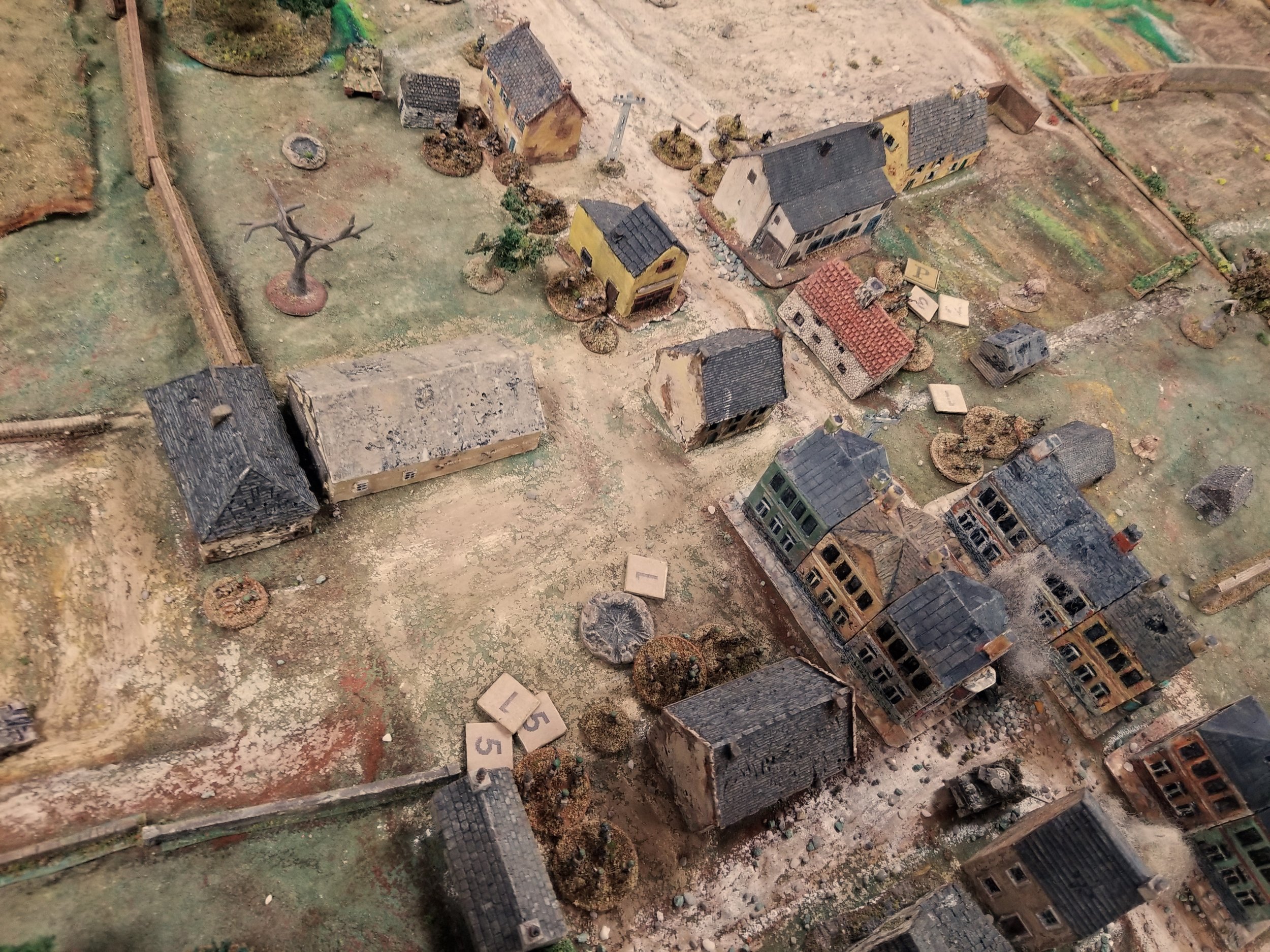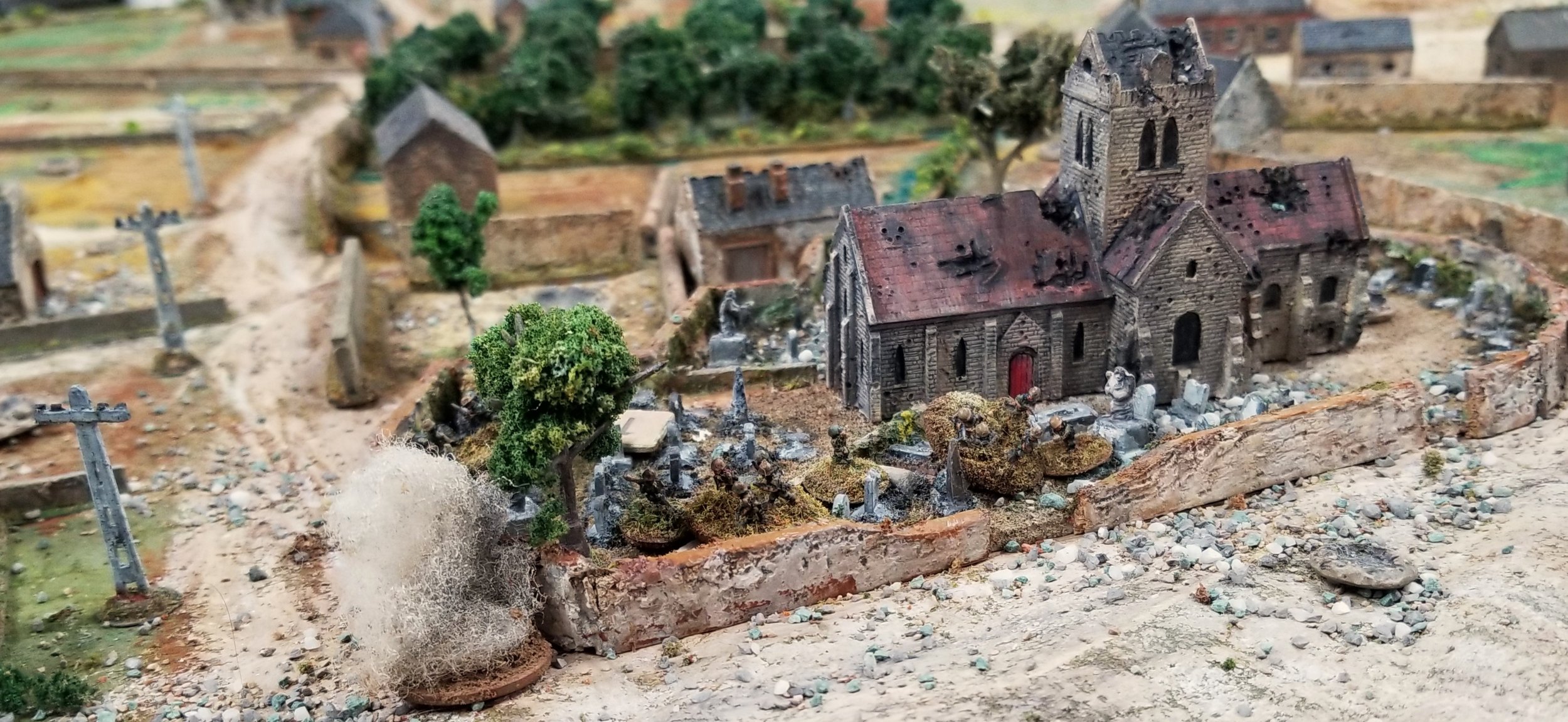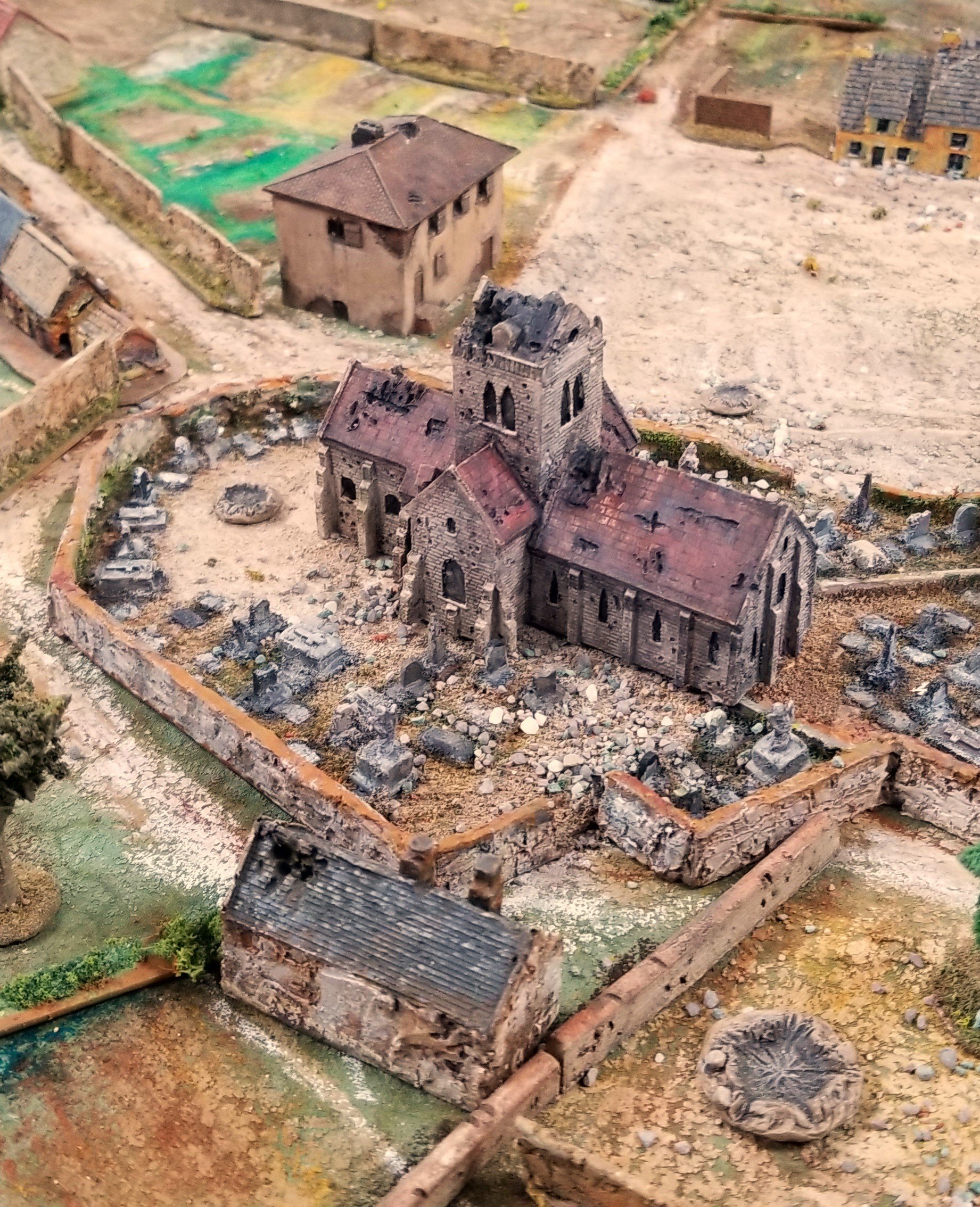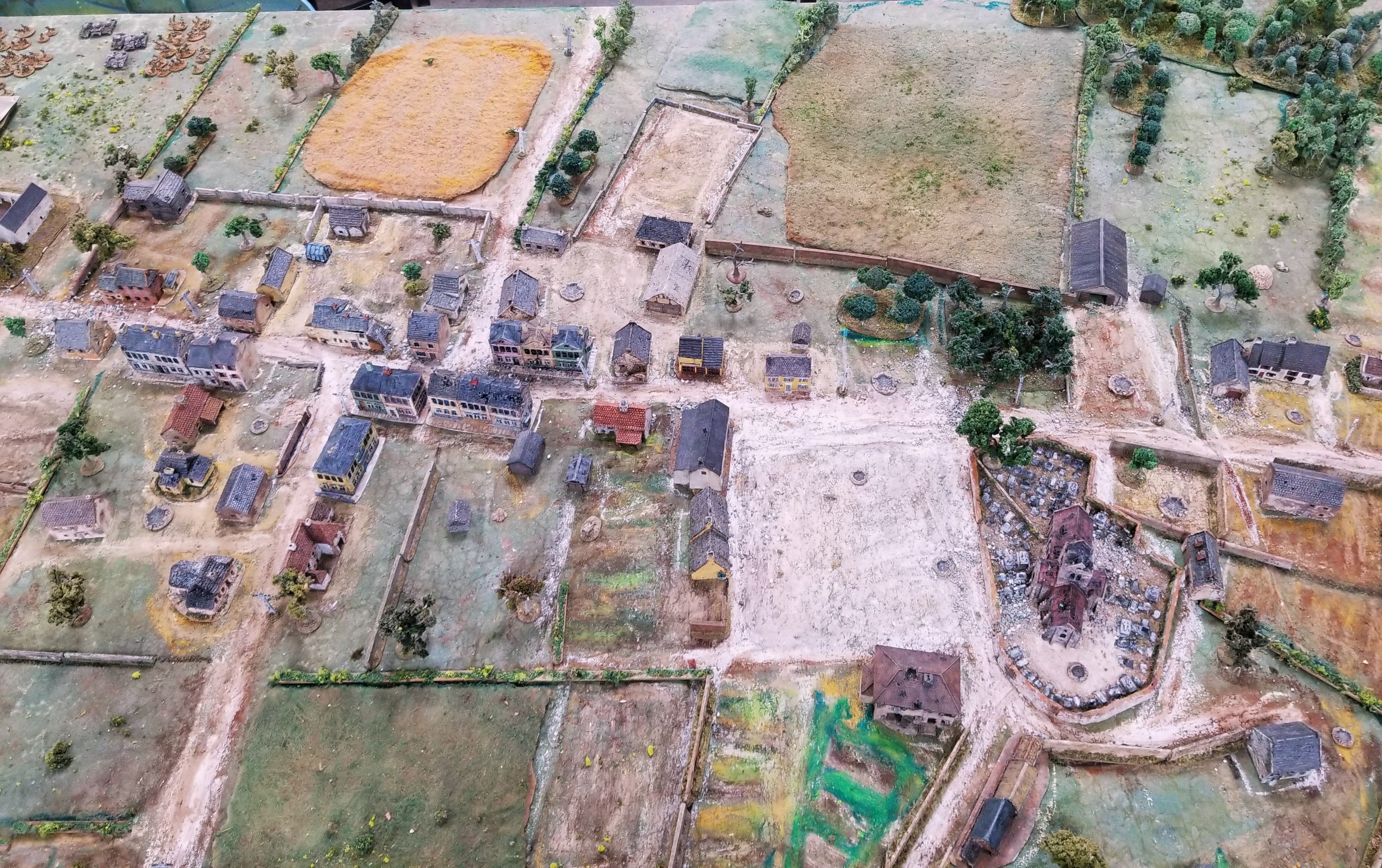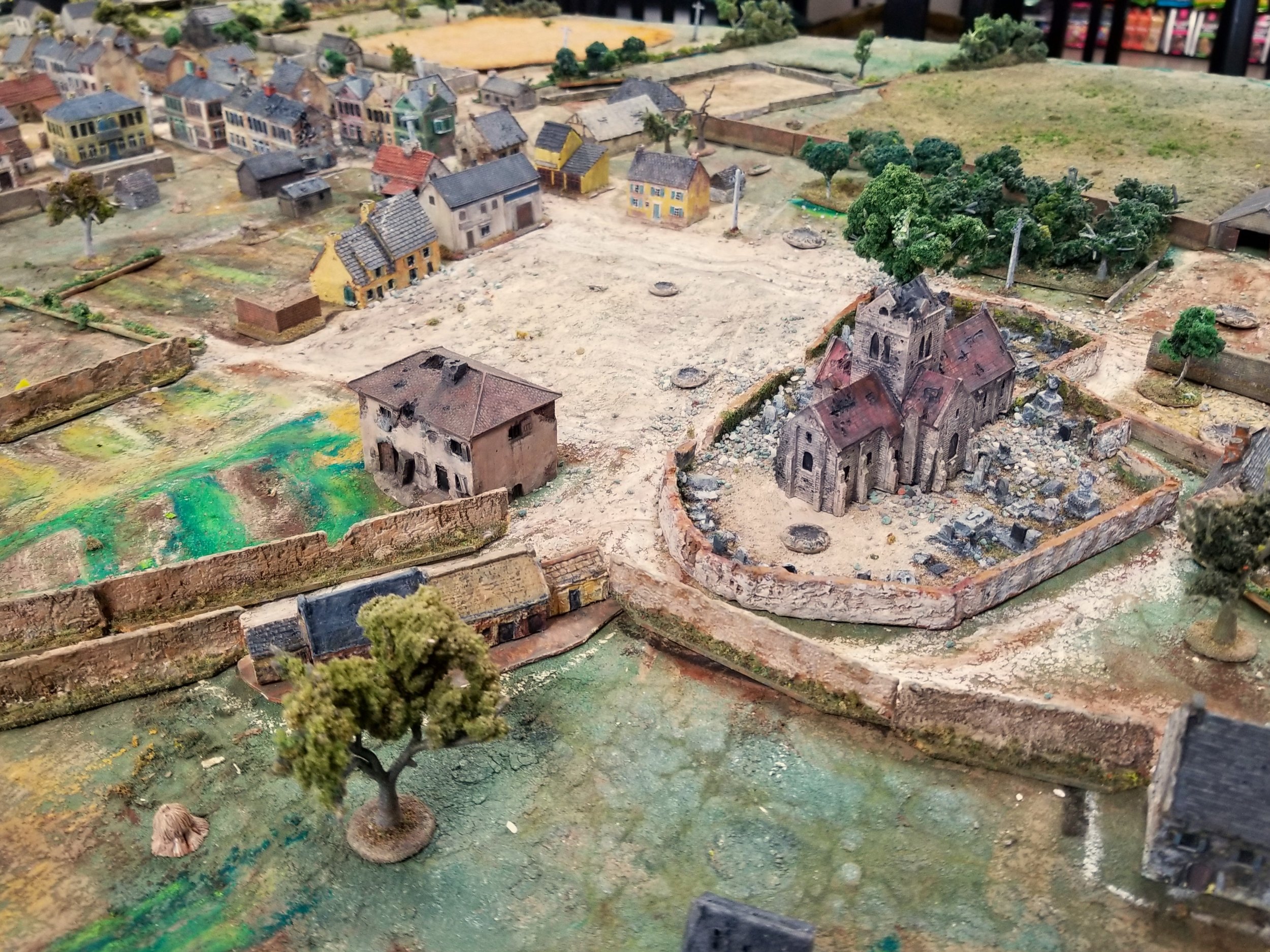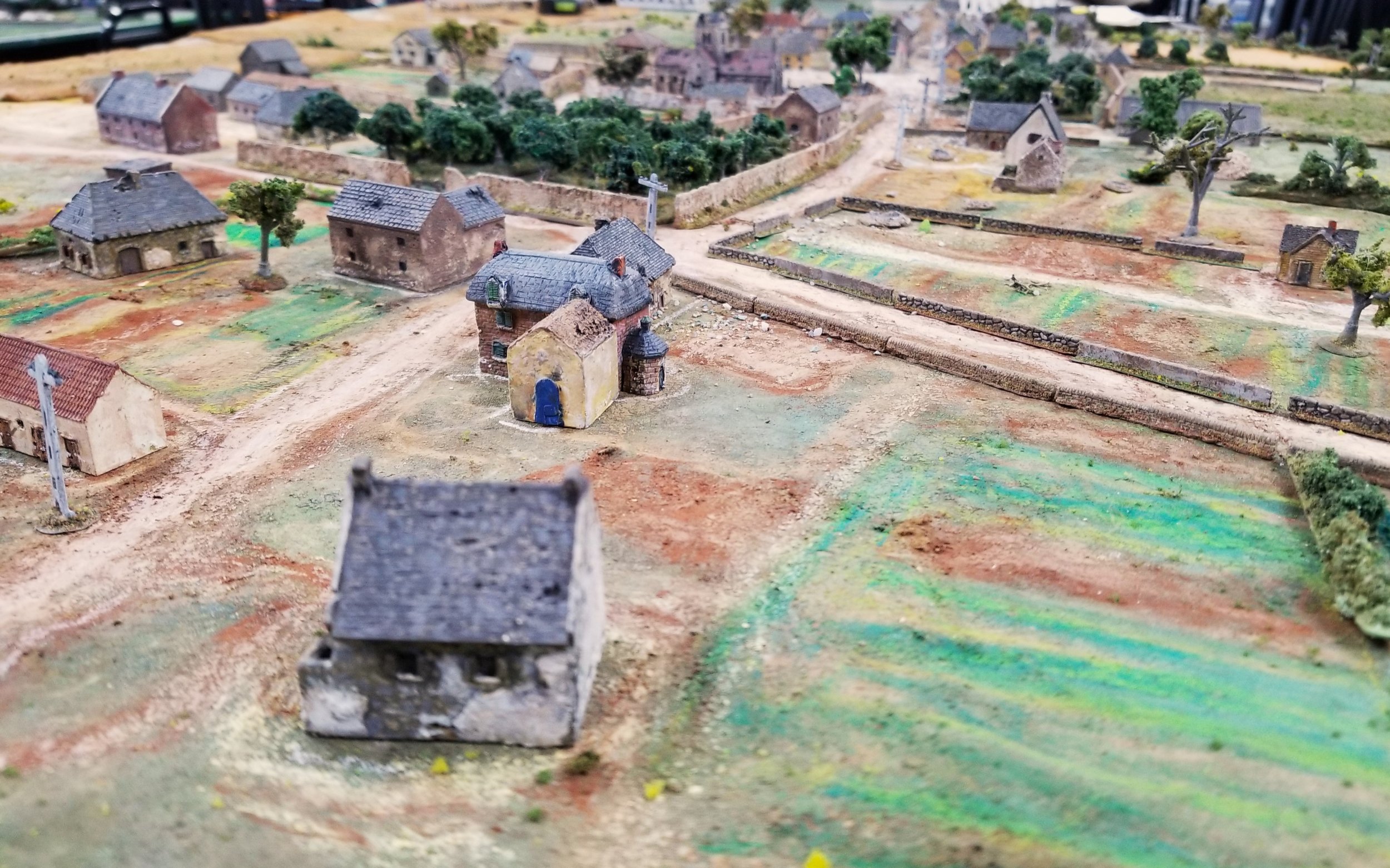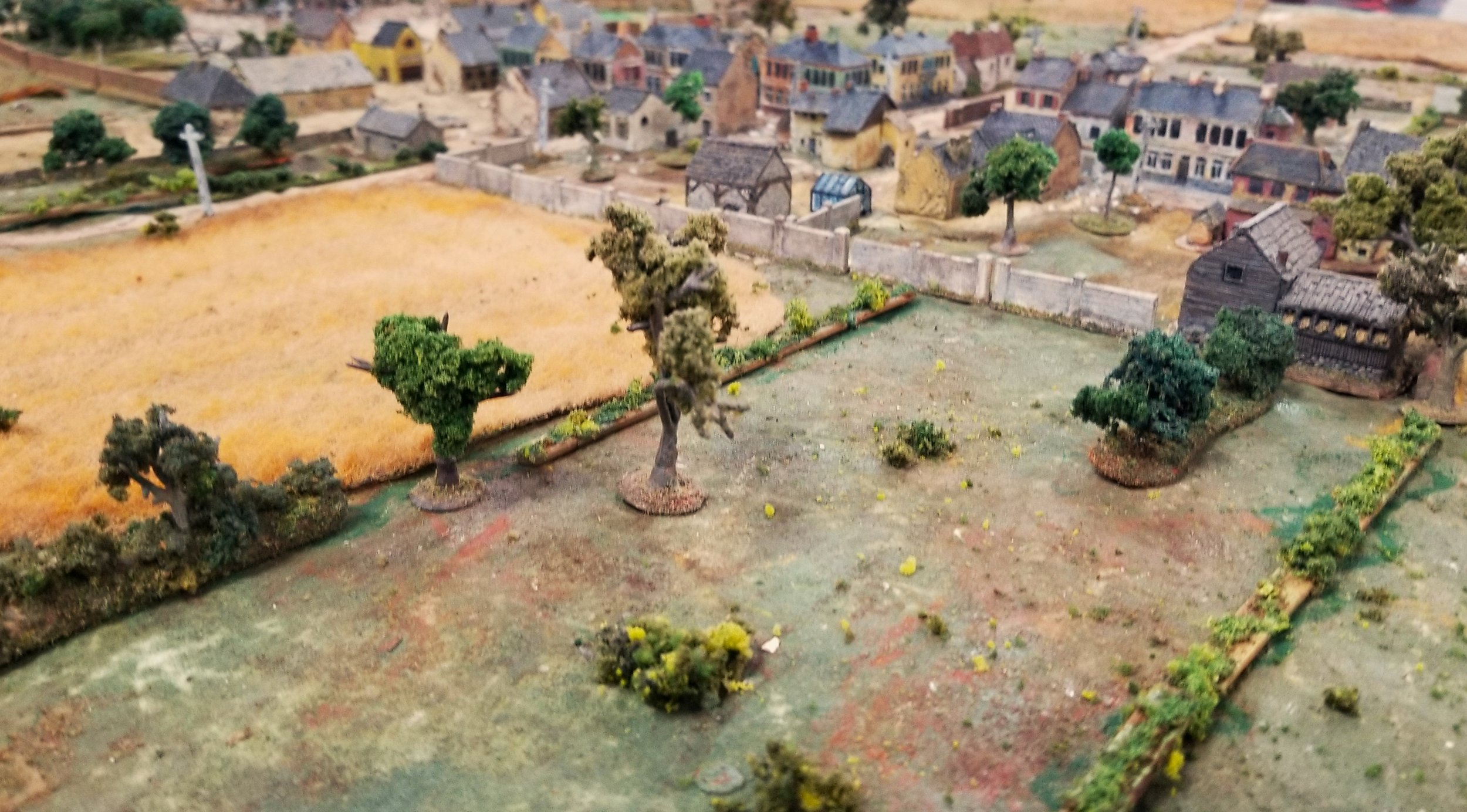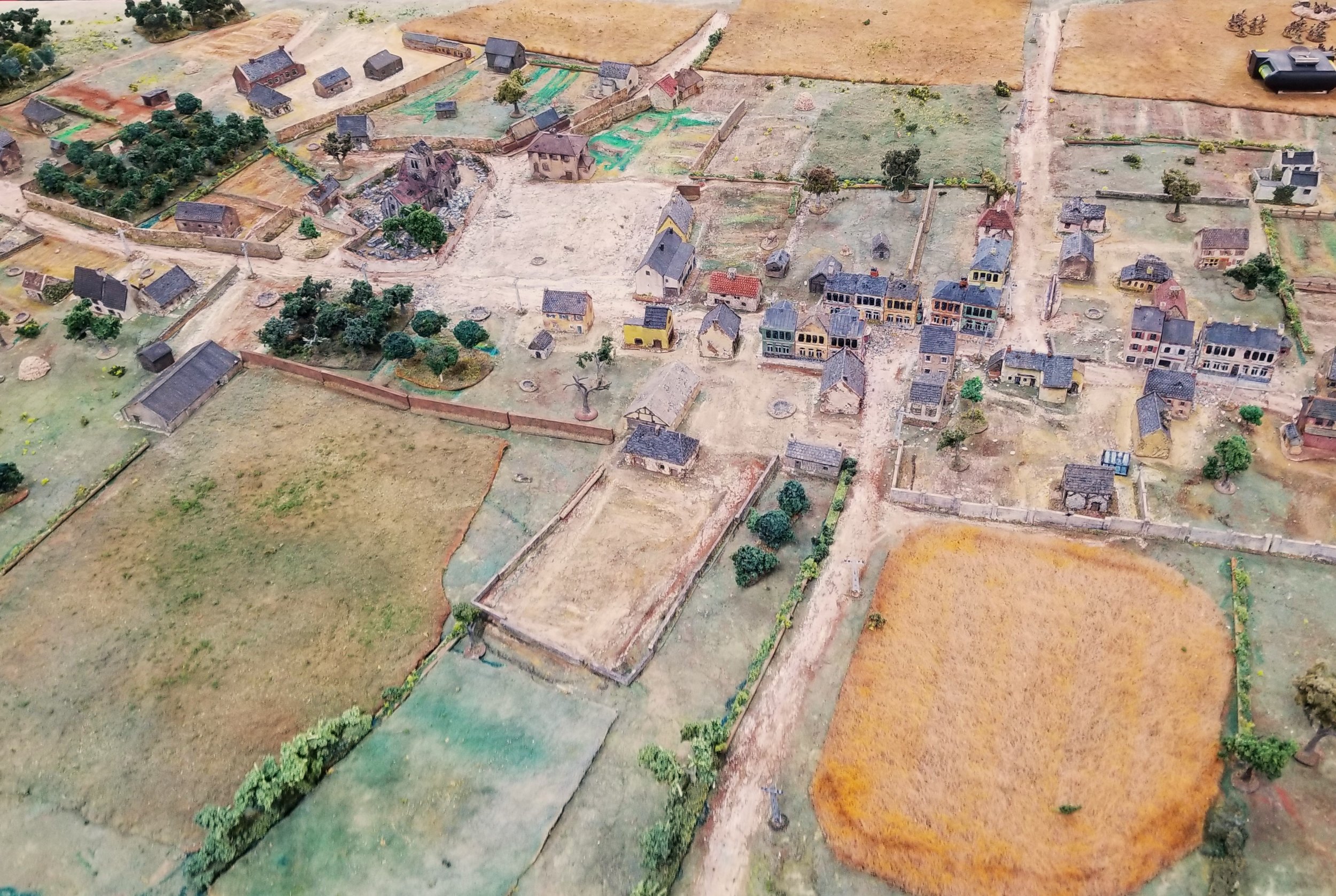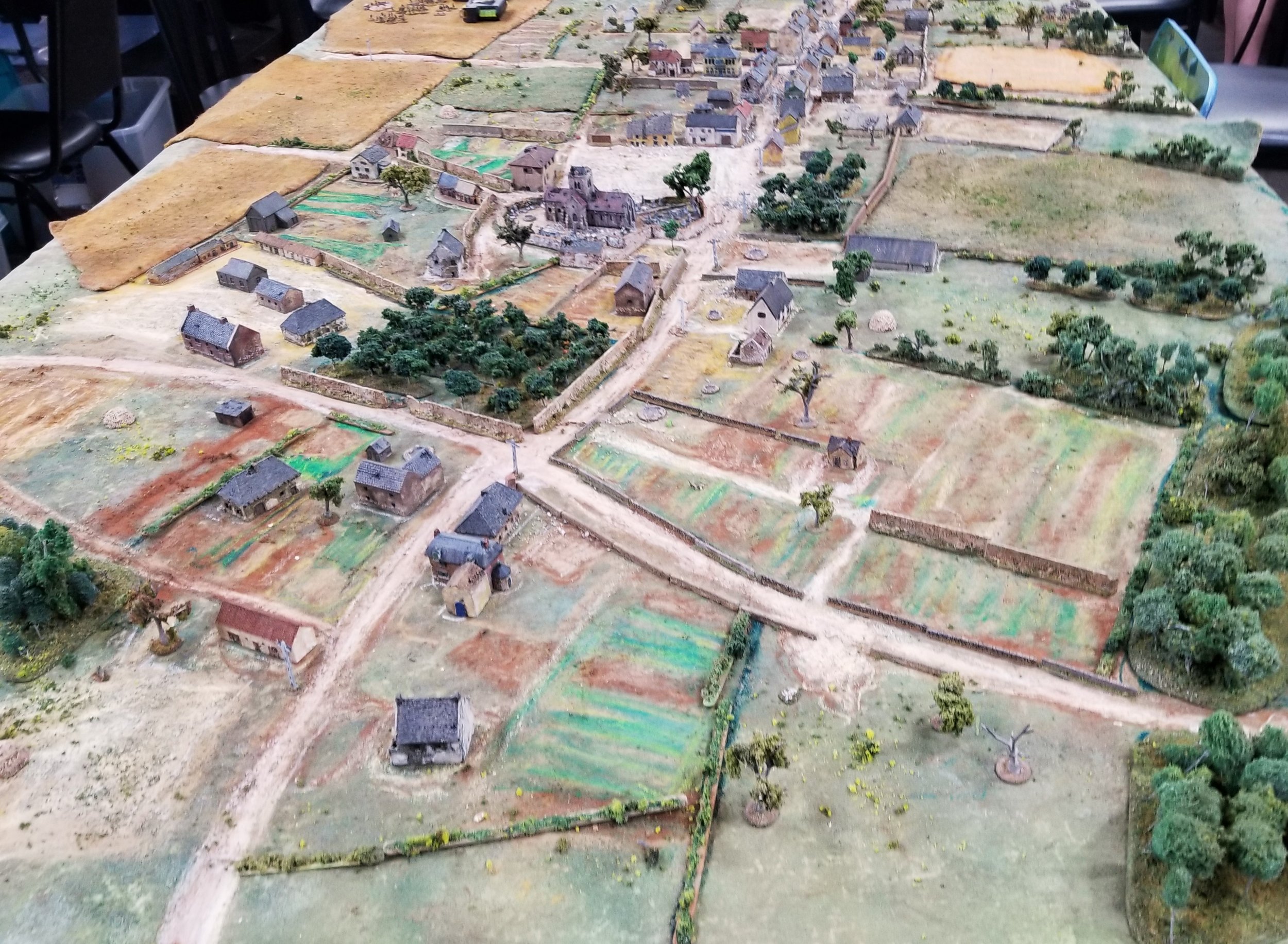Had the privilege today of playing a game of "I Ain't Been Shot Mum" on this beautiful table by Dan Albrecht. The scenario was Casa del Priolo, Sicily, 10 July, 1943. My partner Shane and I took on the role of the Italians, while Hunter Myers and his partner Jon played American paratroopers.
Sicily, 1943
The Italians began the game in column along a road. The paratroopers began in hidden positions, though we highly suspected they'd be manning the pillbox and trenches on our left. Our mission: Move our tanks off the opposite end of the board.
The first turn opened with our lead scouts, mounted on motorbikes, getting hammered by off-board artillery. Apparently the Navy had zeroed in on the road ahead of time.
To make matters worse, we stepped right into an ambush, with paratroopers firing from behind stone walls lining the road. One motorcycle squad made it through, one was destroyed outright, and the others were forced to dismount in order to return fire.
To our left, we brought on our first tanks, which we advanced along the base of the hill. The Americans on that side stayed hidden.
A short firefight ensued on the road while artillery exploded around both sides. The paratroopers, having dealt out some death, moved back to a gulley, giving them cover, and a route to the center of the board.
We kept advancing our tanks, keeping an eye on the top of the hill. Our infantry, to their left, arrived by truck atop the hill. Dismounting, they attacked the end of the trench line. Upon entering the trench, they were immediately hit by the buzz saw of a hidden machine gun nest, quickly halting that advance.
The paratroop commanders strategizing
On our right, the head of the column along the road collapsed, but we kept advancing. In the center, more truck mounted infantry arrived to support our tanks.
At about this point, my partner had to leave, so I was left to my own devices.
Thankfully, the artillery cleared a bit, or hit far enough away for a round or two to not cause issues for either side. I continued advancing the tanks and infantry below the hill, while the infantry along the ridge engaged the enemy. Some time around this point, a machine gun opened up from within the far pillbox, and paratroopers within the trench revealed themselves by opening up.
Responding to the new threat, the lead Italian tank engaged the pillbox, scoring hits with its machine gun. In a wonderfully cinematic moment, the infantry supporting the tanks leapt from their trucks, swarmed up the hill rifles blazing, and stormed the trenches, destroying a large number of the defenders and driving the rest away.
Here, the paratroopers began to pull back, moving toward or into the gulley on both sides. On the right, my motorcycle squad had dismounted and set up a machine gun, covering the end of the gulley. My infantry on that side moved forward, following their opponents into the small ravine.
As we cleared the top of the hill and the rest of the fortifications, the tanks came to a halt. In the center a bazooka team had revealed itself, bouncing a shot off the lead machine's armor. We swung our turret to engage.
More paratroopers began to reveal themselves, having been hunkered down in foxholes or taking cover in the gulley. Along the road, my second set of tanks arrived. Just in time for the artillery to open up again. The bazooka fired again, scoring a direct hit, but, miraculously, I rolled a save of four 6s, saving the tank.
Though randomized by dice, the naval artillery had an uncanny ability to land right on my deployment zone. One of the fresh tanks was temporarily immobilized, while a truckload of fresh infantry was destroyed.
Around this time, we had hit the five hour mark and called the game. The paratroopers, whose actual win condition was to withdraw a number of their troops in good order, had begun to complete their task, with one squad only a couple of inches from the table edge. While my tanks were able to advance about halfway up the board, I wasn't able to flank the paratroopers like I had hoped.
The naval bombardment, while dangerous for both armies, really did a number on both the opening and ending moves of the Italians. In the end, we decided that neither side really won, but neither lost either.
A very enjoyable and closely fought game.
Elroy Davis













